Green Week Special Issue

Are


Page 8


Are


Page 8
TRINITY COLLEGE DUBLIN STUDENTS’ UNION (TCDSU)
Gender Equality Officer Jenny Maguire led a protest demanding “trans healthcare now” at the Front Gate last Thursday.
Speaking at the protest, Maguire said that Ireland has the “worst [transgender] healthcare in the EU”. She said: “The waiting lists are too long and it’s killing trans people. LGBT people deserve equal treatment to everyone else.”
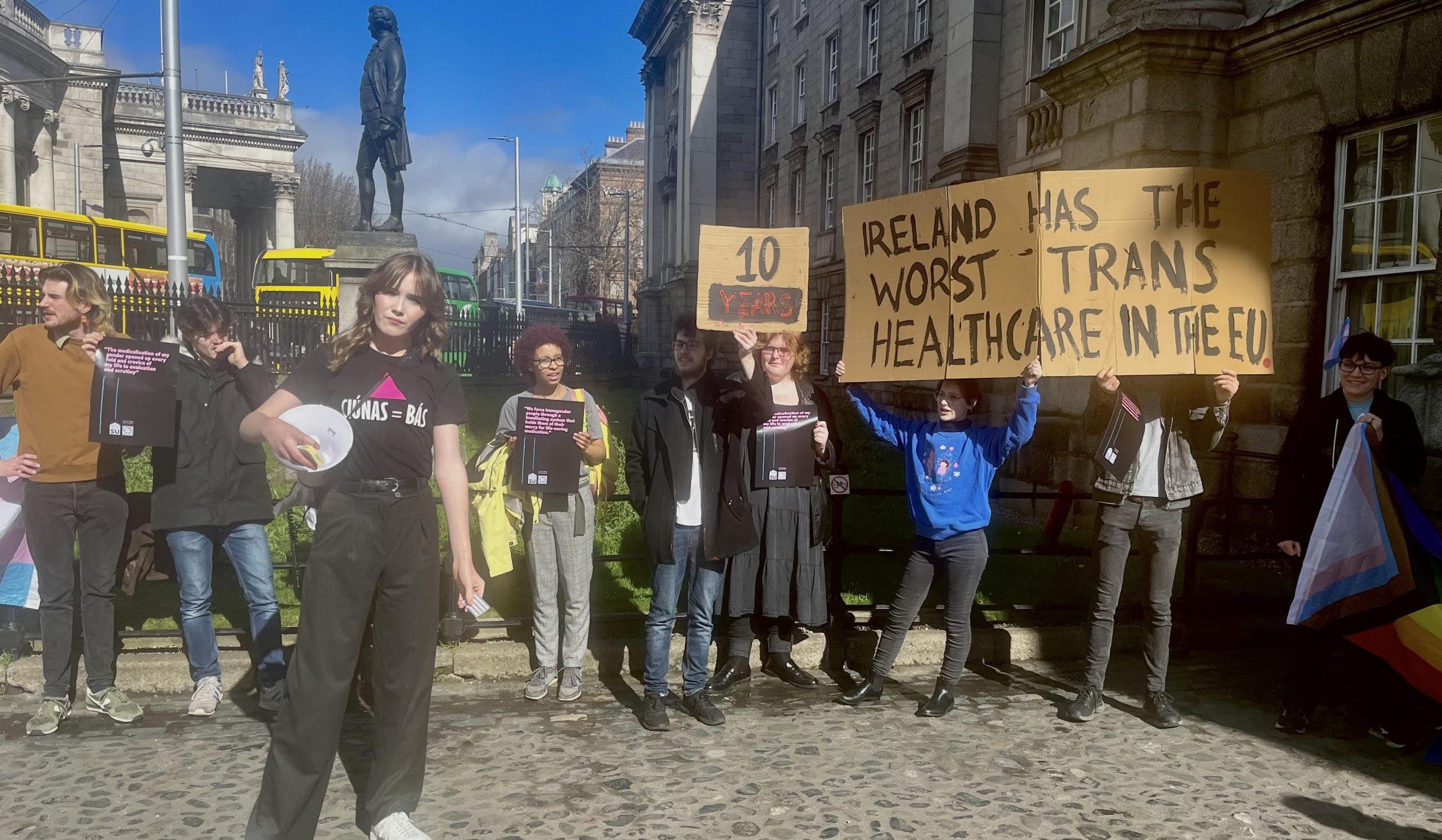
Maguire said that “the

chairs propose unprecedented merger
ShannonConnolly and
Ellen Kenny Editor, Assistant EditorTHE CHAIR OF THE CENTRAL SOCIETIES’ COMMITTEE (CSC) and the Chair of Trinity Publications have announced proposed plans to merge the capitated bodies.
In a press release to Trinity News, Chair of the CSC Tom Hegarty and Chair of Trinity Publications Jack Smyth announced plans to merge the bodies. The CSC is currently responsible for the funding of approved College societies, while Trinity Publications oversees the funding of 7 publications across campus, including Trinity News, along with annual associate publications.
The plans to merge will be put forward as a motion to both members of Trinity Publications and the CSC, which proposes to form a “joined working group with the goal of combining both constitutions and jointly proposing
healthcare that trans people need is the healthcare that everybody needs”.
“It’s unnecessary discrimination against trans people to gatekeep their healthcare away from them, as if they can’t make informed decisions for themselves.”
Maguire encouraged attendants to “tweet, email [and] send letters to your TDs”.

TCDSU Communications and Marketing Officer Julie Smirnova and Welfare and Equality Officer
Chloe Staunton unveiled a handmade trans pride flag from the front window of Regent House.
Speaking to Trinity News after the protest, Maguire said that College needs to “properly support its students”.
Maguire called out the “lack of gender neutral bathrooms and signage”, explaining that it has “left people, myself included, just wondering where we need to pee”.

“Students are given unnecessary stress and harm for absolutely no reason. College needs to look inside first, but also needs to stand alongside the trans community in the fight for the informed consent model for healthcare.”
Maguire, who organised Gender Equality Week as part of her role as Gender Equality Officer, said she wanted to emphasise that “the fight for trans rights is the fight for gender equality”, and that “we need to keep in mind the intersectionality of all varying issues”.
Maguire also said she hopes that TCDSU can “expand the T-Fund”, which provides financial support to students trying to transition.
According to Maguire, who previously served as LGBT Rights Officer, the T-Fund is currently €1,000 per semester, but the Union “would get so many submissions that you were giving out cents to people because that’s all you could give them”.
Earlier this week, TCDSU marked the beginning of Gender Equality Week by unveiling a large-scale poster outside the Arts Building highlighting the inadequacies of trans healthcare in Ireland.
Continued on page 3>>
we really “in love with local”? Page 4 Going zero-waste for a week
...and an interview with the Green Party’s Kate Ruddock All inside Life Pullout
Kennels
News Features
Poll results: What students think about Irish unity
Analysis: Trinity’s 21st Green Week event
- page 21
People must learn how to recycle their disposable vapes
- page 18
Exorcisms on the rise
>> Continued from front page
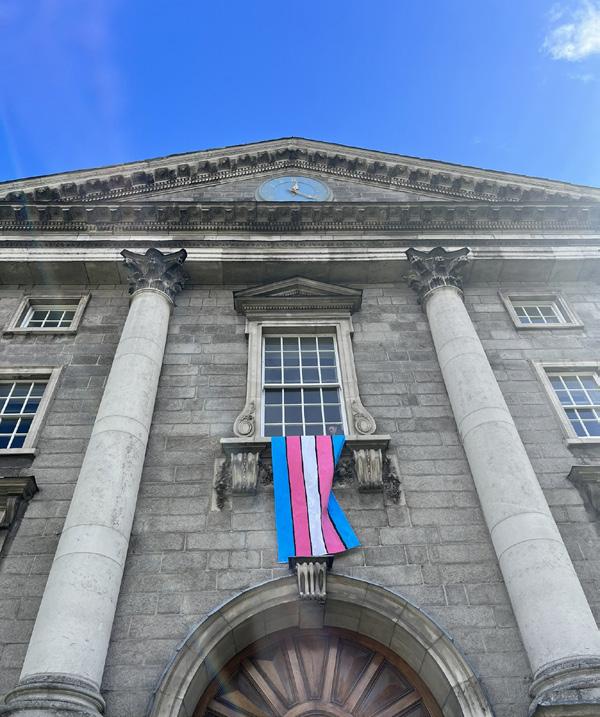

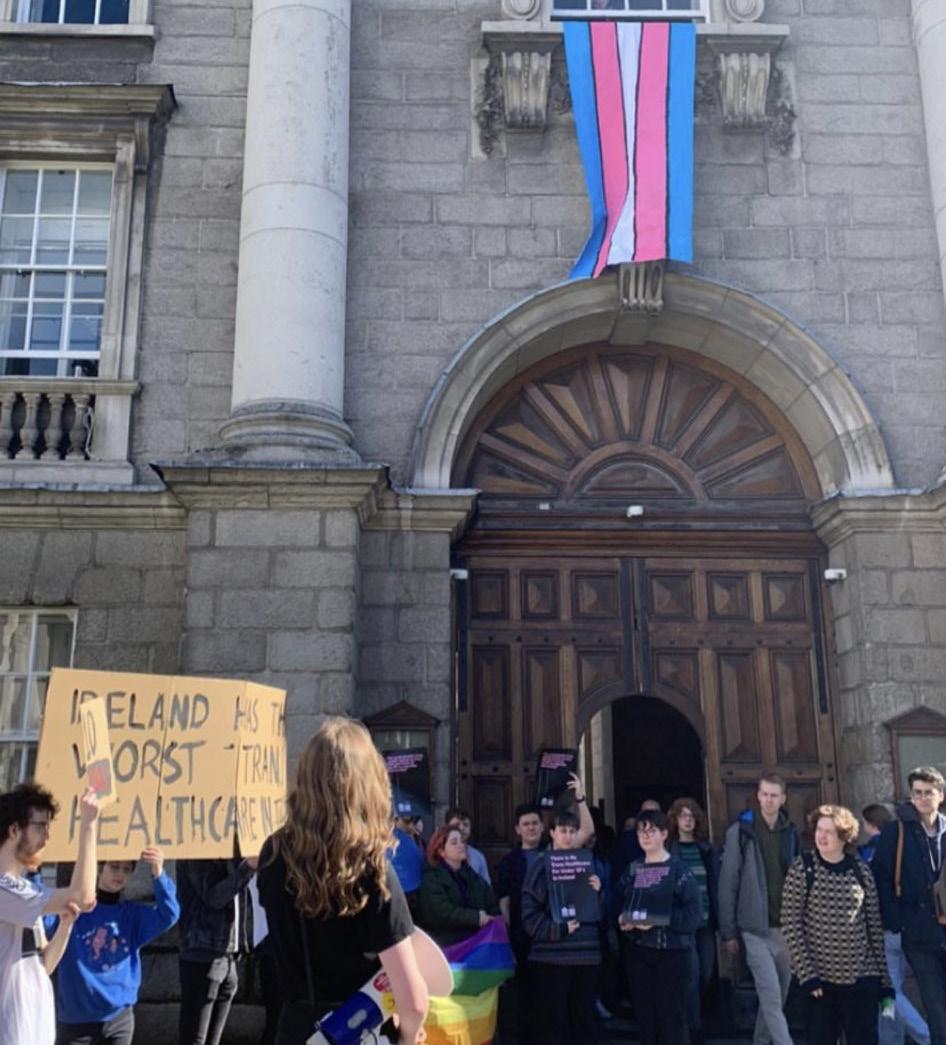
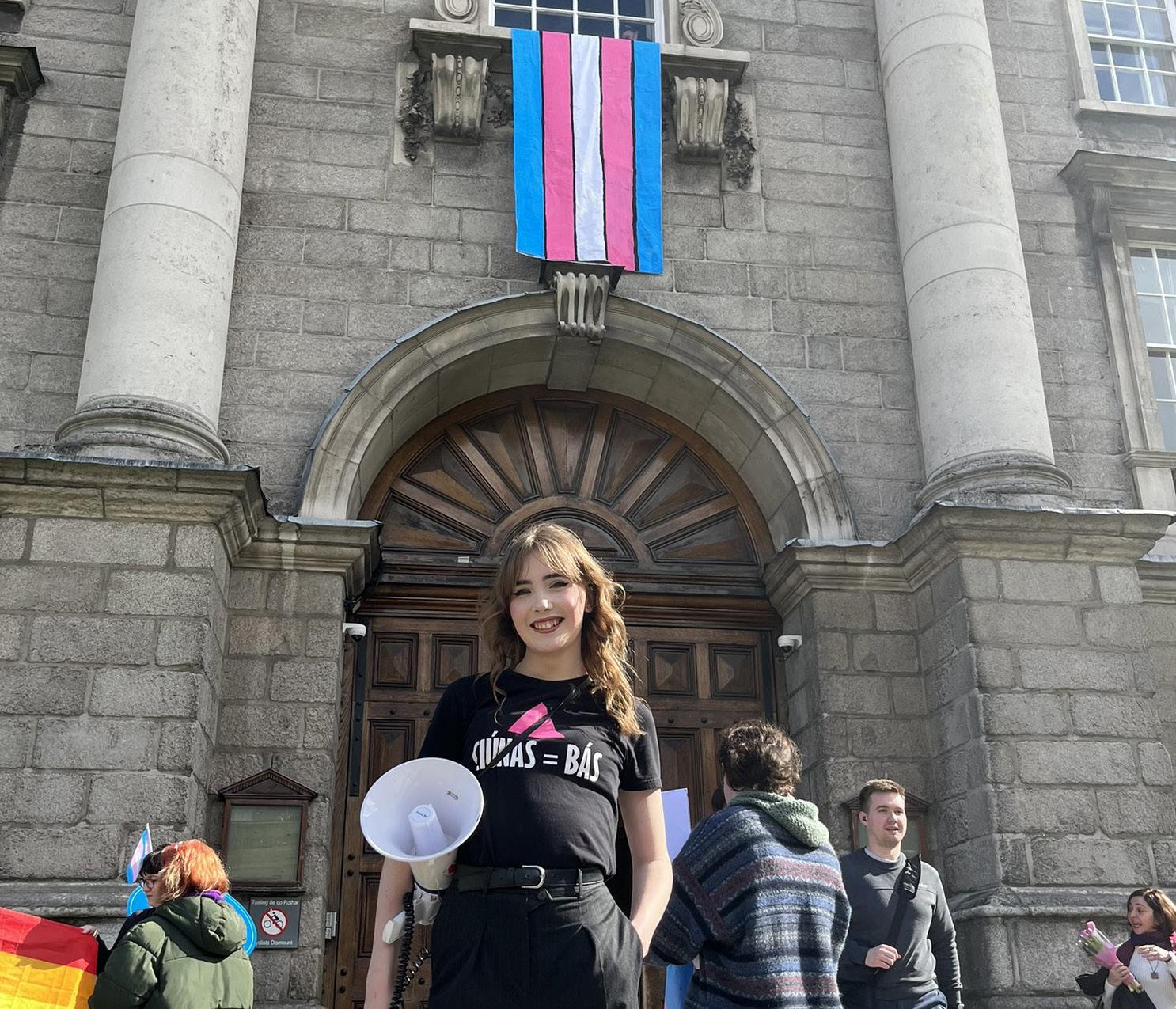
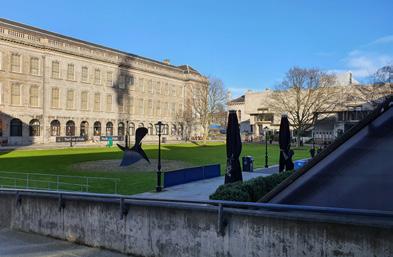
In 2022, Ireland was ranked as the worst healthcare provider for transgender people in the EU by Transgender Europe (TGEU), an
EU-funded network of more than 200 trans-rights organisations. Ireland scored one point out of 12 based on six criteria, including the
type of transgender healthcare and coverage available in the country and the youngest age someone can access hormonal treatments.
- page 31
Don’t let the flu get you blue
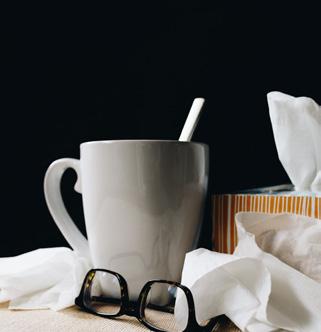
Ian Garry: Irish IMMA star

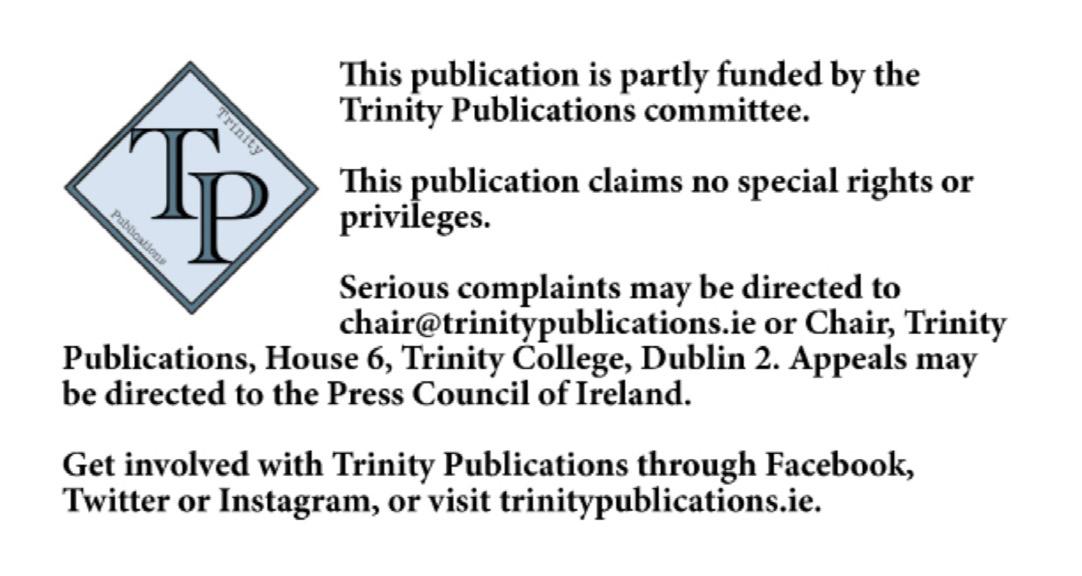
Editor
Deputy Editor
Assistant Editor
Managing Editor
Online Editor
Online Editor
Life Editor
Deputy Life Editor
News Editor
News Analysis Editor
Features Editor
Comment Editor
Scitech Editor
Sport Editor Chair of Gaeilge Board
Head Photographer
Head Videographer
Head Copyeditors
- page 28 Get
Shannon Connolly
Kate Henshaw
Ellen Kenny
Eva O’Beirne
Shannon McGreevy
Adam Balchin
Ella Sloane
Ella Bleu Kiely
David Wolfe
Aidan Cusack
Lara Mellett
Abby Cleaver
Lauren Vrbanic
Séaghan Ó Domhnalláin
Holly Níc Thomáis
Fern Kelly
Marianna Mora
Finola Murphy
Ruth McGann
The service will take place on Thursday, March 3, in the College Chapel
Aoibhinn Clancy Staff writerAN INTER-FAITH ACT of remembrance will be held in the College Chapel on Thursday, March 23, in memory of those who donated their remains to Medical Science.

The ceremony, which will last approximately 45 minutes, is an opportunity for staff and students to express their gratitude. Each donor’s name will be read aloud, and a candle will also be lit in their
memory. This ceremony is held every three years.
A statement by College regarding the event said: “This ceremony is a tribute to those who in death have served the living.”
Music alongside religious and secular readings will be read out by the donors’ families, the Chaplains, the Chapel Choir, staff and students to create “a truly fitting acknowledgement to the donor community.” There will be a reception afterwards in the Atrium.
The 1832 Anatomy Act regulates Medical Donation and the Inspector of Anatomy oversees the donation of human remains. The donation of remains to Medical Science must be made by the person themselves, and donors may withdraw their donation at any time. The remains are held for up to three years after receiving them and are interred according to the donor’s wishes and in
consultation with the family.
January 2000 saw the commission of the Book of Remembrance to honour those who have chosen to donate their bodies to this cause. The first Act of Remembrance and Thanksgiving ceremony was held on 10 May 2000. The ceremony has been held every three years since its conception.
A Relatives Room was created in June of 2011 to allow family and friends of those who chose to donate their bodies to the medical science and teaching at the Anatomy department at the Trinity Biomedical Sciences Institute.
College’s School of Medicine established this in order to allow “the bereaved family with some consolation as they have the opportunity to say goodbye to their loved one.” The Book of Remembrance is available to view in this room by appointment.
>> Continued from front page
the newly formed Trinity College Dublin Societies & Publications (TSP)”.
In a separate meeting last week with Trinity News, Smyth and Hegarty claimed that the vote was not on whether a merger between the two bodies would go ahead; the vote would pertain to the establishment of a sub-committee to explore the possibility of merging the two bodies.
In their press release two weeks ago, Hegarty and Smyth said: “Today, the CSC and Trinity Publications announce plans for a mutually beneficial merger to create TCD Societies & Publications (TSP), a single capitated body incorporating both pre-existing entities.”
The press claimed that among the “benefits” of the merger would be a stipend for the Chair of Publications, who would become an “Officer of the TSP”.
Earlier this year, the CSC voted to provide a stipend of €200 a week to its three officer positions, chair, secretary, and treasurer.
The press release also outlined that the “ring-fenced finances” of Trinity Publications “will be in the
hands of trained CSC staff”.
The press release claimed that the “journalistic and media freedoms of Publications will be retained under the TSP”, a freedom that is already held by publications under current arrangements.
Members of the Trinity Publications Committee, the editors of the six of the publications funded by Trinity Publications, were not consulted on the merger prior to the announcement. The Editor of Trinity News was the only editor made aware of the proposal prior to the press release.
Executive members of the Trinity Publications committee were officially informed of the proposal by email the day beforehand. This includes the Treasurer, Alumni Officer, Public Relations Officer and Amenities Officer.
The press release stated that Trinity Publications has been “plagued by a myriad of difficulties for a number of years”.
They continued: “This is largely due to Publications being the only capitated body on campus that is run entirely by students on a voluntary basis. While this
independence can be liberating for student media, it is too much work to ask of full-time students.”
“We are of the opinion that Trinity Publications has a duty to protect its legacy and for this reason we propose this merger,” Hegarty and Smyth said. Trinity News understands that only Executive Officers of Trinity Publications were informed of the proposed merger, and that editors of the funded publications were not consulted about the merger prior to the press release.
According to Hegarty and Smyth, the CSC has “consistently been a stable institution”: “With three staff members alongside its paid student officers, it has been able to effectively fund, support, and advocate for student society life.”
“Our role in the merger is one which looks to strengthen student life on campus. With student societies and publications already so intrinsically linked, we are open to supporting Publications financially and administratively through this merger.”
Speaking to Trinity News regarding the press release, Trinity
Publications’ Public Relations Officer (PRO) Ella Sloane said: “Upon enquiring further today about the press release Trinity Exec were told (yesterday) to expect to be released soon and requesting details of when this would happen, Jack shared it with me this afternoon.”
Sloane confirmed that as PRO, she was informed of the joint statement being released this evening, “as of a few hours ago”.
If the motion is passed by both the CSC and Trinity Publications, a subcommittee will be formed to write a joint constitution for the new body.
In an email to their editors, the Chair of Trinity Publications claimed that the merger would provide benefits to the publications, including “increased publication funding, aid with accounts and audits from professional fulltime Trinity staff [and] access to a multitude of new equipment”.
Smyth also said that this merger would guarantee “retention of journalistic standards, retention of the Trinity Publications Executive and Committee “unimpeded” [and] increased grant funding”.
He noted that the merger would provide a paid position for the incoming Chair of Publications for the 2023/24 academic year, and a sabbatical position for the head of the TSP. Any student can be elected head of the TSP.
The Trinity Publications Committee is one of Trinity’s designated capitated bodies alongside Trinity College Dublin Students’ Union (TCDSU), the Central Societies Committee (CSC) and the Sports Union. They receive funding from College to support student-run publications across campus, including Trinity News, Icarus, TN2 Magazine and The Piranha.
Trinity News has contacted the editors of all Trinity Publications affiliates for comment.
Trinity Publications is expected to vote on the proposed establishment of a sub-committee this evening, Tuesday, March 21.
The group are aiming to pressure College to reverse the Buttery’s policy of kicking out students who bring their own food to the restaurant space
David Wolfe News Editor(S4C) held a sit-in of the Buttery on Thursday, while calling on students to boycott the canteen’s catering services between 1pm-2pm.
The group are aiming to pressure College to reverse the Buttery’s policy of kicking out students who bring their own food to the restaurant space by “highlighting how damaging this is to us as a college community”.
Though a number of groups crossed the picket line by ordering from the counter, short queues indicated that the boycott, announced the week before, had gained some level of support among the student population.
A group of around a dozen students participated by gathering in the Buttery, eating food brought from home or bought elsewhere.
S4C chairperson László Molnárfi highlighted that the policy of kicking students out is a new one, which contrasts with previous policies which allowed food to be brought in from outside.
“The fact that this policy wasn’t in place for years shows that it is possible to be financially viable [while also allowing students] to bring in their own food.”
Speaking to Trinity News, Molnárfi said he was “not at all” disappointed with the turnout, also highlighting the short queue and empty seats around the canteen area.
Molnárfi, who is also presidentelect of Trinity College Dublin Students’ Union (TCDSU) added that the protestors were “making friends and chatting and having a good craic”, noting that he was “very happy” with the turnout.
“The Buttery should be an inclusive place for students and
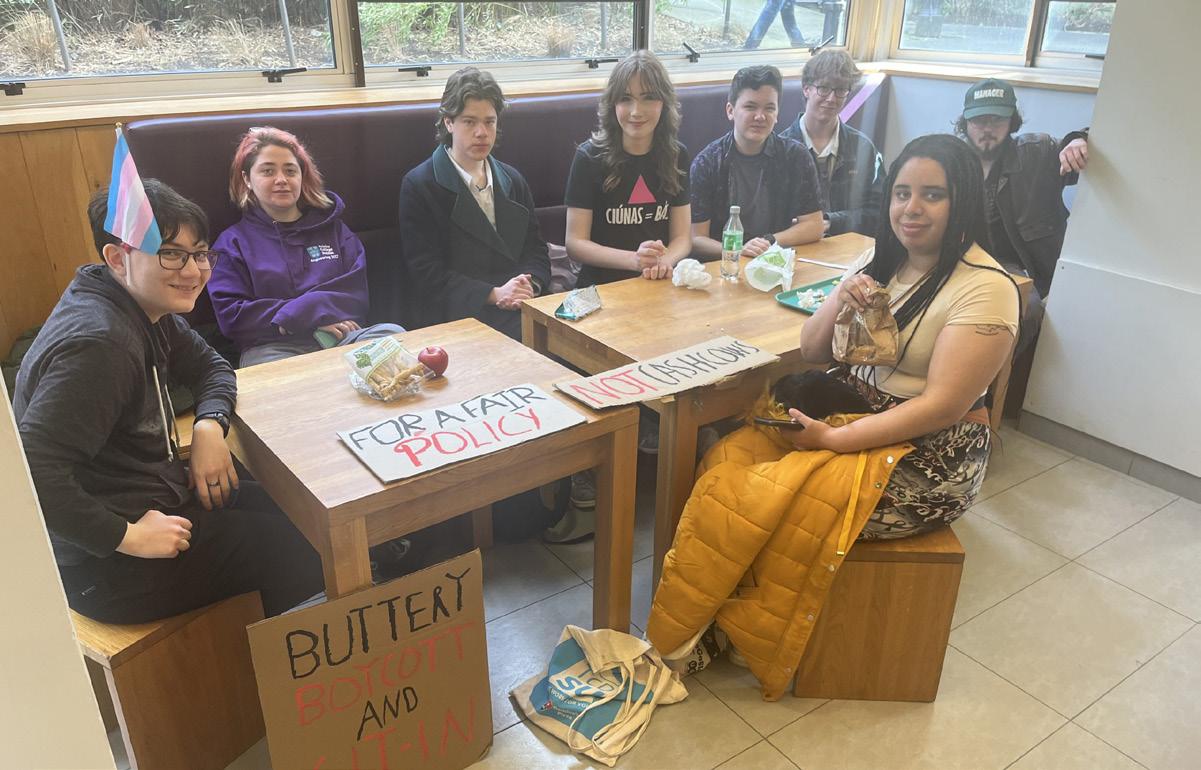
staff and that is what we want to achieve.”
Outlining how he will continue to push for the reversal of the policy as TCDSU President, Molnárfi indicated plans to push the issue in College committee meetings, indicating that he intends to balance “grassroots” student protest with constructive committee work.
“I will highlight how damaging this is to our community also within different committees and worked with the Director of Student Services and with other key stakeholders within committees to push this issue.”
TCDSU Gender Equality Jenny Maguire, who attended the sitin, said: “Students should be able to actually be in their College, they should be able to eat in their college, they should be able to use student spaces without having to spend an extortionate amount of money.”
She added that with the cost-ofliving crisis, “students don’t have a choice but to make their lunch at home”.
“They should be able to sit inside and not worry about getting attacked by seagulls.”
Senior Fresh student Buster Whaley said that as an international student who pays
significant tuition fees, it’s “pretty ridiculous, I can’t come in, I can’t enjoy a ham and cheese sandwich of my own making in the school cafeteria, the designated space.”
Junior Sophister Jared Reilly criticised College for separating “who’s able to occupy certain student spaces”.
He added that with “so many other kinds of pressures on the student experience”, such as the housing crisis and fee increases, “it seems really unreasonable to keep with this kind of policy of segregation”.
Reilly said that while he has not been kicked out himself before,
the policy has made friends who have been kicked out before uncomfortable to “go into that environment again, which is kind of really upsetting in a way because it’s supposed to be a common students base, and it’s not great for certain students to feel excluded”.
TDCSU yesterday announced their support for the S4C protest saying: “It seems obvious that students should be allowed to eat their own food in all college spaces.”

It remains difficult to say whether a long-term policy of support for Irish unity would pass in a TCDSU referendum
David Wolfe News EditorIN A POLL CONDUCTED LAST MONTH BY TRINITY NEWS, 74% of Trinity students who expressed a preference said they would vote in favour of Irish unity if a referendum were held tomorrow, though almost a quarter of students expressed uncertainty.
While 54% of total respondents indicated their support for a potential referendum, almost a quarter of respondents (24.2%) said they didn’t know how they
would vote, while 16.5% would vote against, and 3% would not cast a ballot.
Despite a dominant majority of decided voters in favour, it remains difficult to say whether a long-term policy referendum for Trinity College Dublin Students’ Union (TCDSU) to campaign for Irish unity would pass.
Though we can say with 95% confidence that at least 70% of decided students favour Irish unity, this may not translate to the same level of support for committing the union to a long-term policy of support for reunification.
A motion to bring this to referendum was brought to TCDSU Council last month, where some members argued that though they supported a united Ireland, committing the union to blind support for unity could be “dangerous”.
Likewise, a long-term policy requires a 60% threshold at referendum to be adopted.
Among specific parties, support for Irish unity was predictably highest among students who said they would vote for Sinn Féin in a general election, at 75.6%, with People Before Profit–Solidarity
next, at 72.29%. Together, these two groups made up a third of total respondents. Support for Irish unity was significantly lower among other broadly left-wing parties, sinking to 48.6% among Labour supporters, and just 40% among Greens. Support for the Social Democrats, the most popular
party overall, correlated 55.9% with support for Irish unity. However, uncertainty was greatest among these parties, hovering around 30% for each, twice the proportion of “don’t knows” among Sinn Féin voters (14.%). This indicates that Irish unity is not a priority for many centre-left students, or that they
do not give it much consideration. An equal proportion of Fine Gael and Fianna Fáil supporters said they would vote in favour of Irish unity, at 43.5% and 42.9% respectively, while these groups were also the most likely to vote against the referendum (34.8% and 35.7%).
A video of the incident has been uploaded to an Instagram page belonging to Óige Réabhlóideach
immense responsibility for many atrocities in Ireland”, flanked by two men holding a large Irish flag.
The individual, who did not identify himself or a specific group affiliation, listed a number of episodes from Irish history including the siege of Drogheda, plantation of Ulster, the Great Famine, and the Bloody Sunday massacres of 1920 and 1972.
Réabhlóideach, or Anti-Imperialist Youth. The video blurred the face of the demonstrator who spoke, but not those of members of the audience.
In the caption of the video, the group said that its “activists disrupted a shameful debate where speakers argued for a motion on why the British empire should be forgiven”.
When asked by Trinity News why they did not sign up to speak in the debate, or offer their comment as a point of information, the group said that they “did not engage with tonight’s debate as we see such debates as a farce that serve no purpose except to whitewash Britain’s crimes”.
and Republicans find themselves interned by remand in British gaols.”
“Óige Réabhlóideach utterly rejects any attempt to whitewash Britain’s crimes or legitimise the British occupation. Saor Éire Anois.”
David
Wolfe News EditorTHURSDAY EVENING’S UNIVERSITY PHILOSOPHICAL SOCIETY (Phil) debate on the motion “This House Would Forgive the British” was disrupted by a group of Irish nationalist demonstrators.
As Phil Council member Brian Lennon spoke for the proposition, he was interrupted by an attendee at the back of the chamber, who exclaimed that “the British bear
He proclaimed that “the struggle for national liberation goes on in Ireland and will do so until Ireland is free”.
His protest was countered by attempts from a member of council to drown him out with a bell, but persisted until finishing his prepared speech with “Britain get out of Ireland, saor Éire anois, tiocfaidh ár lá”.
The group promptly left the building after their protest, followed by a member of Phil council. Lennon good-naturedly brushed off the disruption before resuming his speech.
A video of the incident, taken by one of the three demonstrators, has since been uploaded to an Instagram page belonging to Óige
The caption did not acknowledge that speakers also argued against the motion, as is done in all debates.
It claimed that “such debates are a farce and only serve to whitewash British crimes past and present”.
Speakers on both sides of the debate openly discussed historic British offences against the Irish including those committed by Cromwell’s forces, the Black and Tans, the invention of Trinity and the British army during the Troubles, among others.
The group’s Instagram bio describes them as “a revolutionary youth group building the antiimperialist movement of young people across the 32 counties of Ireland”.
They continued: “To pose the question Should We Forgive The British suggests these crimes are a thing of the past and ignores the material reality that they are ongoing. Six of Ireland’s counties remain occupied by Britain with 15,000+ crown force personnel In the form of PSNI/RUC, British army and MI5 operatives actively maintaining that occupation.”
The 38th (Irish) Brigade are a regiment of the British army stationed in Thiepval Barracks, Lisburn since 2007. According to POLITICO they number around 5,000 soldiers.
The group added: “Crown forces routinely harass revolutionary republicans in the occupied six with stop and searches, heavyhanded dawn raids and incursions into republican communities
Speaking to Trinity News after the debate, Phil President Ellen McKimm said: “As a debating society, we encourage discourse and debate in our weekly chambers.”
“We would have appreciated it if the statement would have been conducted more respectfully as a point of information, out of respect to our speakers. However, we respect their opinion and stance on tonight’s topic.”
Arguments for the motion centred around the damage of being preoccupied by hatred for Britain, while those against highlighted the lasting impacts of British colonisation, such as the near-extinction of the Irish language and partition.
The motion was defeated after being put to a voice vote of attendees.
TRINITY COLLEGE DUBLIN STUDENTS’ UNION (TCDSU) has published an open letter calling on College to freeze College accommodation prices.
The letter, published last week, addresses Provost Linda Doyle specifically and calls for a full review of current accommodation pricing structures.
The letter calls for “an immediate freeze on all accommodation rents and utilities for the academic year 2023/2024, to be reviewed and agreed after 2 full academic years”. They note that “Trinity continues to hike on-campus student accommodation prices” and say that “this is unacceptable”.
“Rents need to be reduced — but all we are asking for is an immediate freeze.”
The current cost of accommodation for the academic year in the Graduate Memorial Building, Front Square, Botany Bay, New Square and the Business School is €8,876, or €986.22 per month. Accommodation in Goldsmith Hall and Pearse costs €8,152 and €6,455 respectively.
The newly-completed Printing House Square costs between €6,770 and €8,000 for accommodation between November 1 and May 15. Trinity Hall accommodation costs €5,931 for students in a shared ensuite and €7,267 for students in a single ensuite.
Approximately 2,000 students live in campus accommodation and Trinity Hall.
The letter includes a further five demands. They are calling for “a review of the current pricing structures in Trinity-owned Accommodation”. They say that TCDSU has “reiterated throughout the year to College, there is scope for varying the costs of Trinity accommodation to allow for a more financially diverse group of students to avail of it”.
“The first option, and most ideal scenario, would be that
Trinity accommodation prices are reduced across the board. However, even if this option is not possible, alternative methods should be investigated.”
They also highlight a second option saying a “sliding scale of rent prices within each area of accommodation (i.e., within Front Square, within Goldsmith Hall etc.)” could be possible: “Despite the different accommodation types being segmented by price, there is discretion within each accommodation of the different types of rooms available. Within a particular accommodation type a student can receive a variation of accommodation set up (single bed, shared bathroom versus two single beds, ensuite etc.)”
“A sliding scale could be enacted thereby allowing rooms with certain set-ups (single bed, shared bathroom) to be charged at a lesser rate than other rooms (two single beds, ensuite).”
They are also demanding that “cohesive and clear messaging from Trinity College Dublin to incoming and current students” be implemented: “Trinity College Dublin must provide standardised information to all students on the accommodation options available to them.”
TCDSU are also asking College to commit to working “with the students’ union on the USI
Cost of College Campaign and government lobbying efforts”. They say that “there are broader areas of concern that require legislative changes and governmental action” and “therefore should be areas of lobbying for the Trinity community as a whole”.
They call on College to be “proactive in its own lobbying efforts to increase public funding for higher education, and to alleviate the cost of living crisis” and highlight the need for a “collaborative approach” on these issues.
“While we will certainly diverge on many issues, we urgently need an action plan as to where the College will strategise transparently and openly with the Students Union.”
Their fifth demand is a “commitment that Trinity’s future housing developments will include the provision of family units”. They note that “Trinity students are a diverse group of people” and “there is a lack in the provision of family units, which needs to be addressed to cater to the needs of all students”.
Finally, they are calling on College to provide a “Trinity Emergency Accommodation Protocol” saying that “we need further supports for students facing immediate homelessness”.
“Due to the lack of streamlined
protocol, students can find themselves in precarious situations due to scenarios such as stakeholders not being contactable, becoming urgently homeless outside of standard working hours, if the student lacks a support network in the country.”
They highlight the need for a “standardised protocol” to ensure “the safety of students in extreme circumstances”.
“This may include, but not be limited to, a formal protocol for circulation amongst Trinity services and staff, a specific and centralised point of contact to handle such cases, or an expanded Accommodation Advisory Service with dedicated staff for emergency scenarios.”
The letter also details the cost of living crisis students are currently facing. TCDSU say they “cannot look at the current landscape and say that Trinity College Dublin is acting with the best interests of students and staff at heart”. They have accused College of joining “private student accommodation providers in exploiting the crisis”.
They label current College accommodation prices as “extortionate”, saying that “our community needs an administration that acts with empathy at heart, rather than profit”.
They highlight a letter published
by the union on 8 September 2022 that demanded College “act on the housing crisis and enable students to engage in hybrid-learning”. They say that “despite the union’s best efforts in helping students find safe accommodation, [TCDSU] were alarmed at the sheer number of students at risk of dropping out, deferring, arriving in Dublin homeless, or commuting long distances”.
They also say that the TCDSU “President, Education Officer, and Welfare & Equality Officer have continuously raised this issue at University Board, Student Life Committee, and other key decision-making bodies” and they have been “disappointed in College for not prioritising student welfare”.
“How can we be expected to continue our studies in the midst of a cost of living crisis that leaves so many of us far away, homeless, or struggling to pay basic expenses? Housing is a human right.”
TCDSU also pledged to “pursue escalated action” should their demands not be fulfilled: “Escalated action will be taken if we do not receive further correspondence and a commitment to these demands being met by April 1st.”
College has been contacted for comment.

The organisation is demanding better conditions for postgraduate researchers, highhlighting poor pay and working conditions
Alan Nolan Wilson Correspondent for CollegeTHE POSTGRADUATE WORKERS’ ORGANISATION
(PWO) is to march from Front Square to the Dáil this Thursday, March 23 to demand better conditions for postgraduate researchers in Ireland.
In a post on Instagram last
week the organisation highlighted that the maximum PhD stipend in Ireland is currently 22% below the country’s minimum wage, as well as the fact that postgraduate researchers currently hold no entitlement to sick pay or maternity leave.
The group added: “As the deadline for submissions to the National Review of State Supports for PhD Researchers has closed, we want to ensure that the review will be completed on time as promised, and that all the recommendations of the review are implemented in Budget 2023.”
Most PhD students in Ireland are not employed by their university but are instead funded through a scholarship contract, being considered students rather than employees. Employee status has been a key demand of postgraduate workers for a number of years, and would extend benefits such as minimum wage and paid leave.
In a comment for Trinity News Dublin City University (DCU) Assistant Professor of Applied Physics Dr Rob O’Connor said that “the current stipend for PhD
students is not a liveable wage in Dublin. More and more we are finding it difficult to attract high quality PhD candidates because of this.”
With rising costs of living across Ireland and Dublin consistently being ranked as one of the world’s most expensive cities, concerns
amongst postgraduate workers are increasing.
The PWO is encouraging postgraduate researchers to participate in a “Twitter storm” at 12pm on the day of the protest by sharing their experiences with the hashtag #PGRsDeserveBetter.
“You can tweet about why you
support the protest or even share a personal story about being a [postgraduate researcher] in Ireland and why we need better conditions,” the group said.

The group will meet at the dining hall steps at 11am and will leave for the Dáil at 11.15am.
The sign was put up last week, marking the beginning of Gender Equality Week
Charlotte Kent Assistant News EditorTRINITY COLLEGE DUBLIN STUDENTS’ UNION (TCDSU) have highlighted the inadequacies of trans healthcare in Ireland in a largescale poster unveiled last week to mark Gender Equality Week.
The sign reads: “Ireland has the worst Trans Healthcare in the EU.” It also displays a QR code that leads to a TCDSU website which contains links to more information on the subject.
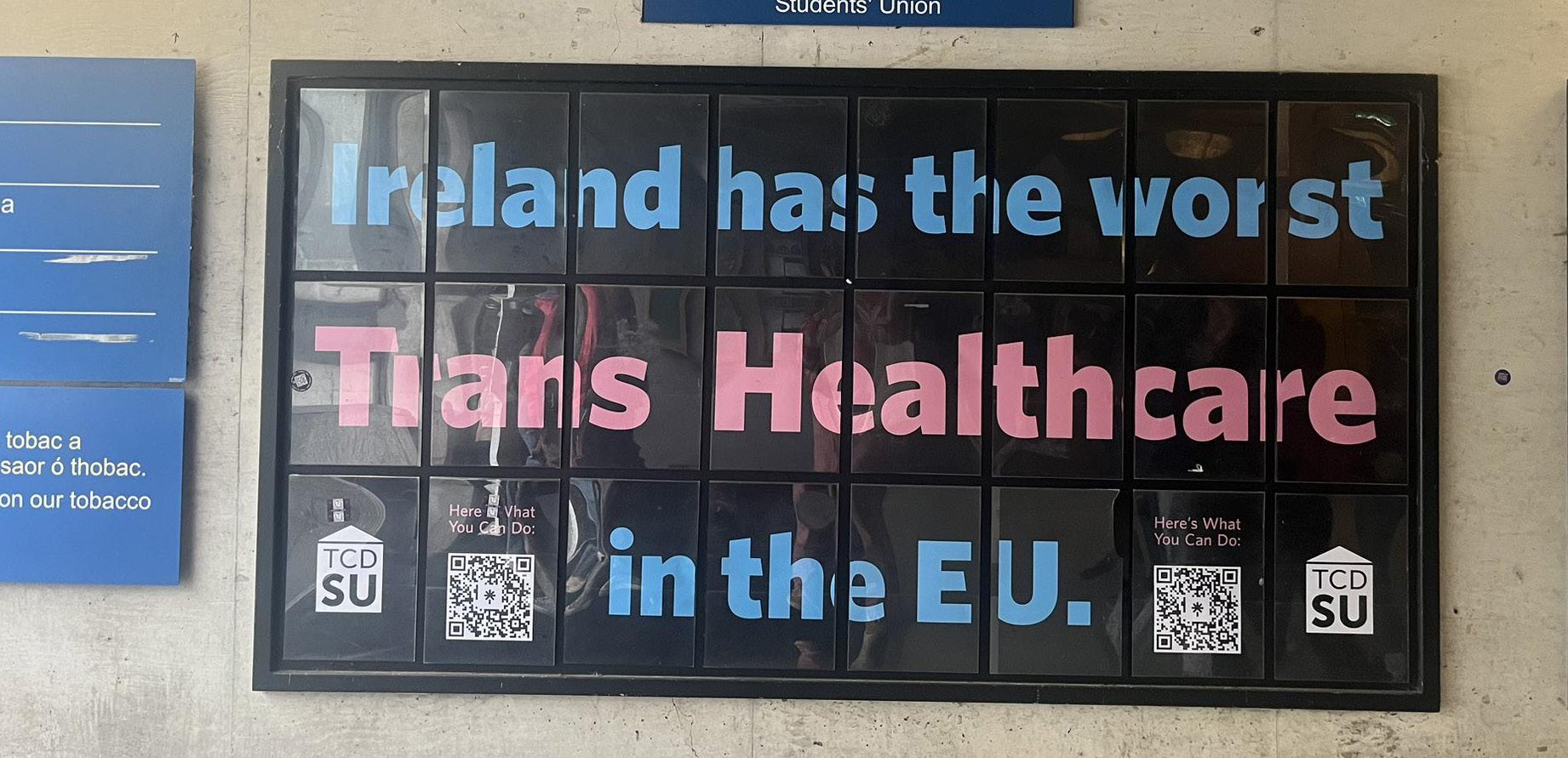
TCDSU Gender Equality
Officer Jenny Maguire told Trinity News that it was “very important to [her] to create a gender equality week that was unapologetically Trans inclusive”. She noted that TCDSU Communications Officer helped her with the project.
“The state of trans healthcare is often underreported and most
people don’t know the extent of how bad it is. So I wanted to highlight the state of Trans healthcare in this country and figured there was no better place,” Maguire continued.
On Twitter, Maguire pointed out that the sign would be seen by tourists entering the college to see the Book of Kells. She adde “Ireland must take responsibility for its
horrific treatment of transgender citizens. We are dying”.
She also encouraged students to “take photos with [the sign]. Share it. Scan the QR code”.
A 2022 study by Transgender Europe (TGEU) ranked Ireland as the worst in the EU for standards of trans healthcare.
The study used a 12 point scale based on six criteria. Ireland
scored just one point, for the fact that trans healthcare is available in the country at all.
The six criteria evaluated the type of trans healthcare and coverage available in the country, whether hormonal treatment or surgery require a psychiatric diagnosis, waiting times for appointments, the exclusion of groups from accessing trans-
specific healthcare, the youngest age at which puberty blockers may be prescribed, and the youngest age for access to hormones. Ireland scored worst on waiting times, with delays of over 7 years after requesting an appointment with a specialist, compared to a wait of less than a year in most EU countries.

its 21st annual Green week. This week-long event which lasts from March 20 to 24 aims to promote sustainable practices and environmental awareness. This year’s Green Week is centred around the theme “Healthy Planet, Healthy People” and will provide a number of panel discussions, talks, exhibitions and workshops surrounding the issue.
As part of the event, The Forum cafe in the Business School will be disposable cup-free, meaning students will have to bring their own reusable cups or buy a 2GoCup for €2. The “Línte na Farraige” exhibition, a collaborative project which highlights rising sea levels
due to climate change, will be displayed in the Arts Block all week. An eco-themed drop-in games and colouring area will be on at 12pm to 2pm outside the GMB on Monday, outside the Arts Block on Tuesday, and outside the Pavillion Bar on Wednesday and Thursday.
Green Week was officially launched yesterday by Provost Linda Doyle, former President Mary Robinson and Lord Mayor of Dublin Caroline Conroy. Minister for the Environment, Climate, Communications and Transport Eamon Ryan will address staff and students on Thursday in the Synge lecture theatre from 12pm to 1pm.
Today
From noon to 2pm, there will be a panel discussion and networking event of Trinity alumni discussing their experience in green careers in Tangent. From 1pm to 2pm, An Taisce’s Clean Coasts Team will be

in Máirtín Uí Chadhain Theatre in the Arts Block to talk about how the programme engages communities in the protection of Ireland’s beaches, seas, and marine life.
Also from 1pm to 2pm, there will be a plant propagation workshop by Trinity’s head horticulturist David Hackett at the Trinity Urban Garden. From 2.30pm to 4.30pm there will be an environmental sustainability research showcase and researcher networking event in Tangent. This will follow a food systems sustainability talk titled “Peace Through Coffee and Chocolate” from 4pm to 5pm in Regent House.
Trinity College Dublin Students’ Union (TCDSU) will host a panel discussion on degrowth with Green Party TD Neasa Hourigan, Business Development Manager at Capital Credit Union (CCU) James Liston and Trinity Assistant
Professor of Finance Dr. Martina O’Hagan Luff from 6pm in the Hist Conversation room in the Graduates Memorial Building (GMB).
Tomorrow
From 9am to 11am tomorrow there will be a panel discussion on active transport in Regent house.
From 1pm to 2pm, Prof. Michael Morris will host a webinar titled: “Is the Circular Economy a Route to Sustainability? As Clear as Plastic?”.
Family-owned Vegan restaurant Cornucopia will be in The Forum restaurant in the Business School offering two vegan options cooked by their Head Chef Tony Keogh. Vegan activist and educator Earthling Ed will speak in Regent House from 1pm to 2pm, hosted by the Healthy Trinity Initiative along with the Vegan Society and Philosophical Society. Comedian Colm O’Regan will perform a comedy based on climate anxiety called “Climate Worrier” in the Global Room in the Hamilton Building from 6pm to 8pm.
Thursday From 8am to 9.45 there will be a business breakfast on level 5 of the Businness Building and will include a panel discussion on biodiversity and the implications of the new corporation sustainability reporting directive. Prof. Tony Capon will host a webinar titled: “Linking Planetary and Human Health” from 9am to 10am on Zoom, which will focus on building research capacity in sustainable development and environmental health.
Minister Eamon Ryan will give an address to staff and students, followed by a Q&A session in the Synge lecture theatre from 12pm to 1pm on how the Irish government are acting on sustainable transport and climate action. There will be a swap shop from 12pm to 4pm in the Global Room.
Two Trinity Centre for Environmental Humanities (TCEH) PhD students, Gabriel Coleman and Kunyan Zhen, will present their work on environmental history at 7-9 South Leinster Street from 1pm to 2.30pm. Trinity Enterprise Centre on Macken Street will host a panel discussion titled: “Troubled Waters - diving, dolphins and deep seas” on how greenhouse gas emissions are threatening marine life, water sports, homes, and historical buildings from 6pm to 8pm.
Friday
A panel discussion on the key issues facing the healthcare sector in terms of sustainability will be in Regent House from 9am to 11am. There will be a talk on introducing the principes of the circular economy to the fisheries industry from 1pm to 1.30pm. From 12pm to 1pm and 2pm to 3pm in the Global Room there will be a dropin Painting & Chats event for students to unwind and de-stress.
Also in the Global Room, there will be a climate hope workshop with Senior Climate Action Officer with An Taisce’s Climate Ambassador Programme Gary Tyrrell from 1pm to 2pm, which will focus on helping students manage their “eco-anxiety”.
More information is available at tcd.ie/provost/sustainability/ calendar.
“
On Thursday, Minister
Eamon Ryan will give an address to staff and studentsPHOTO BY FERN KELLY LANDRY FOR TRINITY NEWS
Speaking last week, Minister Simon Harris said that the department “want to ensure that we give everyone an opportunity to give us the benefit of your experiences”.
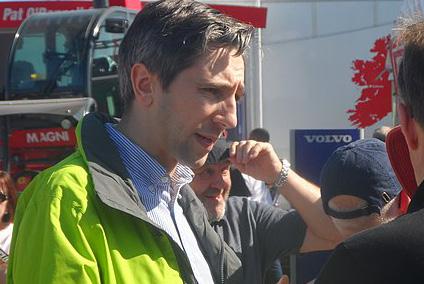
Harris continued: “I would strongly encourage anyone out there with an interest in social inclusion, education, science, or innovation to speak up and help us ensure that this is a department that works for you. We want to hear your thoughts.”
Members of the public can submit their ideas for the future of the department by emailing strategy_statement@dfheris.gov. ie, with the subject line “Statement of Strategy 2023-2025”.
Commenting on the success of this previous Statement of Strategy, Minister Harris said: “This department has engaged in many exciting projects to transform further and higher education, to advance Ireland’s research and innovation agenda and to foster and support greater collaboration between these sectors for the good of learners, industry and wider society.”
“My department is helping our economy and our people prepare for the challenges of the future,” he said.
THE DEPARTMENT OF FURTHER AND HIGHER EDUCATION have invited public consultation on the guiding principles and strategic direction of the department going forward.
The Statement of Strategy for 2023 to 2025 will act as a set of guidelines for the department to follow, and will establish how the department will work for this period of time, marking a new stage for the department which was established in 2020.
The new Statement of Strategy will build on the work of the previous department statement from 2021-2023.
Under the previous statement, the department established four new technological universities, launched the Funding the Future framework for the funding of higher education, and most significantly, passed the Higher Education Authority Act 2022, which provided for major changes to the governance of universities in Ireland.
The department also announced the implementation of the Unified Tertiary Education
policy, which will allow students who begin in further education to go on to complete their third-level qualification in higher education.
Minister of State for Skills and Further Education Niall Collins added: “This department is working hard to ensure our people have the skills they will need for the future and that those skills can be provided by a tertiary system that supports all ambitions and educational journeys. The department is equally interested in improving the opportunities for vulnerable groups in society through support and funding.”
He added: “Please take advantage of this opportunity to share your thoughts on what you would like to see the department focus on over the next three years.”
The closing date for receipt of submissions is 5pm on 29 March 2023.
THERE HAS BEEN A DECREASE IN the number of students choosing Trinity as their first choice of college, according to preliminary data from the Central Applications Office (CAO).
10,179 students listed a course from Trinity as their first preference in their CAO application, representing 15.8% of those who listed a Level 8 course at the top of their course list – a 3.6% decline from last year’s round of applications.
Overall applications from Northern Ireland have dropped significantly by almost 20%, with
LAST WEEK, COLLEGE RECEIVED THE EU SUSTAINABLE Gender Equality Champion award, in recognition of its “significant and sustained record of activity and a high level of achievement through the implementation of their Gender
data indicates a 3.6% decline in first choices for
courses for
The Statement of Strategy for 2023 to 2025 will inform the guiding principles and strategic direction of the department going forward
Conor Healy Correspondent for government
“
I would strongly encourage anyone out there with an interest in social inclusion, education, science, or innovation to speak up ... this is a thatdepartment works for you
Conor Healy Correspondent for government
520 applications received for this academic year, compared with 639 last year.
The total number of students listing a course at Trinity in their application has also dropped by 2.7%, standing at 20,813, or 27% of all CAO applicants.
Applications from the Republic fell by 3% overall, whilst there were increases of 2% and 5% from Great Britain and the rest of the European Union, respectively.
Early and Modern Irish saw the highest increase in first preference choices for any individual course, up 60% from one year ago. History of Art & Architecture (45%), Music Education (27%) and Mental Health Nursing (21%) had the next highest uptake in first choices for the upcoming academic year.
Though courses in the Arts, Humanities and Social Sciences (AHSS) faculty saw broad increases in applications, the opposite trend has occurred in business-related courses.
First preference applications for Global Business has decreased by 3.5%, with a 2% drop in interest for Business, Economics and Social Studies (BESS). Business and Polish first preferences have doubled, albeit from a low starting number, from 5 to 10.
Interest in Health Sciences courses has seen mixed changes, with decreases in first choice applications for the Medicine (-5%) and Dental Science (-13%) courses, but increases in most others.
Professor Jane Ohlmeyer and Professor Jonathan Coleman were presented with the awards in recognition of their respective research achievements
Oisín WardContributing writer
TWO TRINITY COLLEGE PROFESSORS WERE awarded Royal Irish Academy (RIA) Gold Medals on Tuesday in recognition of their research achievements in their respective fields.
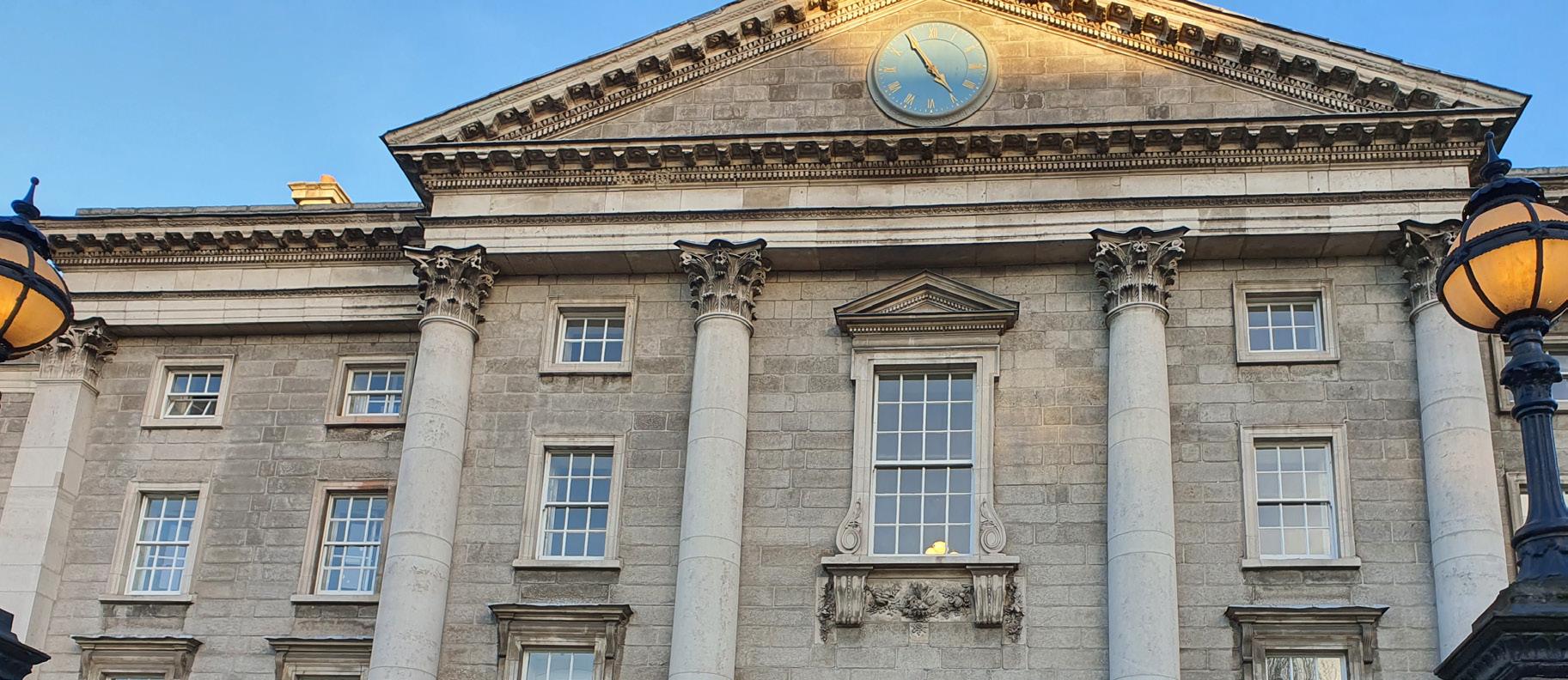
Professor Jane Ohlmeyer, Professor of Modern History, and Professor Jonathan Coleman, Professor of Natural and Experimental Philosophy, were presented with the awards by Senator Malcolm Byrne at a ceremony in the RIA on Dawson Street.
Ohlmeyer, who was awarded the RIA Gold Medal for Humanities, is Erasmus Smith’s Professor of Modern History at Trinity. Accepting the award, Ohlmeyer said it was a “great honour” to be recognised for “a career devoted to developing new frontiers of scholarship and presenting fresh ways of understanding Ireland, our history and culture, and our relationship with the rest of the world”.
She added: “This award also recognises the vital importance of basic frontier research and the critical role that the humanities play in the world today.”
Ohlmeyer was instrumental in the 1641 Depositions Project and the development of the Trinity Long Room Hub Arts and Humanities Research Institute, on which she served as director from 2015-2020. Her next book Ireland, Empire and the Early Modern World will be released this year, based on the 2021 Oxford University James Ford Lectures which she delivered.
Coleman, who received the RIA Gold Medal for Physical and Mathematical Sciences, is Erasmus Smith’s Professor of Natural and Experimental Philosophy.
Upon receiving his award, Coleman acknowledged the contributions of “research students and postdocs” to his research over the last fifteen years, saying that without them “it would be
impossible to do research at all”.
Coleman’s research is focused on solution processing of nanomaterials, predominantly Carbon nanotubes, nanowires and 2D nanosheets. Professor Coleman is most well-known for developing liquid phase exfoliation for preparing 2D materials, which he applies in a number of areas including electron-mechanical
sensors, printed electronics and energy storage materials such as lithium-ion batteries, battery electrode architecture and factors limiting rate performance in batteries. Professor Coleman has worked in a number of industryacademic collaborative projects, including Hewlett-Packard, Intel and Nokia Bell Labs, among others.
The RIA Gold Medals are awarded to researchers making an international impact in their field. There have been just 32 medals awarded in the last 18 years.
Mary Canning, President of the Royal Irish Academy, described the medals as recognising “world leaders in their research fields in Higher Education Institutes on this island”, and said that the winners of the medals are “proven experts” in exploring, challenging and explaining their research fields.
Conducting the ceremony, Senator Malcom Byrne stressed the importance of universities in promoting, not only “academic excellence”, but also the recognition and value of “evidence based debate in the development of public policy”.
Previous recipients of the Medals include Trinity alumni and faculty members, including Professor Luke O’Neill, Chief Economist of the European Central Bank Philip Lane and Professor Ruth Byrne.
Equality Plan”.
Some of the initiatives for which College was awarded the €100,000 prize date back over 50 years, including the establishment of its on-campus child care centre in 1969, and the Centre for Women’s Studies in 1989.
College was also recognised for its achievements under the Athena SWAN gender equality framework, which include a Bronze level institutional award in 2015, as well as 17 Bronze Athena SWAN awards across the university.
Speaking last week, Provost Linda Doyle said that she was “very proud” that College had won the award.
“Gender equality is a cornerstone of the deep-rooted fairness that we want Trinity to always embody. We have more to do and this wonderful award reminds us that we are on the right track,” Doyle said.
Doyle’s appointment as the first female provost of Trinity in 2021 was also noted in College’s application to the award.
She acknowledged the work of the Equality Office, in particular Associate Vice-Provost for EDI Professor Lorraine Leeson, and Acting Equality Officer Dr Siobán O’Brien Green, as well as Director of HR Antoinette Quinn.
Maynooth University and South East Technological University (SETU) were also presented with awards for Newcomer Gender Equality Champions and Inclusive Gender Equality Champions respectively.
Minister for Further and Higher Education Simon Harris congratulated the three Irish universities on their significant achievement, saying it was “incredibly gratifying” to see universities leading the way in inclusion and equality, a “critical priority” of his department.
Harris added: “We need the opportunities that education provides to be available to all who want to pursue them, and for that reason I really want to thank and praise Trinity College, Maynooth University and South East Technological University
for leading the way on gender equality.”
The Gender Equality Champion awards were established by the European Commission in 2022, with the aim of celebrating and recognising outstanding results achieved in the implementation of gender equality plans by academic and research organisations.
The winners were announced
yesterday by Mariya Gabriel, Commissioner for Innovation, Research, Culture, Education and Youth, to mark International Women’s Day.
Chief Executive of the Higher Education Authority, Dr Alan Wall called the awards a “testament to the ground-breaking work of Irish universities to tackle gender inequality in Irish higher
education”.
“The HEA’s recently published Review of Gender Equality in Irish higher education institutions demonstrates our commitment to continuing to advance this agenda and a signal that it is time to double down on the excellent progress made to date,” Wall added.
“
This award also recognises the vital importance of basic researchfrontier and the critical role that the humanities play in the world today
A statement from the society, released two weeks ago, was accompanied by a 10 minute video of its president reading it aloud
Stephen Conneely Correspondent for unionsTHE MUSLIM STUDENTS’ ASSOCIATION (MSA) have said complaints regarding a planned event featuring YouTuber Mohammed Hijab “came to the surface a mere two days before the planned date” in an online statement.
According to the MSA, they did not receive “any complaints directly regarding the event”, due to take place on March 3, except for a message from an unnamed S4C member that was “received after the decision had already been made to cancel the event”.
The statement claimed that the event was not cancelled “due to the complaints of a select group of students”, but rather “the necessary security could not be arranged given the time restraints”.
In a statement released to Trinity News on March 2, endorsed by QSoc and the Trinity College Dublin Students’ Union (TCDSU) Gender Equality Officer activist group Students4Change (S4C) criticised the event due to Hijab’s “misogynistic, homophobic and transphobic views”.
Hasan Ali, president of the MSA, said that no complaints were made to the MSA regarding Hijab’s appearance in the almost four weeks between the event’s announcement and S4C releasing their statement.
The joint statement condemned Hijab’s view on the LGBTQ+ community and women. Hijab has reportedly stated in the past that “LGBTQ [is] a really powerful way for them to destroy their own civilisation from within” and that feminism “has harmed women”.
S4C also pointed out that Hijab has been linked to riots in England in which Hindus were violently targeted by a “Muslim patrol in Leicester”. According to S4C, “such an individual has no place at our College”.
The statement by MSA did not refute the statement’s accusations of homophobia, transphobia and connections to violence. In a previous statement to Trinity News, Ali noted that “Hijab was a highly demanded speaker within
the College community”.
The MSA’s most recent statement criticised allegations by S4C that Hijab had “no credentials” as an academic, and that they found it “concerning” that he was being advertised as such.
According to the MSA and Hijab’s own website, he has a BA with second class honours in politics from the University of London, two Master’s degrees from the University of London, and a third Master’s in applied theology from the University of Oxford. Hijab is also currently pursuing his PhD, according to his website.

The MSA also claimed that Hijab has research and teaching experience at third level, citing his work as “a researcher and instructor” at the Sapience Institute. This is not a registered university or college in the UK, but is a self-described “nongovernmental & nonprofit organisation” which aims to “provide a compelling, convincing case for Islam”.
Ali stated that “it is shocking and disappointing […] that groups at such a prestigious university failed so miserably at the most basic research”. He went on to say that they “attempt[ed] to damage the reputation of [the] MSA by suggesting that we represent speakers in a majorly false light” and that he believed the MSA has “been accused of lying”.
Students4Change replied to this most recent statement by the MSA in saying “their statement warrants no response” and that they “fully
stand behind [their] actions to prevent a known homophobe, transphobe, and misogynist from speaking on campus”.
S4C claimed in their primary statement that they were “ready to escalate” their actions in the case of the speaker event going ahead – in response, the MSA furthered their view that they were excluded from any discussion about the future of the event.
“It makes us [the MSA] question why such extreme measures were being considered while excluding us entirely from conversations regarding our own event,” Ali told Trinity News, “I would like to reiterate my earlier statement as reported in the mentioned article that my “primary objective is to foster unity and peace within out college community”. This is certainly the case; however, this is impossible to achieve with such a dire lack of communication”.
Ali said in his statement: “This begs the question: is the TCDSU speaking to us or at us?”
TCDSU Gender Equality Officer Jenny Maguire did not offer comment in response to the statement.
TCDSU stated that they have “been liaising with the MSA and the Central Societies Committee [CSC] on this matter” since last Friday. They added that ”it would be preferable for that conversation to remain internal”, and did not comment further.
Ali suggested a “possible conspiracy to sabotage the event” and the complaint is “a manifestation of Islamophobia”. He
claimed that the event could have gone ahead if these complaints were made earlier, or made directly to the MSA, owing to his belief that “security could have been organised” in order to safely hold the event between seven Islamic student-led societies.
Ali claimed that the “incident wasted the time, effort, and resources of both the College itself and its students”, and that “it has also brought to light the fact that some students at Trinity College are reluctant to approach us for any kind of conversation”.
The statement concluded in thanking “the Junior Dean [Professor Donall Mac Donaill] and his team for trying their level best to arrange security for the event”, as well as “Trinity News for reaching out to us [the MSA] in a timely manner to ensure our voice was heard.”
Last week, QSoc released a statement on Instagram, apologising for their “short commings” in engaging with the MSA regarding the statement released prior to when Hijab was due to speak.
The statement said: “By failing to liase with the [MSA] earlier, we failed to foster an enviroment where societies serving marginalised groups can be comfortable communicating and cooperating with each other about their needs in the College community.”
Additional reporting by Shannon Connolly.
Three research teams from University College Dublin will collectively share €2.1m funding to develop solutions to climate action challenges, with a specific focus on addressing climate issues in countries where Irish Aid is deployed, such as mapping mangroves in Vietnam, recycling heat from meat production in Zambia and working with farms in Uganda to use data in the development of solutions for climate change. In announcing the funding, Minister for Further and Higher Education, Research, Innovation and Science Simon Harris noted, “These teams will work with researchers in Irish Aid’s partner countries to devise, refine and implement solutions to problems that threaten everyday life.”
Strikes by some Ulster University staff are to resume on Wednesday, 15th March with the original strike end date pushed back to the 22nd of March, having taken place since the start of the month. The strike actions were paused while pay talks were going on, but University and College Union(UCU) Members have said they want a pay rise offer in line with the cost of living crisis and inflation running at around 10%.
Queen’s University Belfast: Queen’s University Belfast has announced that former U.S. President Bill Clinton and University Chancellor Hillary Clinton will be among the global leaders to attend ‘Agreement 25: The Dynamics of Peace, on 17-19 April. It is billed as the signature event to mark the 25th anniversary of the Good Friday/Belfast Agreement of 1998. Speaking ahead of the event, Clinton explained, “Northern Ireland and Queen’s University are both close to Bill’s and my heart.” Vice-Chancellor Ian Greer added that: “We are delighted that [these esteemed guests] will be joining this event to share their experiences and expertise in peace-building.”
TRINITY BOYCOTT, DIVESTMENT AND SANCTIONS (Trinity BDS) have condemned college’s invitation of former Israeli Defense Force (IDF) service member, Evgeny Afineevsky, to speak at an event two weeks ago.
Afineevsky spoke at a panel discussion on March 1 to commemorate the first anniversary of the invasion of Ukraine.
In a press release issued last week, Trinity BDS said: “Trinity BDS condemns Trinity College Dublin’s invitation of Israeli Defence Forces (IDF) veteran Evgeny Afineevsky for an event on campus held on the 1st of March to raise awareness of war crimes in
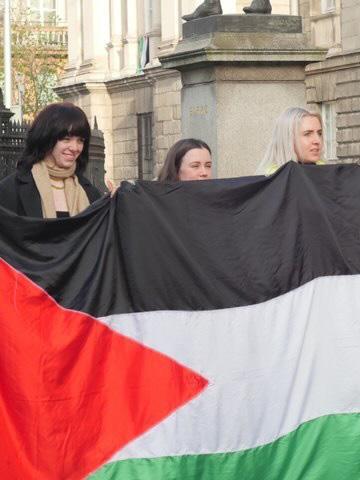
Ukraine committed by Russia.”
They noted that “the individual in question voluntarily became an Israeli citizen and served in the IDF for 3 years”.
The group also said that the invitation “makes [College’s] hypocritical position on issues at the centre of human rights as a whole obvious,” and that it “perpetuates the idea that there is a hierarchy of victims”.
“The IDF is an organisation complicit in apartheid and war crimes committed against Palestinians, murdering men, women and children and so we condemn not checking the previous association of the guest, presenting him to students as a moral authority to speak of real and grave war crimes committed by Russia against Ukranians,” they added.
Trinity BDS said that they brought their concerns to the Dean of the Arts, Humanities and Social Sciences (AHSS) Faculty, but called the response “disappointing”. The group claims that they were told their concerns were “is not relevant to the topic of the event and that the background of the guest was not disclosed to the Dean”. The Dean has clarified
to Trinity News that this was not a direct quote.
Though the challenge was raised by the chair of Trinity BDS, he did not identify himself as such at the event, and according to the Dean of AHSS the Trinity branch of BDS was not mentioned.
The panel discussion with Afineevsky also included Ukrainian Ambassador to Ireland Larysa Gerasko, Polish Ambassador to Ireland Anna Sochańska, Lithuanian Ambassador to Ireland Marijus Gudynas, and Trinity Professor of European Studies Dr Balazs Apor. Russian born Afineevsky voluntarily became an Israeli citizen in the early 1990s and served in the IDF. He now resides in Los Angeles in the United States.
The film director came to international attention with his 2015 documentary Winter on Fire: Ukraine’s Fight for Freedom, which covered the Euromaidan protests in Ukraine from 2013 to 2014. His latest documentary, Freedom on Fire: Ukraine’s Fight for Freedom explores the lives of ordinary Ukrainian people from 2014 up until the start of the invasion on the 24th of February 2022.
in the scheme are TBSI, St James’ Hospital, and the School of Nursing on D’Olier Street.
Announcing the scheme on Instagram, said: “Women, trans, and non-binary people across the island continue to struggle against barriers to equality.”
Aoibhinn Clancy Staff writerFREE PERIOD
PRODUCTS WILL BE made available in 10 bathrooms across campus and off-campus College locations, as part of a new students’ union scheme.
The scheme will see freely available pads and tampons restocked daily by Estates & Facilities in a similar way to soap or toilet paper.
Products will be available in selected ladies’ and gender neutral bathrooms in the Arts Building, the Hamilton, the Ussher Library, the Business School, and House 6. Off-campus locations included
It added: “Period dignity is one of the most basic things our community can ask for. If you menstruate, you should be able to access pads and tampons when you need them so that you can go about your day.”

TCDSU also urged members to sign its petition calling on College to support an expanded version of the scheme, saying that “ten locations is not enough”.
“Period products should and can be available in every toilet for all student[s] and staff,” the statement added.
The products will be supplied by Irish brand We Are Riley, whose period products contain no harmful chemicals such as bleach or pesticides along with being biodegradable.
Speaking to Trinity News, Staunton said: “I felt it necessary to empower menstruators by offering sustainable products so
that they can still be mindful of the environment, even on their period.”
Staunton expressed her gratitude to Trinity Trust for providing funding to the project.
Trinity Trust was established in 1987 and seeks to provide funding to schemes which are not financed by mainstream sources.
TCDSU have pledged that they are committed to “period dignity” saying “It is vital that every person who menstruates has access to the products they need to go about their day. Period products are not a luxury item.”
Staunton went on to emphasise “how important it is for all menstruators, staff or students, to have access to period products”.
“In striving for gender equality we must also call on College to purposely support this initiative,” she said.
“In launching this formal initiative I want to help target some of the fundamental issues, even if it is through this smaller launch,” said Staunton going on to encourage all members of the college to sign the Period Dignity petition.
This scheme launched by
TCDSU follows a government announcement of a pilot initiative which will provide free period products to students in institutes of further education and the training sector, though not covering Trinity or any other higher education institute.
TCDSU went on to say that until Trinity receives public funding for menstrual products “it is vital that the College steps in to ensure that every bathroom across our campuses has a dispenser for free tampons and pads”.
The union also urged members to sign a petition for funding to expand the scheme
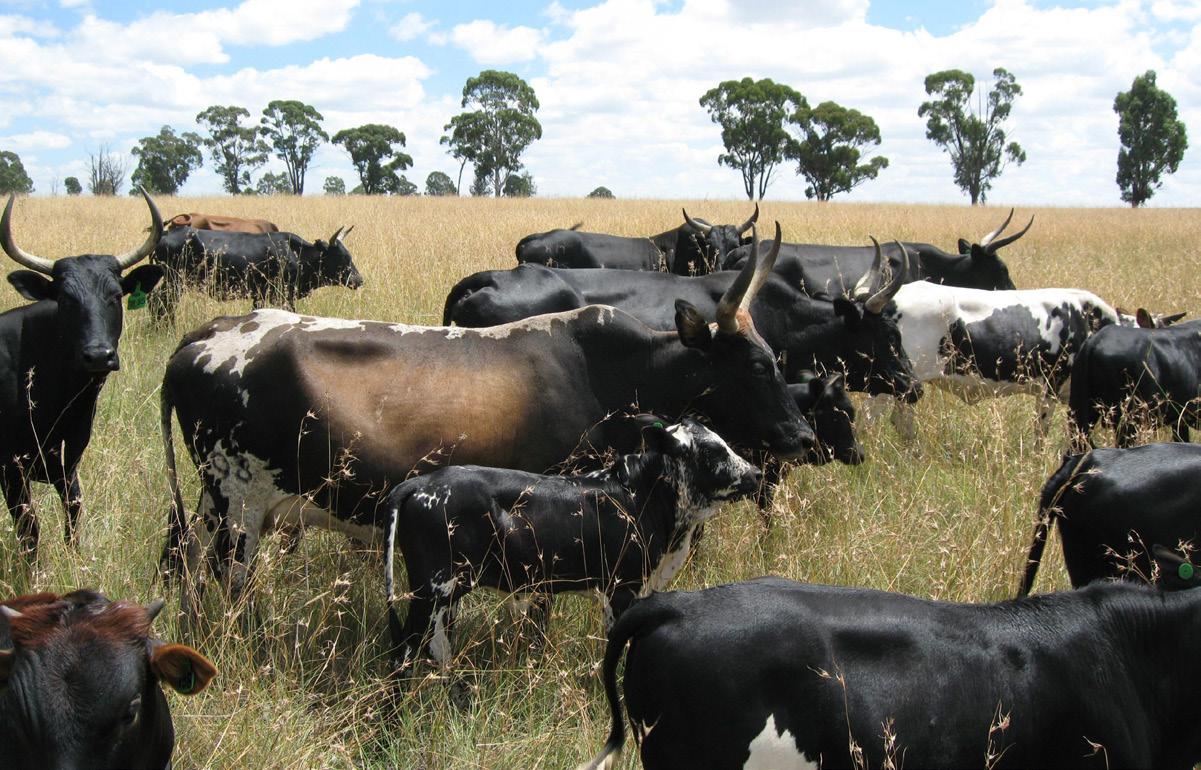
Research at UWC, and is the culmination of relationships and networks forged through these institutions’ fellowship programmes. It draws inspiration from Seamus Heaney’s “The Cure at Troy”, dedicated to Nelson Mandela, which encourages us to think of “that further shore” where “hope and history rhyme”.
Supported by the Irish Department of Foreign Affairs, the initial phase of the work of the Research Chair will be to bring scholars and artists in Ireland to South Africa, hosted at the UWC Centre for Humanities Research.
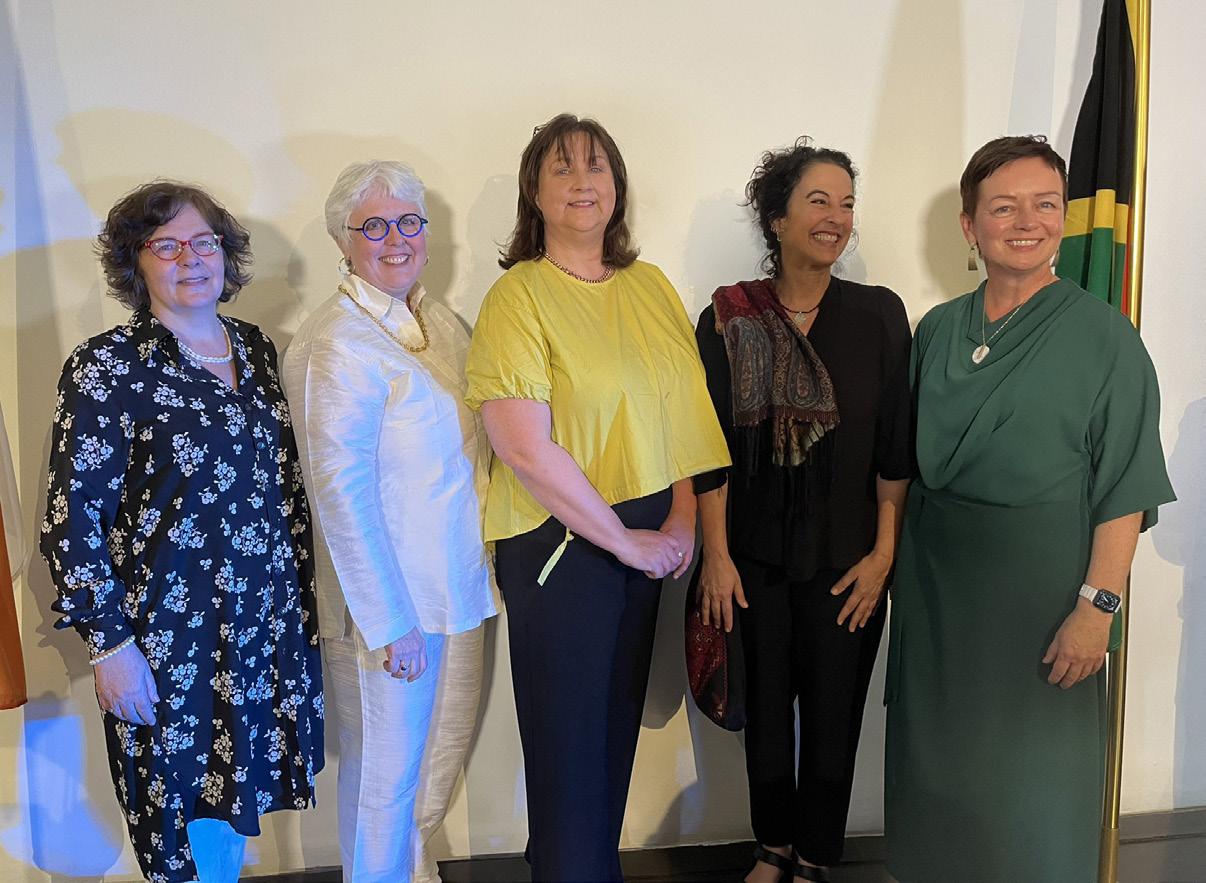
The Trinity Long Room Hub has already begun the work of raising additional funds to bring scholars and artists from South Africa to Ireland, which College claims will suport the study of Irish Studies in South Africa and South African Studies in Ireland.
Mary Robinson are thinkers that stand for the advancement of women’s rights and education. Maxeke was the first black woman to graduate with a university degree in South Africa and was heavily involved in political activism, advocating education for Africans in South Africa and served as a leader of the African National Congress (ANC) in the 1930s. Mary Robinson was the first female President of Ireland, and was involved in several liberalising issues as a Senator and a lawyer, such as the decriminalisation of
homosexuality, the legalisation of contraception and divorce, and enabling women to sit on juries.
Provost Linda Doyle said: “The inauguration of the Charlotte Maxeke-Mary Robinson Research Chair is a fantastic way to build on the legacies of these two inspiring women.”
“It marks a significant step in the deepening of Trinity’s longstanding relationship with the University of the Western Cape and will catalyse further collaboration between our institutions.”
Contributing writer
GREEN PARTY
MINISTER Eamon Ryan is to address staff and students next week as part of College’s 21st annual Green Week.
LAST WEEK, Charlotte Maxeke-Mary Robinson Research Chair was launched by Ambassador of Ireland to South Africa
Fionnuala Gilsenan and ViceChancellor of the University of the Western Cape (UWC) Professor Tyrone Pretorius at the UWC Centre for Humanities Research. This emerges out of a longstanding collaboration between Trinity Long Room Hub and the Center for Humanities
Both humanities institutions have recently engaged in discussions about colonialism, partition, postcoloniality and race.
Professor Eve Patten, Director of Trinity Long Room Hub, said: “That the legacies of post-partition societies can be examined through a cultural and artistic lens, means we can provide new models of thinking about peace and reconciliation not only in Ireland and South Africa, but across the world.”
Both Charlotte Maxeke and
According to a College Eventbrite page, the event will “explore the actions [Ryan] has taken” in his role as Minister for Environment, Climate, Communications and Transport. “It offers an opportunity to hear the latest on how the Irish government are acting on sustainable transport and climate action.”
Following the address, Ryan will partake in a question and answer session for attendees, allowing students and Trinity faculty to pose questions “relate to
Contributing writer
APAIR OF RESEARCHERS FROM TRINITY are among six teams selected to compete in the Sustainable Development Goals Challenge, government has announced.
Professor Aonghus McNabola from the School of Engineering and Pádraigh Carmody from the School of Natural Sciences have received funding for their project and will compete for an overall
prize of €1 million, to be used to aid the advance of their generated solution towards implementation.
Their project aims to recycle heat generated from meat production in order to reduce costs and the overall carbon footprint of food products.
Profs Mcnabola and Carmondy said they were “delighted” to receive the funding, which will enable them “to work, in a practical way, on addressing one of the world’s biggest challenges –climate change – in a way that also has positive social impact”.
They will work collaboratively with Dr Godfrey Hampqaye from the Southern African Institute for Policy and Research in Zambia and Ms Mangiza Chirwa Chongo, Hivos Zambia’s Societal Impact Champion.
Last month, McNabola was one of more than a dozen Trinity researchers whose projects received funding from the €65 million National Challenge Fund, for a project exploring low-cost fish-friendly micro hydropower energy storage.
Government today announced
funding in excess of €2 million for the six research teams selected for the Sustainable Development Goals Challenge. The teams aim to develop and implement innovative solutions to meet the Sustainable Development Goals of the United Nations (UN).
Other research projects selected for the challenge include the mapping and restoration of mangroves in Vietnam, the investigation of green infrastructure within urban environments of Tanzania and an exploration of drought and flood management systems for sub-Saharan cities. Other projects competing for the prize fund are based in Uganda and Malawi. Teams will work with researchers from partner countries of Irish Aid, with the goal of providing solutions to climate change related issues for life below water and on land.
Minister for Further and Higher Education, Research, Innovation and Science Simon Harris outlined that the challenge based funding “will utilise the best of research to make many lives better” as “real-
world impact is at the heart” of the project.
Minister of State for International Development and Diaspora Sean Fleming added: “We have already seen how developing nations can be disproportionately affected by the climate crisis.”
“By supporting researchers both in Ireland and in the countries where Irish Aid works, we will use innovative ideas and cutting-edge scientific research to help mitigate
some of those effects,” Fleming noted.
Director General of Science Foundation Ireland (SFI) Professor Philip Nolan, commented that the award is an “exciting moment” for those involved and outlines how the teams not only “represent some of the best of Irish research” but are also “driven by the hope that their solutions can change the world – a sentiment at the heart of challenge-based funding”.
Provost Linda Doyle said: “The inauguration of the Charlotte MaxekeMary Robinson Research Chair is a fantastic way to build on the legacies of these two inspiring women.”
Aidan Cusack
News Analysis EditorPHOTO VIA TRINITY LONG ROOM ON TWITTER
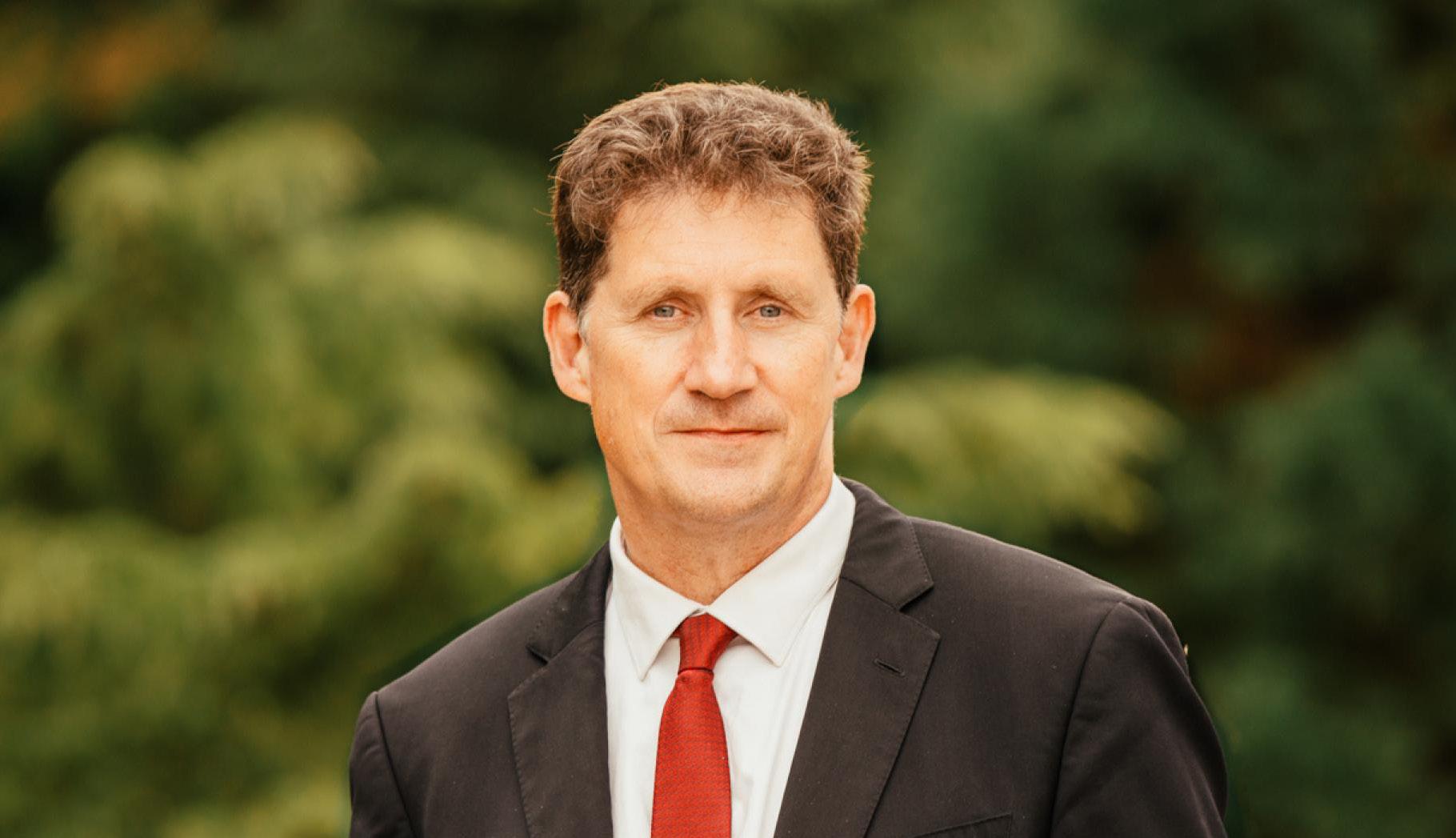
transport, climate action, or wider environmental issues”.
In an email sent to staff and students, Sustainability Manager
in the Synge Lecture Theatre in the Arts Building next Thursday, March 23, from 12pm to 1pm. Green Week, takes place
next week from March 20-24, celebrating its 21st “birthday” on March 20.

Earlier this month, McGowan is one of nine winners from across the country to receive the award
Aoibhinn Clancy Staff writerFINAL YEAR MATHS STUDENT, Ryan
McGowan has been awarded the Hamilton Prize from the Royal Irish Academy (RIA).
The annual undergraduate prize is given to the top mathematics student in each university across Ireland. The ceremony took place on Wednesday at the Royal Irish Academy.
McGowan was nominated for the award by the School of Mathematics. Each year the mathematics departments of the involved universities are asked to nominate the best student in their
penultimate year of undergraduate mathematical studies for the prize.
The winners received a cash prize of €500 and a certificate of achievement. They were also invited to attend an exclusive masterclass with 2022 Hamilton Lecture speaker, Professor Avi Wigderson of the Institute for Advanced Study, Princeton.
Speaking at the ceremony President of the RIA Dr Mary Canning said: “The Hamilton Prize recognises these outstanding
young mathematicians chosen in their penultimate year of studies in universities all around the island of Ireland.”
“We celebrate Hamilton Day because Ireland has a rich history of scientific excellence, but through this prize we also look to the future.In honouring their academic excellence we hope to support and encourage the next generation of great Irish scientists,” she added.
The award is named after Trinity
“Julia Roberts came to Manchester and not in the 1990s… when we were better than United, she went to see them but not us..”
Pep Guardiola, Manchester City Head Coach“The US and Ireland are both committed to the Green Transition, not just as the necessary response to climate change, but as the creator of new economic opportunities and jobs; and we both have made significant investments in each other’s countries.”
Leo Varadkar, Taoiseach
“To the viewers, I am so grateful for the loyalty you have shown to The Late Late Show, week in, week out. Not only did you raise €30m for Irish charities… but you showed incredible generosity of spirit for which I am profoundly grateful.”
Ryan Turbidy, on announcing his departure from The Late Late Show
“I think if you sent the Irish rugby team to Ukraine, this thing might be over in a week”
Chuck Schumer, US Senate Majority Leader
“Would they not have made the category Best Supporting Donkey?”
Eamon Ryan, Minister for the Enviroment and Transport
alum William Rowan Hamilton, who discovered quaternion algebra on 16 October 1843. The ceremony was originally scheduled to take place on 16 October 2022 to celebrate Hamilton Day.
The RIA is an academic body that promotes study in the sciences, humanities and social sciences. It was established in 1785 under a royal charter.
The award was sponsored by Irish Business and Employers Confederation (IBEC).
“The story of Irish Americans is a story of people who have weathered hard times, but always come through, spirit intact.”
Joe Biden, President of the United States

Students’ Union (TCDSU) shop, for example, is frequently used by tourists who; a water fountain nearby would easily lower the rate at which single-use bottles are bought on campus.

Cork (UCC) has adopted a campus-wide plasticfree policy. The college has eliminated several single-use plastic products from on-campus dining areas, shops and vending machines in order to cut down UCC’s waste of disposable plastics.
The college estimates that it will save more than 140,000 plastic bottles and 370,000 coffee cups per year from going to waste.
UCC is the first university on the island of Ireland to implement this ambitious policy of cutting out single-use plastics. Though there are still some single-use plastic products available for purchase on UCC campus, this policy has moved UCC to be a global leader of sustainability within universities and other higher education institutions.
One might question why Trinity
College Dublin, Ireland’s highest globally ranked university, hasn’t followed suit and implemented a similar policy on their own campus.

If College were to implement a plastic free policy, they face the notable challenge of not only being a plastic-free educational institution but also being a plasticfree major tourist attraction. Over two million tourists visit Trinity every year; catering to visitors who may not be aware or prepared for a potential single-use plasticfree campus certainly presents a challenge.
However, turning an institution attended by thousands of students and visited by millions of tourists would create huge changes, both in terms of material output and by presenting a climate-focused attitude that can influence other institutions in Ireland. What viable solutions exist to remedy the challenge of tourism when eliminating single-use plastics from campus?
One way College can improve their waste management is by
taking inspiration from other third-level institutions. KSG, UCC’s catering partner, provides a reusable cup “deposit and return scheme” in all of their on-campus outlets. This allows students, staff and guests to use a reusable cup with the deposit of €2, eliminating the need to distribute single-use plastic items to visitors.
Alongside this practical measure, heavy publicity of the new policy by College would be essential so that visitors are informed of Trinity’s single-use plastic free status beforehand and can prepare accordingly. The UK Natural Museum of History, for example, stopped selling singleuse plastic water bottles in 2018, while their membership packages, including cards and brochures, are all made from 100% recycled and biodegradable materials.
Additionally, the installation of more water fountains in areas on campus that aren’t necessarily student spaces will allow visitors to use reusable bottles instead of needing to purchase a single-use bottle. The Trinity College Dublin
However, like most major changes on university campuses, the initiative to reduce single use plastic waste in UCC began through student action. The campaign to remove single-use plastics from UCC campus began in 2018. The University College Cork Student Union (UCCSU), acknowledging the environmental harm of plastic pollution, launched a petition to make the campus free of single use plastics by 2023.
The petition garnered over eight thousand signatures and multi-layered collaboration of the University Leadership Team, SUP Action Group and UCC Green Campus took on the task of implementing this policy with the consideration of different aspects of student life.
The initiative received support from the top of campus hierarchy, with UCC President, Professor John O’Halloran, stating, “We cannot continue to overconsume plastic in the name of convenience. In the areas of research and action towards the transition to a more sustainable society, UCC will continue to lead and hopefully inspire action.”
It is clear that if the Trinity student body wishes to bring in a similar policy, the process must begin with students and more specifically the Trinity College Dublin Student Union (TCDSU). With the TCDSU sabbatical officer elections just passed, there was a notable absence of single use plastic-free policies from the manifestos of most candidates running, suggesting a more sustainable campus is not a priority of several of our current and incoming student representatives. With TCDSU’s notable history of being at the forefront of progressive campaigns, from abortion rights to marriage equality, it could be seen as surprising that there has been no notable action from recent student unions to address College’s singleuse plastic waste.
As a collective student body, it is clear that we must call on our representatives to prioritise cutting down our campus waste if we want to create a more sustainable campus Removing single-use plastics from Trinity campus will certainly be an arduous task. As we saw in UCC, the process of introducing their single-use plastic free policy took nearly five years to implement and cross collaboration from several groups on campus.
page 18
The earthquake that struck southern and central Turkey on 6 February 2023 has reminded the world of just how devastating natural disasters can be. It was the most severe earthquake worldwide since the earthquake in Haiti in 2010, causing over 50,000 deaths and affecting about 14 million people. After two weeks, Turkey ended their search everywhere except for two provinces. The US Secretary of State, Antony Blinken, visited Turkey announcing $100 million of aid. He stated that getting aid into Syria has been “very, very challenging.”
Although natural disasters have been occurring since ancient times, the 21st century has shown a significant increase in the severity and frequency of certain types of disasters. Tropical storms, severe flooding, wildfires and droughts are among the effects of climate change. Technological disasters have also featured in the 21st century. This heightened risk of disaster demands a strong structure of aid and rehabilitation schemes. 2022 saw recordbreaking temperatures, with over 20,000 heat-related deaths resulting from European heat waves. 2023 continued this pattern, hosting the warmest day in January to ever be recorded. These rising temperatures occurred worldwide, aggravating the worst-ever drought in the Somali Peninsula in Africa. The humanitarian sector has been pushed to its limit trying to keep up with the evolving effects of climate change.
According to Oxfam, the frequency of natural disasters has tripled in the last 30 years, and more than 20 million people

are displaced every year due to climate change. The Australian bushfires in 2020 were among the most widely publicised of natural disasters. The previous year had been the hottest on record, drying out the soil and providing perfect conditions for fires to ravage. More
than 10 million hectares of land were destroyed in the fires, taking thousands of homes and killing 28 people. Over a billion native animals were killed, and some ecosystems are expected to never recover.
Syria’s unrest has made it difficult for victims to get help. Much of Northern Syria is completely cut off from the world due to a lack of electricity, making it hard to respond effectively. The Healthcare system has been significantly weakened during the war, with only 59% of hospitals fully functioning. Gas supplies have been affected, meaning that many people are subject to freezing temperatures.
Many Syrian refugees are seeking asylum in Turkey. They are now faced with the difficult choice of whether to remain in Turkey after its destruction or go home. Seven days after the earthquake hit, the UN and President Bashar al-Assad’s government reached the decision to open two more border crossing points. This has allowed aid to enter Syria. For many Syrians, the reason they are crossing the border is to reach injured friends and families. According to UN statistics, around 6,000 Syrians were killed, 4,400 of which were from rebel-controlled areas. The UN’s response was slow, and has shown that alternative aid
schemes need to be in place. The Syrian government has a record of obstructing aid, and the Un’s cross-border mechanism was not very successful. The provinces that were hardest hit by the earthquake did not receive UN aid until four days after the quake.
The World Food Programme (WFP) has been a critical resource in recent years. WFP is the largest humanitarian organisation in the world, and is a member of the UN group. In 2022 alone, WFP provided food to over 160 million people, including many victims of natural disasters. Despite the extensive demand for their services, in 2022 WFP received only two-thirds of their required budget. Many of the countries that are at an acute risk of loss, contribute very little to global warming.
To tackle this inequality, COP27 have agreed to develop a financial scheme whereby the most vulnerable countries are compensated for their loss. This agreement was reached at the end of the two-week-long UN Climate Change Conference in November 2022. A transitional committee is responsible for figuring out how the funding will operate. They are expected to meet for the first time by the end of this month,
March 2023. According to the UN Environment Programme, this new scheme will be crucial in adapting to climate change. Developing countries are expected to face costs of up to $340 billion annually, funding projects like developing drought-resistant crops and building sea walls.

To mitigate crises, there are numerous NGOs that provide emergency aid. Médecins Sans Frontières (Doctors without borders) is such an organisation. They supply life-saving medical treatment in over 70 countries. Having over 60,000 staff across these countries, MSF is able to start treatment within minutes of a disaster. To enable a quick response to a crisis, MSF have pre-packaged disaster kits which include a complete surgical theatre and various other equipment. The organisation is funded entirely by donations, and provides public access to their accounts for full transparency.
The devastating circumstances in Turkey and Syria have demonstrated just how vulnerable certain regions are, and how crucial emergency aid is. With the progression of climate change and rising rates of natural disasters, aid infrastructure is requiring more funding. Quick response rates can be vital in mitigating the effects of a natural disaster.
The frequency of disastersnaturalhas tripled in the last 30 years, and more than 20 million people are displaced every year due to climate change
and realise they need help escaping from its grip — and they said, this is where the Church’s ministry comes in. This understanding of mankind’s propensity for spiritual darkness was aptly encompassed in Bishop Alan’s quoting of G. K. Chesterton: “when people stop believing in God, it is not that they believe in nothing. They believe in anything.”
However, such a notion of the susceptibility of the human mind has also led to exorcisms themselves being considered a dangerous ritual. While everyone is familiar with, and can even laugh at some of the graphic and hyperbolic portrayals in popular culture, exorcisms are also highly controversial and destabilising especially when conducted on vulnerable people.
mistakenly identified as having a supernatural dimension. In some instances, this has even led to victims dying during the ritual.
deal with”.
When, on the rare occasion, the word exorcism is mentioned, it is not unlikely that one’s mind — seared with the visceral trauma of watching X-rated horror movies at an ashamedly young age — will turn to cult classic films like The Exorcist. However, what may be more surprising than a woman being levitated off her bed to be purged of her demonic condition is that today, exorcisms continue to hold a prominent place in the Christian faith. The demand for this practice both in Ireland and across Europe has been growing, which has recently prompted Dublin-based Father Pat Collins to call on the Roman Catholic Church to create a proper deliverance ministry.
A surge in exorcism appeals is not a new phenomenon for the Catholic Church. In 2018 the Vatican opened its doors to over 250 priests across fifty countries on its annual exorcism course following increased demand among Catholic communities across the globe. The only international series of its kind, this week-long learning experience entitled Exorcism and the Prayer of Liberation, offered these priests an opportunity to listen to first-hand accounts of clergymen involved in the demon-expelling rituals. Seeking to provide an academic and interdisciplinary education on such spiritual darkness, the lectures in this course also covered the psychological, theological and anthropological history of the practice.
Rooted in Scripture, exorcisms are not confined to a peripheral niche somewhere in the dark recesses of the Church’s ministry, but are a deeply entrenched and fundamental aspect of Christianity. The first mention of a corresponding event is around 70 A.D. in the Gospel of Mark, where Jesus is said to have cast out evil spirits in an expression of his spiritual power. In Catholicism
then, this ancient practice is performed in the name of Jesus Christ, with these biblical roots shaping Christian minds today. What is rather counter-intuitive, then, is that the one explanation given by many clerics for the rise in exorcism requests is the decline in religious faith which is leading people to explore other spiritual avenues. American priest, Father Gary Thomas who has twelve years of exorcism experience told The Guardian that the secularisation of today’s generation has prompted many to get involved in other superstitious practices. This subject was also touched upon in a recent discussion between the Bishop of Buckingham, the Right Reverend Alan Wilson and Irish priest Fr. Pat Collins on BBC Radio 4’s Sunday Programme. Both agreed that as people drift away from the Church, some will touch the dark side of spirituality
Several exorcism cases have been connected to abuse in multiple religious sects. A recent example of this is the contentious teachings of the Universal Church of the Kingdom of God (UCKG), an evangelical charismatic Christian denomination. Founded in Brazil and particularly active in the UK, UCKG is known to place pressure on its members (a significant proportion of these being from young and marginalised communities) to donate substantial amounts of money and cut ties with family and friends, and even telling followers that the cause of their mental health problems is demonic possession. Such exploitative methods have attracted widespread criticism due to the cult-like nature of these religious groups, particularly when they prey on those who may struggle with psychological problems.

In a similar vein, a principal danger of exorcism practices is misdiagnosis. Those afflicted with mental illnesses such as schizophrenia have been
Fr. Pat Collins, who is also a trained psychologist, has spoken extensively about the connection between mental illness and exorcisms. For Fr. Pat, one of the most important responsibilities for a priest is to recognise what the appropriate response should be. In his experience, he has found that “a lot of the things that present as needing an exorcism or deliverance are actually mental health problems. So, we have to distinguish between what is really a mental health problem and something that has a spiritual dimension and needs the ministry of the church”. Solemn exorcism must be considered a last resort, with Fr. Pat arguing that all other kinds of “spiritual oppression” that require different approaches, in fact “priests don’t know how to
To tackle these scenarios where solemn exorcism is not yet needed, Fr. Pat has called for the creation of a deliverance ministry, which can be performed by a lay person as it involves the recital of specific prayers to address oppression (rather than possessive evil spirits). He explains this with a biblical parallel, stating: “when so many people needed the help of the Church, Jesus praised in the Lord’s Prayer ‘Deliver us from the evil ones’ so we need to know how to do the delivering”. As a result, he has also called for priests and mental health professionals to be trained on the issue of deliverance. Deliverance ministry must be rooted in understanding and perspective, and he argues that priests should be trained alongside mental health professionals. For Fr. Pat, deliverance ministry is all about the “inter-connection between psychology and abnormal psychology and spirituality and you don’t want to be giving an inappropriate response — a spiritual response — to what is actually a medical problem”.
All these areas were covered in Fr. Pat’s open letter to the Catholic Church. Seeking to get more support in this area of Christian ministry, he argued that the Irish bishops and Archbishops are failing in their duties as shepherds in a time of great spiritual difficulty for many people. He also stressed the need to appoint trained exorcists in each diocese as he understands that it is only when supernatural resources are used for a supernatural problem, can a solution can be found.
With Easter on the horizon, it feels appropriate to be writing this during the fasting of Lent which commemorates Jesus’s forty days in the desert — a time of trial and hunger when he firmly rejected the devil’s temptations.
An Irish Priest calls for the creation of a proper deliverance ministry for the Catholic Church as people increasingly turn from religion to ‘spiritual darkness’
Rose Slocock Contributing writer
“
As people drift away from the Church, some will touch the dark side spiritualityof and realise they need help escaping from its grip
“
Only when supernatural resources are used for a supernatural problem, can a solution be foundPHOTO VIA UNSPLASH
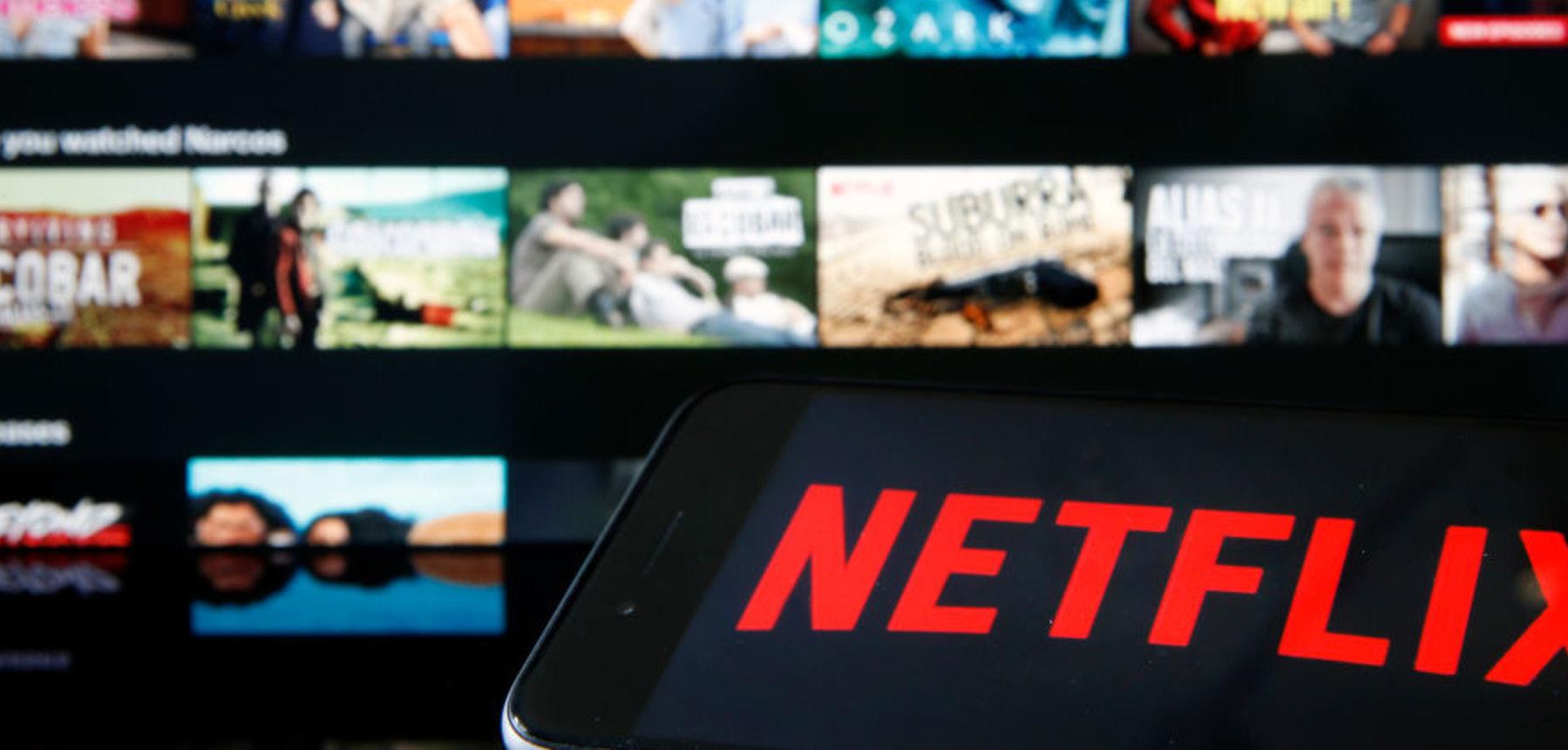
If you were subscribed to Netflix late last year you might have come across quite an ironic new addition to the streaming service’s seemingly endless chasm of content. Blockbuster, billed as a workplace comedy a la The Office, Brooklyn Nine-Nine or my personal favourite Parks & Recreation, follows the adventures of the employees tasked with managing the last ever Blockbuster video-rental store in the United States. When one considers that it was Blockbuster, in an attempt to
the face, certainly the burgeoning entertainment industry, the loss of subscribers and the streaming climate shifting are enough of a wakeup call. Right?
With 223m subscribers as of Q1 2023, Netflix isn’t going anywhere anytime soon. Sitting on its streaming chaise the giant lives well, but knocks for concern and cracks beginning to show have recently caused investors and customers to caution against longterm commitments to the service.
The lifecycle of a company dictates it ought to go through periods of transition, much like individuals, to build maturity, redress problems and adapt to shifts in their markets, but this market is still relatively new, in the grand scheme of things. What’s shifted is the playing field.
In conquering the videorental market and dispatching Blockbuster as its main rival, Netflix’s astronomical growth to streaming giant was unprecedented for an entertainment business, but that’s not “impressive” anymore. It is the Disney+, Amazon’s Prime Video, Warner Bros. Discovery’s HBO Max, and Apple’s Apple TV+s of the world that have fragmented a once consolidated viewership base. Truth be told, this list is non-exhaustive and that itself is part of Netflix’s problem.
TV, Prime Video and Apple TV+ weren’t enough, you have Hulu, Peacock, Paramount+, LionsGate+, AMC+, Crunchyroll, Rakuten, Showtime, HayU and honestly if another provider adds + to their title I may just go insane. This decentralisation of content is meant to combat the monotonous drab often associated with oligarchic network TV, but in reality it might be harming the market’s reputation for providing quality entertainment by demanding quantity in the number of subscriptions you seem to need to own instead.
acquire the then budding startup, that laughed in the face of Netflix’s co-founder Marc Randolph, a weird sense of reality kicks in. As Randolph told the Guardian in a 2019 interview: “Blockbuster laughed at us… now there’s one left.”
If Blockbuster’s poor reviews, overwhelming nostalgia dumps, and ultimate cancellation not even a month after its debut on the streaming service weren’t enough of a weird, meta-slap in
For the first time in its business lifecycle, Netflix is facing competition on multiple fronts. Its rental war with Blockbuster seems like a poultry squabble when contrasted with the variable array of providers seeking to garner the subscriptions of millions upon millions of potential customers.
If you asked me to name as many streaming providers as I could in 1 minute, I could reach about forty, no exaggeration needed.
If Disney+, HBO Max, Now
A distinct complication facing Netflix and its dwindling subscriber base is the psychological phenomenon of recency bias. Extensively documented in investing and behavioural economics, it refers to the preferences of individuals being swayed by those events or phenomena that occur fresh in their minds. HBO, of Game of Thrones fame, have a reputation for offering higher quality programming, yet the culmination of their prized show left a sour taste in many people’s mouths. That was until the media giant began producing award-winning shows made for streaming TV such as Succession, House of the Dragon, The White Lotus and most recently, The Last of Us. It is an investment paying off for both subscribers of its HBO Max service and investors alike. The Internet and the modern entertainment industry is one big search for the newest trend, and streaming is no exception to this contemporary convention.
Adjoined to this problem at the hip are more recent concerns by customers, commentators and investors alike that the streaming giant has, for years, prioritised quantity over quality, choosing
to place a placebo-like effect on customers, seducing them into believing each project greenlit by Netflix’s Original studio will get the same level of care, attention and excellence as Stranger Things, Bridgerton or Don’t Look Up. One need only look at the overflowing cornucopia of cancelled shows Netflix has pulled from its proverbial writers room. Adaptations of the Resident Evil Franchise, the famed Anime Cowboy Bebop, and Altered Carbon, billed as Netflix’s answer to Westworld-esque Sci-Fi all met the same grisly fate, despite garnering audiences that would have made regular network TV froth at the mouth. No director or show is exempt from this either. Dark, one of Netflix’s most beloved non-English language shows, was followed up by its creators with 1899, released in November 2022. Taken at face value, the viewership numbers were healthy, totalling 79.2m hours watched in its first week. It didn’t take long before the chopping block(unexpectedly) beckoned, with the genre-blending series getting scrapped at the start of this year. As Forbes recently noted, Netflix is coming across now as more of a, “graveyard of dead series with unfinished conclusions,” than a hallmark staple on Smart TV.
Netflix’s own business and operational decisions are certainly not acting as quite the cushion many at its top level would have hoped. Price hikes in this industry are something of a novelty, with Netflix the only service to have increased their asking price for all three tiers of subscription in recent years. This might seem counterintuitive, and you would be right to question this decision. Despite pouring millions into production of original streaming
content, such gambles seemed to not pay off and, like any struggling business, Netflix have shifted the burden to consumers. It does not bode well for the streaming giant that I can subscribe to Prime Video, Disney+ and Apple TV+ for roughly the same price as Netflix’s premium tier subscription.
Amid these price increases, Netflix’s tug in the other direction in an attempt to lessen the blow is a cheaper, ad-supported tier of its service. Now, where have I heard that before?
Network TV. RTE Player. BBC iPlayer. ITV Hub or whatever it’s called now.
In the past decade or so that streaming has burrowed its way into the mainstream and the ordinary home, it has without a shadow of a doubt brought connotations of ad-free entertainment with it. You cannot tell me that the first payment to Prime Video or Netflix came with the hope of advertisements blaring every 15 minutes or so. As a long-time admirer of shows such as Doctor Who and the assortment of comedy series the BBC has produced in recent years, I assure you there is nothing worse than getting halfway through a series finale only to have some marketing rubbish thrown at me about BBC’s other shows, none of which I remember, and for good reason. Netflix is regressing, not just when it comes to the quality of its creations, but in its corporate mindset too.
All this is to say that the future of entertainment and how we consume it looks set for a shaky ride. Gone of course are the days where you physically own a copy of a film or series, and we must now contend with shake-ups that appear to be happening from the top down.
Price hikes in this industry are something of a withnovelty, Netflix the serviceonlyto have increased their asking price for all three tiers of subscription
Content warning: This article contains discussion of eating disorders.
National Eating Disorder Awareness Week, February 27 to March 5, has profound importance in spreading awareness of one of the most illicitly pervasive issues in our contemporary lives. In light of this importance, Trinity News spoke to Ellen Jennings, the media and communications head of Bodywhys, Ireland’s national eating disorder awareness organisation. Throughout the discussion, Jennings highlighted their work, the ubiquitously hidden presence of disorders, algorithms, and diet culture, and the extent national incentives have gone to administering care for those struggling.
Jennings explained that Bodywhys is “the national voluntary organisation that supports people affected by eating disorders and their families”, outlining the goals of the organisation as: “[providing] a listening ear, as well as training and documents for health professionals such as dentists, doctors, and nurses on recognising symptoms of eating disorders among their
patients.” Also, Bodywhys offers a helpline to “those who wish to reach out to discuss their problems if they are unable to discuss it with friends and family.” All of these functions contribute to Bodywhys’ function of spreading awareness of and aiding those affected by eating disorders.
Acting as an awareness organisation, Jennings clarifies that Bodywhys is not responsible for formally diagnosing those with an eating disorder: “Bodywhys are not involved in treatment or diagnosis but ensure the person has a confidential space to share what is going on. Oftentimes those who reach out are family members aware of something going on but don’t know how to approach the situation. We offer a program for families that teaches communication techniques to apply to a member of the household who’s struggling.
In terms of the training that doctors can get, it varies on the doctor and their level of expertise surrounding eating disorders. This coupled with the diagnostic criteria for eating disorders and the different factors doctors look for can sometimes prevent the individual from getting the help they may need. Part of the diagnostic criteria historically was a question around menstruation, and this put up a barrier to men who were coming forward with issues related to eating. This has now been taken out of the criteria. And when we think about weight now, it would be a change in weight over a certain amount of time rather than a specific weight. We need to make sure the adequate training is there for professionals when on the other side.”
Jennings acknowledged that doctors have restricted diagnostic criteria in the past into binaries.
Jennings notes the “misconceptions [surrounding eating disorders] present among Irish people, but I think we see confused ideas all around the world, especially with the way both the mainstream and social media perpetuate ideals to those vulnerable. A historical falsehood is that it was a female illness of adolescents, and this presented many impasses.” Instead, “any period of change in a person’s life is difficult and eating disorders can serve as a response to this change. We think of them as a coping mechanism. There may be things in their life that seem out of control, with strong emotions occurring all at once. On the surface, the person can assert this control over food.”
“When the disorder is working for the person, they may not at first recognise that something is wrong. It’s not until the disorder begins to take control over them that they realise they are now out of control. So that sense of control they once had in the beginning is
lost, and they fall into the cycle of compulsion.”
Jennings’ description of this reflects a mantra associated with Bodywhys — are you controlling your food, or is your food controlling you? When asked if there commonly is a crossover between eating disorders and other psychological disorders and illnesses, Jennings responded that they are “complex and can exist in conjunction with other mental disorders”. She elaborates on this by explaining that “perfectionism is part of the mindset of a person with an eating disorder. There is a tendency for the individual wishing to be perfect at their eating disorder. And when the individual feels like they are losing control, it feels like they are failing.” She continues: “That sense of perfectionism is gone,
individual curates and interprets the content on their feed. She responded that there exists a “landscape of factors, and social media is an external one. Eating disorders arise from internal and external factors together. It is important to note that it’s something people are exposed to constantly.” She concedes: “The content they’re exposed to will be a reflection of the content they’re interacting with the most, and this registers it as normal. If someone is struggling, algorithms make it harder. If they are consuming content surrounding weight or food persistently, it is not surprising that it’s number one.” She does believe it’s not entirely futile. “There is a flip side, as it’s also a place for those in recovery. One can curate their feed so that they’re not exposed to diet culture. There’s this idea that someone should follow the exact behaviours of somebody online, and it can spiral into more of this content. This is a snapshot, and it may not even be what they themselves are doing. People vulnerable to eating disorders seek out content that verifies the disorder. The eating disorder will latch onto messaging that believes that what it’s doing is the absolute right thing to do. It creates this sense that if they don’t follow these exact rules that they have set out for themselves, they’re doing something wrong. When people are in that space, they have black-and-white thinking. If someone looks at a picture, there may be various aspects they’re looking at within it. But for someone with an eating disorder, there can be a heightened focus on the body image in the picture, and the specifics surrounding what the person does to control their body. They find it hard to see outside of that.”
talk about it as a voice to establish distance between the person they know they truly are underneath this entity that seeks to harness a sense of control. It can be helpful for surrounding friends and family to refer to it as a voice, and what the voice is telling the person to do, as opposed to putting the blame on the person themselves.”
and this can be a turning point. The eating patterns and physical aspects are merely a behavioural surface to the person’s turmoil. They can find themselves needing to disentangle which aspects need to be addressed for them to move forward. When there’s an overlap, such as depression and an eating disorder, they can experience an additional barrier as the other one needs to also be addressed.”
The misconceptions Jennings mentioned infer a misconception that an eating disorder is a choice. A survey was conducted asking College students to think of what comes to mind when thinking of the causes behind one developing a disorder. Social media and diet culture were the two most common answers.
Jennings was asked if social media is truly a factor, or if it is the responsibility of how the
“The eating-disorder-voice is often this internal critic that has negative commentary in the person’s mind. Part of moving away is learning to quieten that critic and amplify the selfcompassionate side of their mind. There are different definitions of what recovery means for people. Some think this critic will always be there but that person now has coping mechanisms and doesn’t believe the voice. When someone is malnourished, they often don’t have the energy to fight back against the critic, it can become loud and at the forefront of their mind. It’s difficult for them to engage in rational thought when they don’t have the fuel.”
Jennings emphasised that this critical voice attempts to make decisions for the person suffering from the eating disorder. She continues, explaining why it’s important for some to psychologically detach their disorder: “It can be helpful for someone to speak about the eating disorder in that way, to name it, or
A 2017 report from Our World In Data claims 16 million around the world are estimated to suffer from anorexia and bulimia. Information on Avoidant Restrictive Food Intake Disorder (ARFID), Other Specified Food or Eating Disorder (OSFED), and binge eating disorder were not available. I asked Ellen if she believes that with many statistical voids, do we have an accurate perception of how prevalent eating disorders are?
“Statistics can be challenging,” she says. “With eating disorders, they’re secretive in nature. It’s difficult for many to even be honest with themselves. In Ireland, we don’t have one database, so the figures may be coming from hospital admissions and external sources, it’s not specifically one group. Due to the rigidity of diagnostic criteria, it can be difficult for someone to receive treatment, and this can reflect how statistics could be underrepresenting the reality. ARFID and OSFED are recent in terms of official recognition, so there isn’t much research on them. A lot of past research historically was done on females with anorexia as well. It’s important that future research also reflects on men, and other disorders besides anorexia nervosa.”
“
The training that doctors can get varies on the doctor and their level of expertise surrounding eating disorders
The content they’re exposed to will be a reflection of the they’recontent interacting with the most, and this registers it as normal ... makealgorithms it harder
“ Any period of change in a person’s life is anddifficult disorderseatingcan serve as a response to this change. We think of them as a coping mechanism
Jennings believes there is far more acknowledgement of eating disorder stigmas, and that they “are reducing, but there’s a long way to go.” She states that Bodywhys offers some potential solutions, namely in their interaction with school children: “We hope the transparency of talking to them about body image during that formative stage of their life will allow them to develop healthy relationships with food.” She reiterates: “Statistics surrounding eating disorders are difficult to go by, and are in many ways vacuous when dealing with a topic of such a secretive nature.”
There’s a divide within the media where many believe tackling our obesity problem and raising astute eating disorder awareness are mutually exclusive affairs. The National Prevent Weight Gain campaign has been heavily criticised as insensitive to those with eating disorders. RTÉ’s statefunded Operation Transformation, despite years of controversy over the derision towards its contestants and archaic weigh-ins, continues to omnipotently air every January.
Jennings was asked if she believes national initiatives are contributing to the moralisation and perpetuation of diet culture. She clears up another misconception: “It’s important to keep in mind that people with eating disorders can also be living with obesity, and those two aren’t mutually exclusive. We must work with professionals who understand this to make sure our messaging is aligned. People going into treatment for obesity often have screening for eating disorders and can be malnourished through restriction of food groups. Our colleagues in Australia have released a document surrounding eating disorders at higher weights, and how this has actually been a barrier for them receiving treatment. It’s commonly heard from people that they need to get sicker and reach a certain weight before they are sick enough to get the help that they always needed. There can be the same internal thought processes with someone overweight and underweight. It is of great importance to be aware of that.”
The HSE estimates 188,895 people in Ireland will experience an eating disorder. 13% will be men. We’re witnessing a precipitous incline of male eating disorders, specifically regarding “muscle dysmorphia” in sport regimens and orthorexia — a disorder characterised by an obsession with the purity and health content of food intake. Jennings was asked if she’s seen an increase in male enquiries, and how these enquiries differ from conventional conceptions of eating disorders.
“We see men talk about how their experience differs from women, but there can be an overlap,” she says. “That drive for muscularity is something we see more prevalently. Oftentimes men delay reaching out for help due to the stigma of it being an illness of the female. We know men are
less likely to come forward until it becomes more entrenched, and when we do receive enquiries, they may require hospitalisation by the time they reach out. The ideal for leanness is highly perpetuated and media presentations often differ as well. This is not to say men don’t struggle with anorexia, they do, and bulimia is extremely common in men. But while the perpetuated ideals are different, we remark how the nature of eating disorders have more in common than they do different.”
National statistics elicit a sense of worry, that the issue is unfurling. An increase in hospital admissions over 2020 could be attributed to the loneliness many faced during the pandemic. The July 2021 figures for hospital admissions saw a 61% increase from 2019 for children and adolescents. Out of the 182 hospital admissions for eating disorders in 2021, 145 were independent or private. In the 2018 budget, only 137,000 euros of the nearly 4 million allocated to eating disorder treatment was spent.
Jennings was asked if this data would suggest support is lacking, and how this affects those wishing to access a nationalised treatment pathway: “Historically when people were to seek help, there often was a postcode lottery the person would find themselves in, where services may have not been available in their area, or they found themselves on a waiting list. The HSE National Clinical Program for Eating Disorders was
set up in 2018 to provide care for people no matter where they were based so that they would have access to a specialist team. It began its rollout but was reverted due to Covid. It has begun to get back on track with recruitment. At that point, it would work so the person can visit their GP and be referred to a specialist in their area.”
Jennings asserts recovery requires a cognisant approach not complete after weight restoration but is also about the persistent practice of mindful behaviours: “It’s important they have access to a multi-disciplinary routine. We know early intervention is important. Before a person becomes so unwell that they require hospitalisation — if they had access to teams so they could continue to live their day-today life — going to school, work, or living at home. The hospital isn’t the ideal space for someone to recover. You don’t come into a hospital and leave recovered, there is a process in the person’s natural environment. It’s difficult for people, particularly when on a waiting list. That’s when people reach out to us to learn what to do in that period.”
I asked Ellen if she was optimistic about the future of treatment and if the delays will have a knock-off effect felt for many years.
Jennings speaks on how she thinks these delays will have a knock-off effect: “Hopefully there will be more teams throughout the country and recruitment will
continue to fill positions. It should be further along than it currently is, but we’re optimistic that in the near future people can avail of these services when they’ve recognised something isn’t right.”
When asked about how a student struggling with an eating disorder would navigate getting support, she notes that “By reaching out, they’ve already taken the first step in being honest with themselves.” She continued: “It can just be that one line of ‘I’m not feeling great within my body and don’t know what’s going on. A major step would be to make that visit to the GP who can refer you to a specialist. When noting these specialist teams, it’s important to note that this isn’t the only treatment available. There is the private and public treatment sector. Opening up at that point can make the situation feel very real. It also can feel like a relief that the person now has an answer, and there are more clear pathways for recovery.”
Jennings concluded: “Our main message we try to get across and consistently remind others is that you can recover. There are oscillations along the way, and it is by no means a linear process, but you can live in a way that isn’t determined by the eating disorder’s control. Recovery is possible.”
If you are struggling, you are not alone. You can contact the Bodywhys helpline at (01) 2107096 or via email through alex@ bodywhys.ie

A major step would be to make that visit to the GP who can refer you to a Whenspecialist. noting specialistthese teams, it’s important to note that this isn’t the treatmentonly available. There is the andprivate treatmentpublicIMAGE VIA BODYWHYS ON TWITTER
On Thursday March 30, Meryl Streek will headline the main stage of Dublin music venue Whelan’s with support from upand-coming Wexford band Peer Pleasure. The last time these two acts played on the same stage the setting was very different to that of the iconic venue on Wexford Street. On 20 September 2022, Meryl Streek and Peer Pleasure both took part in a concert organized by activist group the Revolutionary Housing League (RHL) at Parkgate House in Dublin 8, better known as Ionad Seán Heuston. The event was held in support of the organization’s efforts to use the vacant premises to provide accommodation for the homeless.
On the face of things, the event harkened back to the nascent days of the punk music scene

in Britain in the late 1970s and early 1980s, when groups such as Crass and the Slits could be found organizing festivals in squats and vacant properties in Thatcherera London. The concert was reportedly attended by between 150 and 200 people, a mixture of residents and outside supporters who paid a donation at the door. Both artists make music which is, to use a phrase from Brandon Murphy, guitar player and singer with Peer Pleasure, “punk adjacent” and both heard about the project through word of mouth and were keen to get involved. For Meryl Streek, whose debut album 796 now boasts tens of thousands of streams on Spotify, this was “a perfect first gig”. Fresh off the back of the release of his vitriolic single Death to the Landlord, the show in Ionad Sean Heuston was an ideal place for him to air his raucous and outspoken brand of punk poetry for the first time. “It was grim and it was real,” Streek recalls of that night, adding that the RHL “were doing great things for the people that were living there.”
Renaissance or evolution?
To describe the event in Ionad Sean Heuston as merely a punk revival would, however, be highly reductive. For one thing, the concert also featured groups playing everything from traditional Irish music to modern Hip-Hop and for Meryl Streek, while the punk ethos was definitely palpable, it was not necessarily central: “it was punk but it wasn’t planned”. For another thing, it is not necessarily clear
that anything was being revived that night in Parkgate House.
Hannah Hogan, an organizer involved in a group known as Tunnel Rats which recently staged a DIY Punk Festival in Bohemian
She describes events which combine talks from anti-fascist groups and activist organizations with an inclusive and openminded approach to live music. From talking to Hogan, one gets the impression that this culture is undergoing more of an evolution than a renaissance.
Crises both personal and political
FC’s Dalymount bar, speaks about a “tight-knit community” which has been organizing and attending these gigs for well over a decade.
When it comes to organizing these shows, Hogan says “the whole point is that it’s political”. Thus, while Dublin’s DIY music tradition may be well established and longstanding, it appears to have taken on a greater urgency to those involved in it over recent years. The reasons for this are political but they are also highly personal and, as with so many other areas of Irish life, at their root is the subject of housing. Meryl Streek started releasing music upon his return to Ireland following an 8-year stint in Vancouver. “I went over when there was no work and stayed over there because there was no housing,” he tells me, stepping off a Dublin bus. “I’m full of rage,” he admits, articulating a frustration which can be heard throughout his music: “I reached the point where I said I had to do something”. While the songs on 796 centre around the mother and baby home scandal, they also take aim at contemporary Irish politics and politicians. “Someone needed to start getting music out there at a commercial level so that these people could hear,” he tells me, “so I made an album that was so powerful I knew it couldn’t be ignored”. To the
members of Peer Pleasure, housing is also a central issue. I speak to the band’s drummer Céin O’Dowd as he makes his lengthy commute from his home in Wexford to attend college in IADT. “Everyone is affected,” he says, “if you think you’re not then you’re not clued in”. Yet at the same time that music is moving towards activism in the face of the challenges of contemporary Irish society, activism is also moving towards music. Peer Pleasure and Hanna Hogan both tell me that they have had representatives of the RHL speak at their events, while the Community Action Tenants Union (CATU) and Anti-Fascist Action both made an appearance at the Tunnel Rats’ Punk Fest in November. Brandon Murphy of Peer Pleasure is clear about his band’s role in these events. “We’re just the excuse for the people doing the hard work to let loose,” he tells me. “I’m no revolutionary. I’ve met people who are and we like them and they like us but we’re just here to make sure it’s not a misery all the time.” However, he also recognises the potential for these events to place people in contact with ideas which could mobilize them, saying that “the best outcome for our gigs would be that people we know who are not politically interested would meet people who are”. Meryl Streek’s approach, while more direct, speaks to a similar objective. “I want to see kids being angry,” he says, telling me about the type of message he wants to send with his music. “I want to see them realize they’ve been snookered”. To Hannah Hogan meanwhile, punk “comes from a place of frustration” and frustration, particularly at a lack of housing and of social spaces, is something she sees all around her.
Facing the inescapable For activists, musicians, and musician-activists, the benefits of events such as those held in Ionad Seán Heuston, the Bohs bar, or those organized by the Tunnel Rats, are not difficult to see. They bring frustrated people in, providing them simultaneously with an outlet and, crucially, a direction. These are the spaces in which music and activism collide. And if you don’t like it? “Go listen to George Ezra,” says Brandon Murphy. “Just go to Workman’s,” says Hannah Hogan. Whether they see themselves as part of a wider movement or not, there appears to be a certain feeling of inevitability amongst these artists and organizers with regard to the music they’re involved in. For them as for so many other people across Irish society, issues such as the housing crisis are all-consuming. Who are they to try and escape the inescapable?
“
I went over when there was no work and stayed over there because there was no housing... I’m full of rage says HoganHannah
Oatly’s aggressive marketing campaign
Nina Crofts
page 23
Editorial: Welcome to our Green Issue

Editorial page 25
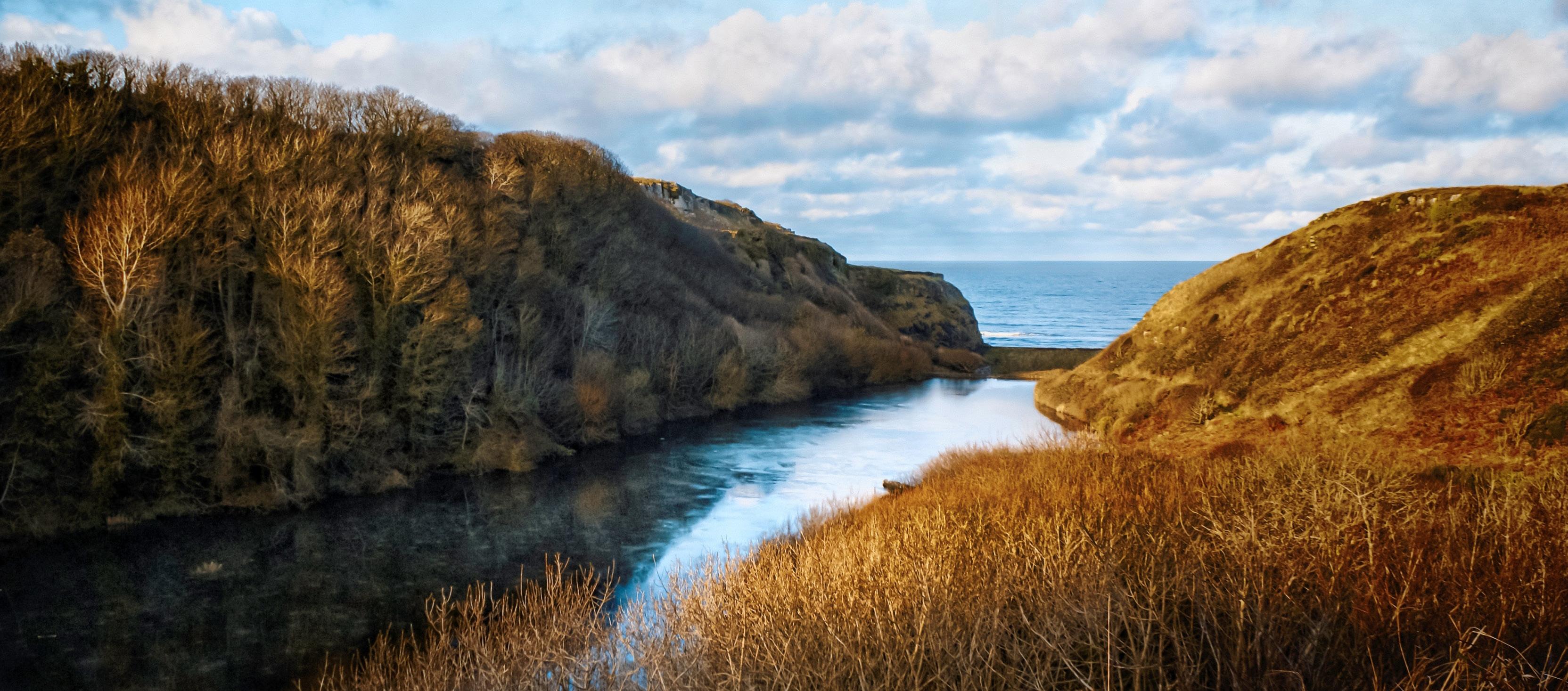
Climate change poses potentially catastrophic threats to Ireland’s welfare, specifically to the country’s dwindling water supply and the short-staffed health system. The climate crisis in Ireland has reached a breaking point whose only solution lies in implementing grassroots initiatives which engage local communities and obtain their support from public and private sector partnerships.
In 2019, the Dáil Éireann declared a climate and biodiversity emergency in Ireland. This declaration was accompanied by a government target of net emissions by 2050. Transport emissions constitute a major proportion of Ireland’s carbon footprint. However, in spite of their ambitious goals, the government has made minimal efforts to limit greenhouse gas emissions from existing vehicles or to provide alternative, more sustainable vehicles. There are embarrassingly few alternatives to car transport available to the
large commuter population in Ireland. However, the advent of Greenways in Ireland provides a feasible solution to the destructive transport emissions currently plaguing the Irish climate. Greenways provide a practical and safe mode of transport for cyclists throughout the country. In comparison to driving, cycling is a much more sustainable alternative for travel. In fact, a study conducted by engineers at the University of Galway demonstrated that a 3-metre-wide Greenway produced only 30% of the carbon footprint that a single-lane rural road produced.
What’s more, the carbon dioxide emissions produced by Greenways almost exclusively came from the greenway’s construction. Therefore, once the Greenway has been built, it produces a virtually negligible carbon footprint. If driving was replaced by cycling on Greenways throughout Ireland, the pollution of the air by greenhouse gases would be reduced dramatically.
Waterways Ireland provides the ideal model for the development of greenways which maximise environmental benefits while also
creating a collective consciousness among the Irish population regarding the climate crisis.
Waterways Ireland is one of six North/South Implementation Bodies created by the British-Irish Agreement of 1998. It is the crossborder authority responsible for the management, maintenance, and development of several waterways and greenways in both Northern and Southern Ireland. One key component of their operating model is their high level of engagement of local communities in their initiatives. Waterways Ireland has successfully galvanised support for climate change solutions through educating and engaging local populations. Once the greenways and waterways are built, local businesses are very involved in contributing to their maintenance. Moreover, Waterways Ireland has partnered with organisations such as Rowing Ireland to host competitions and trainings on their waterways in order to cultivate knowledge of the waterways. This collaboration demonstrates Waterways Ireland’s commitment to engaging local people in their greenways and
waterways and ensuring that people in surrounding areas can avail of the numerous benefits offered by these developments. Waterways Ireland has also launched an education programme to teach children about the environmental benefits of waterways and greenways. Local communities’ dedication to promoting climate change solutions produced by these initiatives will provoke the development of a collective public mandate for climate policy.
Waterways Ireland has created both sustainable infrastructure and a sustainable call to action which will pave the way forward for Ireland’s climate action. In addition to the inclusion of local populations in their programs, Waterways Ireland has also introduced a new model of public and private sector collaborations aimed at combating the climate crisis.
Public-private partnerships are central to Waterways’ mission. Waterways Ireland receives funding for their projects from both local and national authorities and the private sector’s investments. One such
public-private collaboration is the expansion of the Royal Canal Greenway, extending the greenways from the North Strand in Dublin to Phibsborough. This project is a partnership between Dublin City Council, Waterways Ireland, and Irish Rail. This extension will enable Dublin residents to commute easily and sustainably across the city. This project demonstrates the efficacy of public-private partnerships which allow large government projects to be completed with private-sector financing. Waterways Ireland’s publicprivate partnerships provide the blueprint for creating sustainable infrastructure through mobilising all sectors of society.
Waterways Ireland’s monumental developments have clearly illustrated that the way forward for climate action in Ireland relies upon the creation of grassroots initiatives that engage all sectors of society and generate extensive community involvement. These grassroots programs are the only way to avoid the over-politicisation of climate policies and to instead generate long-lasting, sustainable infrastructure in Ireland. The government must spotlight Waterways Ireland’s incredible work and sponsor other initiatives aiming to create sustainable climate change solutions through engaging with local communities and catalysing public and private sector support.
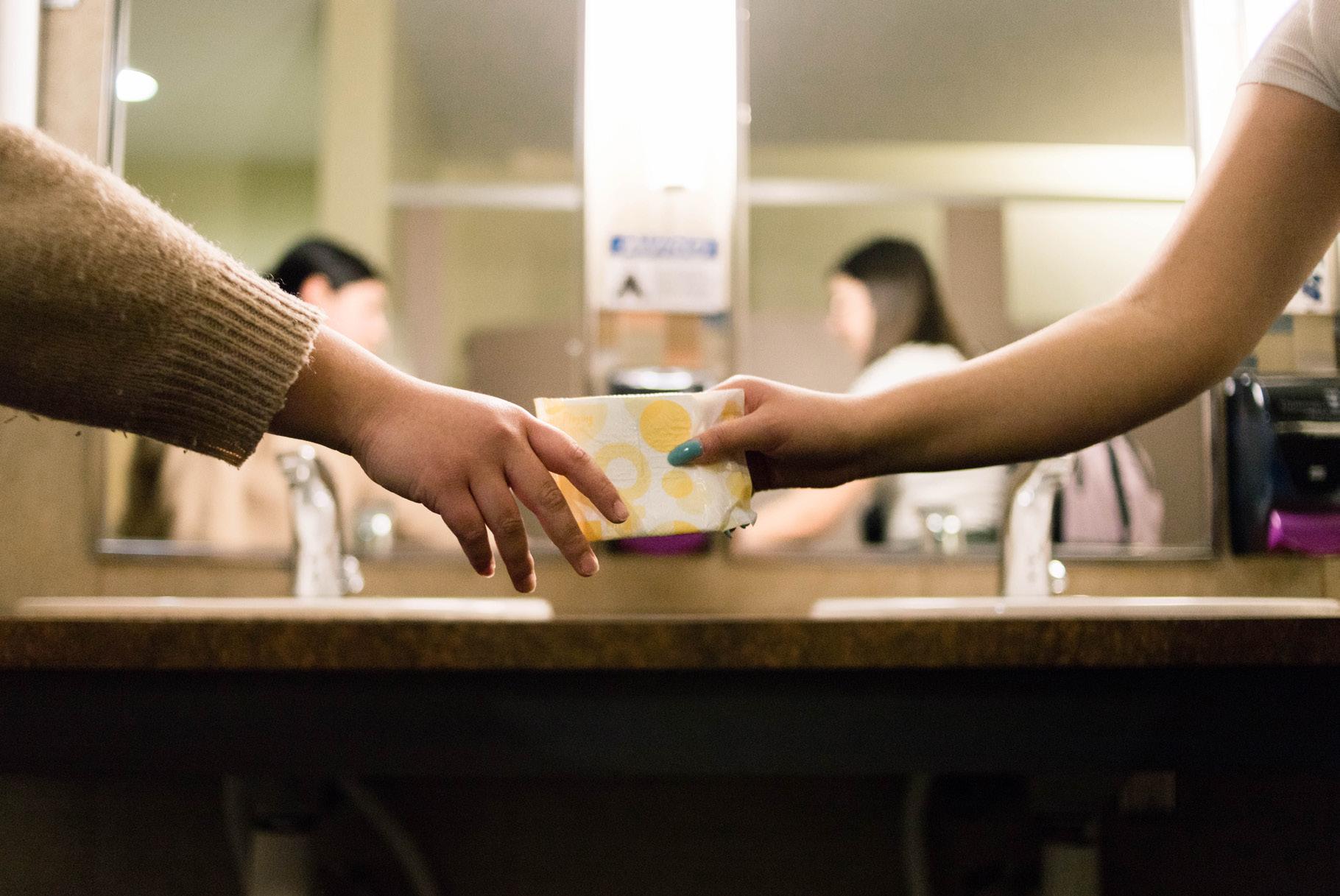

mark.
After a long day of lectures, library work and societies, I often find myself sitting in the arts building, looking out over Nassau street as the sun sets and processing the chaos of the day that just ensued. Naturally, as I’m sitting there, taking a moment for myself, I occasionally wander over to the bathrooms. One evening, at the beginning of February, I did just that. But as I was washing my hands, my eyes were immediately drawn to a bright pink infographic situated just behind the sink: “What is the Environmental Impact of Your Period?”
As someone who grew up in Washington DC and spent a number of weekends organising protests for reproductive rights, screaming outside of the Capitol Building, and fending off religious groups telling me that I was “going to hell,” my immediate reaction was an audible “What the f***?!”
Nearly every single cis woman knows the struggle of “that time of the month.” The cramps, the headaches, the bloating, the cravings, the mood swings, the random spells of nausea. And now, as if women aren’t already torn apart for everything that we do, I was staring at a poster that made me feel guilty for not thinking more about how I approached those seven days of agony.
Periods are stigmatised enough as it is. Women go out of their way to conceal the reality of what they are experiencing for fear of being judged. This poster just compounds that stigmatisation.
At first, I felt like a crappy person for having the reaction that I did. I truly believe that climate change is one of the most critical issues that our generation has to address and I try to make environmentally conscious decisions wherever I can. But examining the poster further I saw that other women were clearly as annoyed as I was. Comments such as “F*** off,” “Stop Shaming Women,” and my personal favourite: “Men wreck the world, start wars, and women need this S**t,” were plastered all over it. Clearly, I wasn’t the only one who felt this poster had missed the
When I looked into environmentalism as it pertains to period products some more, I began to understand why the environmentalists felt the need to disseminate this information. According to the European Commission, period products are the fifth most common form of trash found on Europe’s beaches. As well as this, 200,000 tons of plastic waste from pads and tampons wind up in UK landfills each year, according to research conducted by the London Assembly. Clearly, this is a significant issue.
However if one were to try to make a sustainable switch, they would likely find the alternatives to be unbearable. This poster suggests menstrual cups, reusable sanitary pads, and period proof underwear. Here’s why none of these “solutions” are truly viable.
Anyone who has ever used a menstrual cup knows that the very act of cleaning it out every couple of hours is timeconsuming and frankly just unpleasant. Furthermore, the fear of the suction wearing off and being stuck in public with nowhere to turn is stressinducing. Health-wise, these cups carry some risks as well. According to a 2020 report from the BBC, menstrual cups have the potential to cause “pelvic organ prolapse,” which is where “1 or more of the organs in the pelvis slip down from their normal position.” Plus, BBC News reports that most countries have not properly regulated menstrual cups, so the guarantee of proper sanitation that comes with a regular pad or tampon just isn’t there.
As far as “reusable sanitary pads” are concerned, a version of these were used prior to the widespread launch of Kodex’s disposable “sanitary napkins” in 1921. Before the arrival of Kodex, women resorted to pieces of old sheets, spare scraps of fabric, and other make-shift, household items. These “homemade” sanitary pads were often then washed and reused, similar to the reusable sanitary pads suggested in the infographic. In an interview with Smithsonian Magazine, communications scholar Roseann Mandziuk explained that “given the discomfort and inconvenience of cloth pads, and growing expectations that women would work and attend school with their
usual efficiency all month,” Kodex became a sensation soon after its release. Thus a reusable sanitary pad almost feels like a step back for women as far as convenience and practicality is concerned. Why would we revert to a period product that made the lives of our ancestors more difficult?
Lastly, period-proof underwear. For those who aren’t familiar, “period proof” underwear looks almost identical to regular underwear, but the supposed “moisture-wicking fabric” of its lining is able to absorb liquid. While, to some degree, these seem like a viable alternative to an ordinary pad, there are a number of things to consider. Firstly, for women with heavier periods, it is unlikely that one pair of underwear is going to do the trick. For some perspective, according to the University of British Columbia, an average maxi pad or tampon holds approximately two teaspoons or 10 ml of blood. I, personally, would be nervous to trust a thin pair of underwear to do the same. Secondly, like menstrual cups there are potentially serious health risks to this option. In January 2023, period proof underwear brand Thinx settled a three-year class action lawsuit for $4 million as their underwear, after testing, contained significant levels of polyfluoroalkyl substances (PFAS) or “forever chemicals.” These “chemicals,” according to the New York Times, are “practically indestructible” and have been classified as “potential carcinogens.” PFAS also have negative effects on hormonal function, including “accelerated ovarian ageing, period irregularities and ovarian disorders like polycystic ovarian
syndrome.”
For pregnant women, exposure to PFAS causes increased risk of high blood pressure and heightened risk of low birth weight for babies. They also have the potential to harm reproductive capabilities and negatively affect early pregnancy. While I am sure that there are other brands of period-proof underwear available on the market that do not contain PFAS, the fact that a study from Mamavation found that 65% of 17 pairs of period underwear from 14 brands tested contained PFAS is enough to deter me from jumping on the bandwagon just yet.
Though disposable pads and tampons have a significant environmental impact and have become a money-making commodity for a number of men who don’t know the first thing about a period, people with periods can vouch for the fact that they simply make life easier. Infographics like this one, despite the tiny disclaimer at the bottom stating “menstrual management is a personal choice,” make women feel guilty for a natural function that they should not be ashamed of. While I, like so many feminists, believe that the future of period products should be more environmental, menstrual cups and period proof underwear are not the sole solution. Let’s bridge the gap between environmentalism and feminism to fight the patriarchy, make period products an industry that puts women before profit, and provide women with a truly viable environmental alternative that makes all of our lives easier when the dreaded time of the month comes around, without the guilt-tripping.
“
A reusable sanitary pad almost feels like a step back for women as far as convenience and practicality is concerned. Why would we revert to a period product that made the lives of ancestorsourmore difficult?

An Oatly campaign that took over ads on Dublin transportation and billboards starting in January has ignited a significant amount of controversy for its inflammatory marketing strategy that capitalises on the shaming of dairy consumers.

Over the past 10 years, consumers around the globe and even in Ireland, a country with a robust dairy industry, have been turning to plant based alternatives for dairy products. There are many explanations for this, including the rise in vegan lifestyles, increasing environmental consciousness, and frankly, the trendiness of nondairy milks.
Though almond, soy, and other milk alternatives are all relatively popular, in the past few years oat milk has massively increased in popularity, as a creamier and more environmentally sound option, with Oatly dominating a large portion of the market.
Oatly’s new brand campaign in Dublin has utilised the slogan “it’s like milk but made for humans,” a jibe at cow milk being intended for cows to feed calves rather than people.
The strategy makes sense, in a way. It forces people to give a second thought to the milk option they’re choosing and even reevaluate their consumption of dairy as a whole. But that’s a lot to ask from someone standing in Tesco, picking which milk to put in their cereal.
Brand advertising campaigns like this do have good intentions, don’t get me wrong. A big concern with this Oatly campaign and others like it, though, is that it alienates the very people they aim to market to.
Veganism is the butt of many jokes, mostly because of the stereotypes that underlie the movement. Many meat eaters view vegans as militant, aggressive and hostile to people due to efforts to convert others to veganism. This perceived holier than thou stance is the reason many people are turned off from becoming vegan or vegetarian themselves, or even experimenting with plant based products, fearing they are
being turned over to a cult of plants and tofu.
Take People for the Ethical Treatment of Animals (PETA), who are notorious for causing controversy as a result of their inflammatory animal rights campaigns that have ranged from portraits of nude celebrities to protest fur to insulting Steve Irwin only days after his death. Oatly’s campaign isn’t as extreme, but it’s an unfriendly callback to these more antisocial tactics of promoting animal welfare.
In reality, the vast majority of vegans and vegetarians are normal and accepting, understanding that small movements to push people towards more ethical and environmental lifestyles go a lot further than hostility.
But campaigns like Oatly’s do not do great justice to that reality. By calling oat milk “milk for humans”, Oatly is pinning nonvegans as strange and inhuman,
an accusation that polarises those same people they wish to appeal to, potentially solidifying them as anti-vegans for good.
There is a similar situation for many slow fashion brands and fast fashion critics, who aim to turn people away from fast fashion brands through guilt and shaming tactics, which only incites consumers to double down on their Shein purchasing habits, feeling as though they are being singled out and targeted for what is often a decision of convenience.
Now, don’t get me wrong, brands going political is not always a bad thing and it is oftentimes perceived in a great light. Campaigns from Nike standing with Colin Kaepernick in the wake of him taking a knee to Ben and Jerry’s pulling sales from Israel have been met with decent amounts of backlash, but overall increased popularity for the brand.
The critical thing with these campaigns is they aren’t making people feel targeted for the individual decisions they make, only endorsing human rights based causes. While most people can support a political movement to empower a minority group or stand up to injustice, it’s a bigger stretch to get people behind a cause that regularly impacts their day to day decisions. It’s pretty
obvious that Oatly would support the plant-based movement, they’re an oat milk brand after all, so the excess flaming of their potential customers makes no sense and doesn’t reinforce the brand’s political message.
Oatly, I’m on your side. Most of us are. People who genuinely have no desire to be more ethical or environmental in their consumption of food products are few and far between. But aggressive and accusatory marketing campaigns aren’t going to convert the masses to non dairy milks.
Tap into the existing trends with non dairy milks. Further a mission of making it the “cool new thing” in coffee shops. Launch marketing campaigns that make people feel good about making a change, like the carbon footprint impact of switching to Oatly for a month, not ones that shame them for decisions they’ve already made.
We’re currently in a cost of living crisis, and more than that, a world where it feels like every little decision you make carries extreme weight. Next time someone is standing in Tesco picking the milk for their cereal, don’t make them feel forced to pick Oatly, make it feel empowering and fun, and you’ll start to see the masses turn.
“
By calling oat milk “milk for Oatlyhumans”, is pinning nonvegans strangeasand inhuman


Ireland is colloquially synonymous with its saints and scholars, resplendent landscapes, and magnificent language. The first of these may now confidently be labelled a mere historical adage. The second will undoubtedly forever remain. The third, however, is treading a perilously fine line between anachrony and truth.
According to the most recent Central Statistics Office account, the number of global Irish speakers was 1,761,420 in April of 2016. This number effectively represents a decrease vis-à-vis the most recent account. Furthermore, the enthusiasm to actually speak the language, it would seem, is equally, gradually dissipating: only 4% speak it daily. Whilst the connection may be hard to fathom, matters are made clearer upon understanding that a great proportion of those speakers restrict their practice purely to the
education system and the tedious repetition of popular expressions akin to póg mo thóin.
To understand this decline, historical context is imperative. As usual, the 19th-century famine had a role to play: the population fell by approximately 23%, a demographic catastrophe that most severely affected poor Gaelic-speaking communities in the West and South. Then, the 19th-century wave of migration of Irish speakers met the same stonewall as the survivors who remained in Ireland, forever buttressed as a poor underclass. Before then, the prominence of the language had already hit a hard turn when the British government’s education policies, established in 1831, stipulated that all classes had to be taught in English. One may even go as far back as 1607, wherein the two Earls — Hugh O’Neill and Rory O’Donnell — were permanently exiled from the island in order to pinpoint the genesis of its decline.
Anyhow, thereafter, Ireland’s ruling class was expected to be English-speaking Protestants. It won’t surprise anyone that the majority of fluent speakers today are concentrated along the west coast. One may go as far as to establish a connection between the West as an area subjected to lesser British control. Indeed, those who sat the Leaving Certificate will have fond memories of classics like Yu Ming Is Ainm Dom, itself proof of the very fact that the language is still thriving. Otherwise, however, it is unfortunately falling into disuse. As one of the sacrosanct pillars upon which the country is built, this may be interpreted as a loss of cultural identity and strength. Given those implications, it seems almost imperative that the language should come back to the fore.
There are purported multiple ways that one could go about doing so. Recognising the intrinsic value of the language may be
one. Whether the language still bears this external allure that may indicate its intrinsic value (e.g. school teaching and attachment to nationalism) could easily be debated. Brenda Power, for one, believes the way the language is currently taught to be a pedagogical failure. Accordingly, it may be that the language must be seen in a new light, as promoted through the medium of the popular arts. Some may be surprised to learn that this idea is rather old, finding its most expressive roots in Oscar Wilde’s 1891 essay The Critic as Artist, wherein the notorious playwright expressed the desire to unite the world through, inter alia, the use of the Irish language. Recently, a swarm of Irish films have been receiving critical acclaim at international film festivals. This has not only allowed for the proselytization of the Irish language through a popular medium, but equally for discussion around the subject, inspiring individuals to promote the language online. In effect, Paul Mescal recently did just that. Renowned for his laudable performance in Normal People, Mescal has become a trademark of Irish stardom. In a recent interview with TG4 at the 2023 BAFTA Awards, he — somewhat uneasily, though
with perseverance — held a lengthy, Irish conversation with the interviewee. Discussing the success of The Banshees of Inisherin and An Cailín Ciúin, the international film star went on to say that if the opportunity ever arose, he would consider filming a film as Gaeilge.
Given the recent international success surrounding Irish film production, the idea to produce a film in Irish with Paul Mescal seems, in this author’s opinion, like a pertinent first step so that the language may be rebranded in vogue. Celebrated actors in his position have a duty to ensure that our country’s language remains prominent. We need not restrict promotion to the cinematic medium, however. By promoting the language thereby, we should aim to mould a judicious relationship between young people and the Irish language. As previously mentioned, the educational system has largely failed to do so. Its techniques are outdated and inefficient. We need to make the Irish language appealing again; we need to see it as worthy of learning, speaking daily, and sharing with the world. Clearly, there are many methods to achieve such an end. Whichever we may choose, the end goal must never leave our sights.
according to Euronews, the European Union has proposed a ban on disposable vapes, there is little evidence that this will be acted upon any time soon.
From 1995 to 2015, the number of teenagers and young people smoking in Ireland had been continually decreasing. However, according to Professor Luke Clancy of the Tobacco Free Research Institute Ireland, from 2019 onwards this trend has done a complete one-eighty. In the past four years, smoking has been steadily on the rise again amongst a new generation. However, cigarettes alone do not dominate the market anymore. You would be hard pressed to find a bar, nightclub or any other social area frequented by students nowadays that is vape-free. It is an undeniable fact that, despite the World Health Organisation’s (WHO) health warnings, vaping is here to stay - at least for the foreseeable future. Although,
The sheer volume of vapes being purchased daily raises a serious environmental issue alone. Disposable vapes are often recycled incorrectly, if at all in the first place. The Vape Redemption Project, a 2023 Trinity Entrepreneurial Society’s Dragon’s Den finalist, is a student enterprise initiative which seeks to promote the recycling of these disposable vapes. According to figures collected by this organisation’s co-founders, Katelyn Davis and Lucy Daly, 71.8% of third-level students surveyed (56/78) did not know that disposable vapes could be recycled at all. This number becomes more alarming when you consider the fact that 42.9% said they vape socially, and 31% said they vape daily.
But just how harmful is it
for the environment if vapes are disposed of incorrectly? The answer may shock a lot of people. Vapes contain lithium batteries, which, if not recycled properly, can leak into water systems and cause contamination for local wildlife. As well as this, lithium batteries are in very high demand for their uses in electric cars, mobile phones, and PCs. If the college community wants to prove that it is serious about sustainability, then recycling these batteries in vapes is a great message to send. Not only would it help to reduce pollution, but it would also ensure that the production of electric goods can become more sustainable.
In the world of mass consumption that we live in, every individual has a responsibility to help the planet in any small way that we can. Although large-scale change must be put into place by governments and corporations, the work that each individual person can do to help the
environment will not go to waste. Recycling vapes is more complicated than simply putting them in your nearest recycling bin. As they contain lithium batteries, they must be disposed of in specific collection boxes or at specialised recycling centres. The Waste Electrical and Electronic Equipment Ireland (WEEE Ireland) has their blue battery boxes for recycling vapes in many newsagents and electrical retailers across Dublin. However, there are very few of these boxes within a close radius of Trinity’s campus. This does not encourage students, one of vapes’ largest user bases, to recycle their vapes on a consistent basis. Unfortunately, this leads to them being put in the wrong bin or simply thrown on the ground. This is where VapeBox comes in. As a result of discovering how inaccessible vape recycling centres can be for students, Katelyn and Lucy of the Vape Redemption Project developed the VapeBox. This is a bin for disposing vapes that will then be collected and brought to the appropriate recycling centres. VapeBox, in conjunction with Trinity College Dublin Student Union (TCDSU) will be trialling their project in the Arts Building on 14 March 2023, during the lead up to Green Week. Having specific vape disposal units on Trinity’s campus will help
to promote responsible recycling in a student-friendly manner that is more accessible and free of charge.
Katelyn Davis, co-founder of the Vape Redemption Project, said that their initiative seeks to “take direct action on an environmental issue that is pervasive across Ireland. We want users to become part of a community of environmentally conscious students who are committed to making a positive impact on our planet.” She goes on to say that she hopes this will not only encourage those who do vape to dispose of their vapes correctly, but also to encourage “anyone who simply finds vapes on the street and in bathrooms to recycle them properly with us!”
Small actions can have a big impact on the environment, both positively and negatively. Antilittering campaigns have been around for years, and have seen great effectiveness in ensuring that people dispose of their plastics, glass bottles, and cartons in their appropriate bins. Vapes shouldn't be any different - you wouldn’t throw your takeaway box on the ground, so why would you leave vapes in the street or in a bathroom? As Green Week 2023 approaches, let’s try to make Trinity a more sustainable, environmentally friendly campus.
In 2021, the Environmental Protection Agency (EPA) in Ireland published their ‘Climate Change in the Irish Mind’, revealing that 91% of Irish people claim that climate change is “personally important” to them while 85% of Irish people are worried about climate change.
Irish people have good cause for concern; in Ireland, not only have we failed to reduce our carbon emissions, they have actually been rising, mostly because of activities like intensive agriculture, transport, and energy. As a result, Ireland is ranked among the worst-performing developed countries for climate action both in the EU and globally. In 2020, the Climate Change Performance Index (CCPI) ranked Ireland 39th out of 57 countries when it comes to responding to the climate crisis.
At the most recent COP27 climate summit, commentators noted Ireland’s propensity “to talk the talk, but not walk the walk” as we continue to make false pledges while failing to reach established commitments when it comes to carbon emissions and contributions to climate change. Young Irish people aged 18 to 34 have the lowest confidence in the Irish government’s ability to take the necessary actions to protect the environment, and the government has not done enough to counter these doubts.
As a newspaper that strives to offer young people the platform to explore the topics most important to them, Trinity News wanted to give students the opportunity to voice their opinions, fears and hope regarding our climate. As a student-run publication, we may not be able to change the world with a few articles, but we can start the conversations that one day just might. Thus, our Green Issue was born.
Last semester, our Sex Issue showed us that there are countless ways to explore a topic, and the Green Issue has proven that yet again. Within our Green Issue,
you will find student perspectives on all things environmental and sustainable, from the powers above us to the power in our own hands. Our sports editor considers the environmental impact of your favourite competitive sports. Our comment team covers a range of student-centred problems in the current climate, from the lesser-known environmental consequences of disposable vapes to the consequences of the all-too-known Oatly advertising campaign currently haunting Dublin.
Our Life section, as always, is never afraid to go to the root
(pardon the pun) and cover the environmental issues you’ve rarely seen covered. Have you ever questioned how sustainable shopping local and independent is as a student on a tight budget? Have you ever considered the best way to have sustainable sex (likely not, but we’ll tell you anyway)? Along with some practical guides on how to live more sustainably in College, we have all your environmental needs fulfilled. There’s a lot of debate in the current climate crisis, and there’s no lack of conversation in our Green Issue. This issue covers both sides of environmental arguments, allowing multiple sides of complex discussions to be considered. Trinity News does not pretend to be the experts on sustainability; we only seek to platform ideas that allow readers to make enlightened and informed decisions.
Trinity News has tried to make some of these informed decisions ourselves. Last semester, we reduced our print run from 2,000 copies per issue to 1,500 and have now cut this semester’s print run to 1,000 copies per issue. While the environmental impact of this decision may be small and there are more steps to be taken before Trinity News can be truly proud of its sustainable choices, this paper is trying its best to make as many positive impacts in the present and future.
One positive impact Trinity News is striving for this Green Issue is our recent charity
fundraiser. When looking at the environment and sustainability, we are aware that there is much more to these issues than carbon emissions or forestation. One important aspect we wanted to highlight further was animal welfare, both domestically and in wildlife. Animals feel the impact of the climate crisis just as much as ourselves, if not more, while having the least amount of control of the crisis. In our Green Issue, we wanted to highlight what we’re defending this planet for- not just for ourselves or our fellow human beings, but just for the simple pleasure a furry friend can bring.
With this in mind, Trinity News is raising money and awareness for animal-based charity Cian’s Kennels. This charity was founded in 2020 to safely bring pets to their owners, children at in-patient facilities due to illness. The charity was founded in honour of Cian Neary, who was diagnosed with lymphoma in 2018 and passed away in 2019. Throughout his illness, one of Neary’s biggest supporters was his labrador Copper, who was allowed to visit Neary in hospital thanks to extensive planning and organisation by Neary’s family.

Cian’s Kennels sees the value that an animal can bring to a child and family in need and helps bring that value to them as easily as possible. Cian’s Kennels connects with families to help them bring pets and children together as much as possible; the charity is currently working

with Children's Health Ireland (CHI) at Crumlin, who facilitate a visiting area for patients and their pets. Cian’s Kennels makes this process as seamless as possible through their specially-made van to make the journey for pets as comfortable as possible. The charity also fully funds the costs of housing the pet at the Dublin Society for Prevention of Cruelty to Animals “pet hotel”. While Cian’s Kennels is currently only able to provide services for dogs going to Crumlin, they are planning to soon expand beyond their first phase to help more children and more animals.
Our Green Issue has strived to cover sustainable stories that don’t just look at the most obvious points of conversations, but instead dig deeper into what is truly important. Likewise, Cian’s Kennels understands the essential impact the support of something as simple as your dog can have on your wellbeing, at any point in your life. For this reason, Trinity News is running a fundraising campaign for the charity, which you can find out more about soon on our social media.
This campaign has also given Trinity News the opportunity to introduce you to our own pets that sustain us through the hard parts of life: deadlines, hangovers, or just a general lack of good in our lives. Hopefully our Green Issue will give you a moment to consider the things in your life that sustain you, and are worth fighting for.





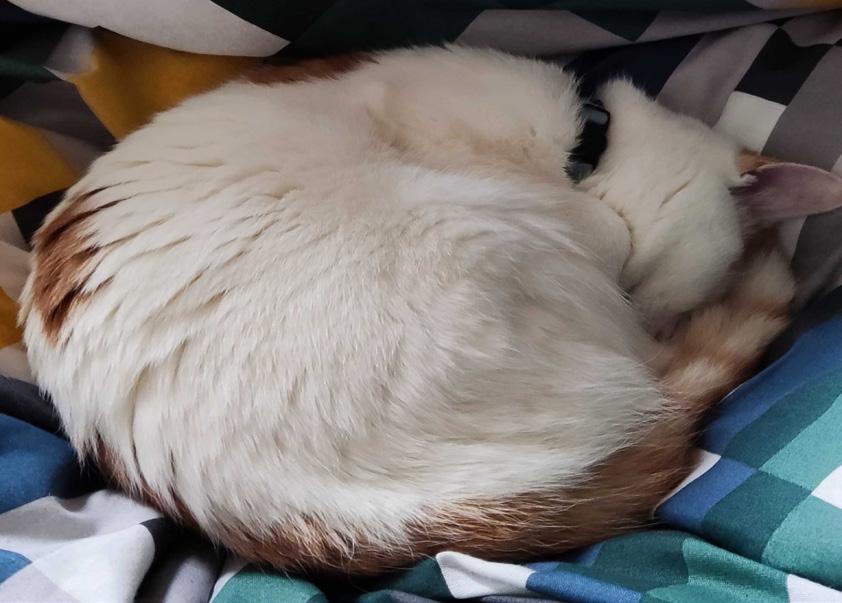









A

Every year, we’re all told to go get our flu shot. Every year we wonder and question why we need to go out of our way to get the same flu shot. However, it may be surprising that the formulation of the flu shot changes every year. Therefore, as the seasons change, the flu shot also evolves.
The flu is caused by the influenza virus, which is spread through an infected person’s respiratory droplets when they sneeze, cough, or talk. An individual can inhale these respiratory droplets into the
lungs and become infected with the flu. The flu virus will then replicate within the body and cause many of the awful signs and symptoms we’ve all had at some point or another including a stuffy/runny nose, headache, cough, fever/chills, and fatigue. Normally, the flu lasts between 3–5 days in healthy individuals. However, there are high-risk populations including the elderly, the immunocompromised, and people with multiple comorbidities whereby the flu can have more detrimental effects, including death. Some of the more severe complications that can be triggered by the flu include: pneumonia, kidney failure, inflammation of the heart, and multi-organ failure.
So, why bother with the flu shot? Well globally, it causes epidemics and affects between 5%–15% of the population!
The flu shot is not only to protect yourself, but also those vulnerable populations around you who have a high risk of developing severe complications.
Just as fashion trends change with each season, so do the strains of the flu. Turns out, it’s pretty difficult to actually accurately predict which strains will be the most prominent each year, but researchers give it their best effort.
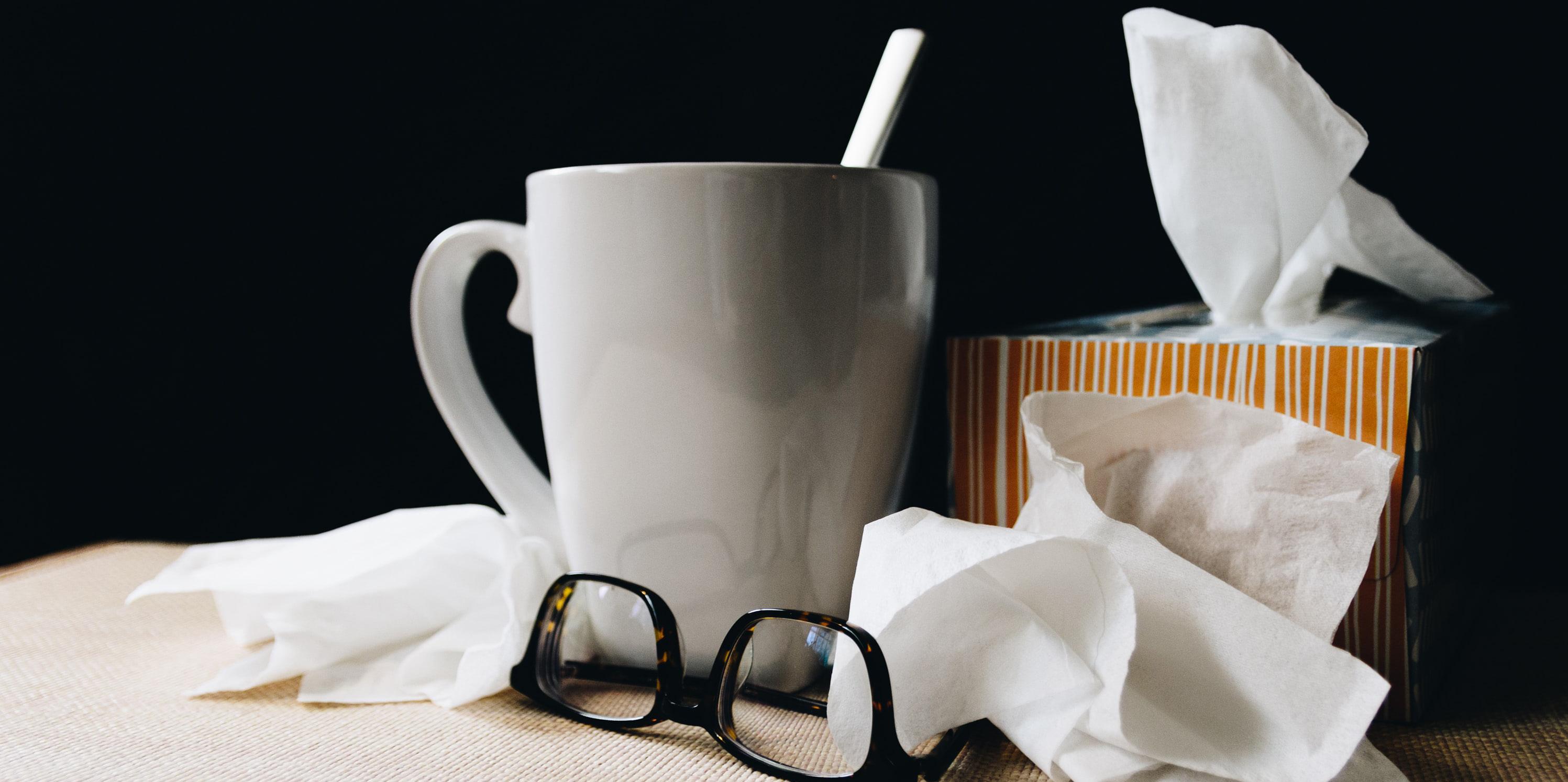
How are flu strains different from each other and how can we understand this difference on different biological levels?
Virology is always concerned with so many different aspects of viruses, all of which intermingle
with each other, but in the case of Influenza, these viral strains can be different on a genetic, a symptomatic and epidemiological level. There are 4 known types of Influenza: A, B, C and D and within those types there are many different strains. The heavy hitters in Influenza, i.e. the ones that do most of the damage in humans, are Influenza A and Influenza B.
Influenza A is probably the most interesting of the bunch and it’s a type of virus that has shaped the last 3 or 4 years of our lives. On a genetic and proteomic level, Influenza A viruses are divided into two main groups depending on the particular types or arrangement of two very important viral surface proteins: hemagglutinin (H) and neuraminidase (N). These proteins are essential for the attachment of the viral particle to a host cell, and for getting through the host’s first line of defence — the cell membrane. During a process called reassortment, two viral strains meet in a host and exchange genetic material with one another, leading to the invention of new strains or new viral combinations which makes it harder to treat patients with these unforeseen strains. Despite having learnt so much about Influenza A viruses throughout the last few years, there is still much to know about this suspicious species that won’t stop chopping and changing. And
with their track record of treating genetic material like an iPhone on Swappie, it’s never long before a strain starts cropping up around the place. But every Winter, when it’s viral time to shine, it’s met with some powerful flu shots to give it a taste of its own medicine.
Roisin Ferguson
Scitech Editor and Deputy Scitech Editor
There are 4 known types of Influenza: A, B, C and D and within those types there are many strains.different The heavy hitters in areInfluenza, Influenza A and Influenza B
“
The flu shot is not only to yourself,protectbut also those vulnerable populations around you who have a high risk developingof severe complications
“
..with their track record of genetictreating material like an iPhone on Swappie, it’s never beforelong a strain starts cropping up around the place ... give it a taste of its own medicine

Last month, the Irish Independent reported that search engine giant, Google, had reversed a decision to delist an article from the publication regarding convicted Dublin-based brothel keeper Mark McCormick. Following inquiries from the outlet, Google performed a U-turn on their earlier call to hide the article from search queries using McCormick’s name — a process called delisting that makes links in the web of the internet more difficult to find. The reversal is certainly not the first admittance of error from Google in handling the “right to be forgotten,” proving that almost ten years after it first gained legitimacy in EU law, tech companies are still struggling with the responsibility of balancing freedom of information and data protection protocol. Furthermore, for news publications that operate online, it highlights increasing concerns regarding freedom of information and the press, and how they are weighted in the arbitrary calculus performed to strike this balance.
So, what is the right to be forgotten? The idea is almost as old as the internet itself, though it was elevated into legal legitimacy after a landmark ruling in 2014 by the European Court of Justice. In
the case of Google Spain v AEPD and Mario Costeja González, claimant Costeja González sued the tech firm’s Spanish subsidiary over the indexing of articles regarding repossession of his property in 1998 in searches of his name. He argued that the disparaging information was no longer relevant as the debts had since been absolved, and the presence of the information in the public domain was limiting his professional and financial opportunities. The European Court of Justice found that the article itself fell within the rights of the press and freedom of information, however the indexing of articles in Google search results was considered an infringement of privacy. This significant judgement led to the right to be forgotten becoming codified in EU law under the interchangeable official title of right to erasure, currently appearing in Article 17 of the highly-influential General Data Protection Regulation (GDPR) passed in 2016.
Officially, the right to be forgotten extends the right to EU citizens to request the removal of personal data from data controllers. It is most commonly applied to request Google and other search engines to remove links to web pages and articles that contain personal information deemed “inadequate, irrelevant, or no longer relevant or excessive” from search results. It differs from the right to privacy as it
deals only with information that was, at least for a time, publicly available. When invoked in this context, the linked content is not scrubbed from the internet, though is made considerably less accessible to the public. Consider the analogy of a filing cabinet: the record is still there, but the index is gone, making it more difficult to find unless you truly know what you’re looking for.
When a request is submitted to a search engine provider to remove a link from search results, it is then assessed in line with the company’s internal principles and procedures, with little directive from EU law. In a significant 2019 ruling, the European Court of Justice recognised that the right to be forgotten is “not an absolute right”, though no provisions were made for further supervision from legal powers. There is no requirement for a company to publicise their decision-making process either, and judgements typically go unchallenged by European courts, elevating data controllers and search engine providers to quasi-judicial status. Taking the example of Google, who has processed over 5,000,000 requests for delisting at the time of writing, the company assert that all requests undergo a manual review that considers “whether and how the information may be in the public interest,” and weigh this against the individual’s “rights under the applicable data protection law.” They claim to consult “a number

of different sources” to inform judgement, including guidelines by the European Data Protection Board and advice from European data protection regulators, though the exact procedure is ambiguous — and, evidently, not immune to error.

The positioning of data controllers like Google in a judicial authority typically left to the courts has caused unease since the right to be forgotten was officially enshrined in law. In addition, recent years have seen an increase in reports of journalistic articles posted online being delisted by major search engines. Critics consider this to be an instance of scope creep beyond what was initially intended by the law, and there is growing concern that it is becoming a means for noteworthy figures to conceal evidence of misconduct and erase history. These concerns are not entirely unfounded, either — in 2021, for instance, all of the Irish Examiner, Irish Independent, and The Irish Times reported being notified by Google of the delisting of articles from their online platforms relating to disgraced businessman Sean Quinn. Further aggravating these concerns is the immense power in the market of information held by the companies making these calls. Such is their influence and prominence in the flow of information online that the decision to delist an article is tantamount to wiping the record entirely and burying it beyond
the reach of the general public. While these companies maintain that requests are evaluated with these concerns in mind (Google’s transparency report, for example, claims consideration for “many diverse factors,” including “whether content relates to the requester’s professional life, a past crime, political office [or] position in public life,” among others) their ambiguity regarding the exact review procedure still leaves many questions unanswered.
With the dust now settled from the bombshell to data protection practice that was GDPR, it may be time to re-evaluate the place of the right to be forgotten, particularly as we see more online journalistic archives being affected. Fuelled by a history of errors and u-turns by major data controllers, there is a growing sentiment that the expectation placed on tech companies to strike an effective balance between freedom of information and data protection may be too great a burden to shoulder without proper oversight. There have been calls from data rights groups for procedures and transparency rules around the right to be forgotten and its implementation to be reviewed by the Data Protection Commission, though at present, there is no plan from the European Union to review relevant policies. For now, we will continue to rely on data-controlling firms to find a balance between public interest and personal privacy, effectively trusting them not only with shaping our future, but protecting our past.

Jane
Prendergastpage 30
An enviromental own goal
Séaghan Ó
Domhnalláin
page 31
prodigy Ian Garry scared himself at UFC 285, but eventually won by TKO in the third round
 Paul Abraham Assistant Sport Editor
Paul Abraham Assistant Sport Editor
Ian Garry is the new star of MMA in Ireland. Extremely talented, the young man recently performed at UFC 285: Jones vs Gane.

On the pre-preliminary card, the Irishman was pitted against China’s Song Kenan. Announced favourite before the meeting, the native of Portmarnock did not fool the bookies. Nevertheless, the young man scared himself in the first round.
For his fourth fight in the UFC, The Future did not flinch. Opposed to the formidable Song Kenan, the two men offered fans a real opposition in striking.
From the beginning of the meeting, the two men traded blow for blow. Quickly, the face of the Chinese began to mark. Looking for the strong blow, Ian Garry was surprised by a blow from his rival of the evening. Knocked to the ground by this devastating blow, the Irishman wasn’t far from tasting the first defeat of his career. Nevertheless, a true warrior, the young man remained lucid and was able to resume the fight. Between the first and second round, the martial artist considered this mistake with his corner and said that he is ready to refocus to get back in the game.
In the second round, the Irishman dominated his rival who began to have a swollen face. In confidence, Ian Garry continued to put pressure on his rival of the evening while being careful not to be surprised a second time. The native of Portmarnock was successful in his shots. In addition, the young man mixed the strike zones and considerably weakened his opponent.
In the third and final round, Ian Garry picked up the pace. Determined to end the meeting, the young man left his rival with no chance. Although he dominated the whole round, The Future stepped up his strikes in the last minute of the match. Thus, cornered by the blows
of the Irishman, Song Kenan collapsed. The referee of the match, Marc Goddard decides to end the fight a few seconds from the end. Thus, thanks to his incredible performance, Ian Garry gave himself the 11th victory of his career. Undefeated in as many fights, the Irishman is one of the UFC’s greatest prospects. If he scared himself, the young man proved that he was able to come back and shine to win. In addition, shortly after
the meeting, Conor McGregor wanted to give his support to his compatriot by congratulating him on Twitter.
While he was living the perfect evening, Ian Garry was stopped at the end of the event by a man who wanted to face him. If the two men almost came to blows, the situation quickly returned to normal.
A true prodigy of Irish MMA, Ian Garry has once again proved why he is The Future.
“
In confidence, Ian Garry continued to put pressure on his rival of the evening while being careful not to be surprised a second time. The native of Portmarnock was successful in his shotsPHOTO VIA @iangarry ON INSTAGRAM
Dublin University Boat Club (DUBC) and Dublin University
Ladies Boat Club (DULBC) will return to the lower Liffey on March 25 for the historic Colours Boat Races against University College Dublin.
Based on the iconic Boat Race between Oxford and Cambridge, Colours is raced head-to-head across two kilometres, from O’Connell Bridge to James’ Gate, between four VIII’s from each university: Novice Men’s, Novice Women’s, Senior Men’s and Senior Women’s. The Novice men and women will race for the Dan Quinn Shield and the Sally Moorhead Trophy respectively, while their Senior counterparts will fight it out for the Gannon and Corcoran Cups. The reserve races between the second novice VIII’s and the intermediate VIII’s will take place in Islandbridge on March 24.
2022 saw a UCD three-peat, with the crews in blue and saffron
claiming wins in the Novice Women’s and Senior Men’s and Women’s categories. A win in the Dan Quinn by the DUBC Novice men was the only spoils from Colours to fall to Trinity, and two members of that VIII will race in the Gannon for DUBC this year, a notable accomplishment. Similarly, María Mezquita GarcíaPoggio, a 2022 Novice for DULBC, will this year race in the Corcoran Cup for the Senior Women’s VIII.
Colours 2023 is of additional significance as for the first time in the history of this storied battle, all four clubs are led by women. Isabel Ormiston-Doyle is the first female captain in the 187-year history of DUBC, while Shauna Fitzsimons is the first female captain in the 106-year history of UCDBC. Alicia O’Neill has returned to captain DULBC for a second season, while Ellie Scott leads UCDLBC. Unquestionably a significant step forward for the role of women in two clubs which place immense value upon their history and traditions, both Ormiston-Doyle and Fitzsimons will face a severe test of their mettle as they cox their crews up the Liffey on the 25th. The day will also be marked by having its first female umpire in the shape of Aoife Byrne, a DULBC alumna who rowed for College from 2016/17–2019/20.
The four captains took part in the Coin Toss to decide which station each crew will row on
March 5, on the steps of College’s Dining Hall. With Thomas Byrne TD presiding, Minister for Sport and Physical Education, presiding — both DULBC and DUBC won, with O’Neill and Ormiston-Doyle choosing to row on the North Station.
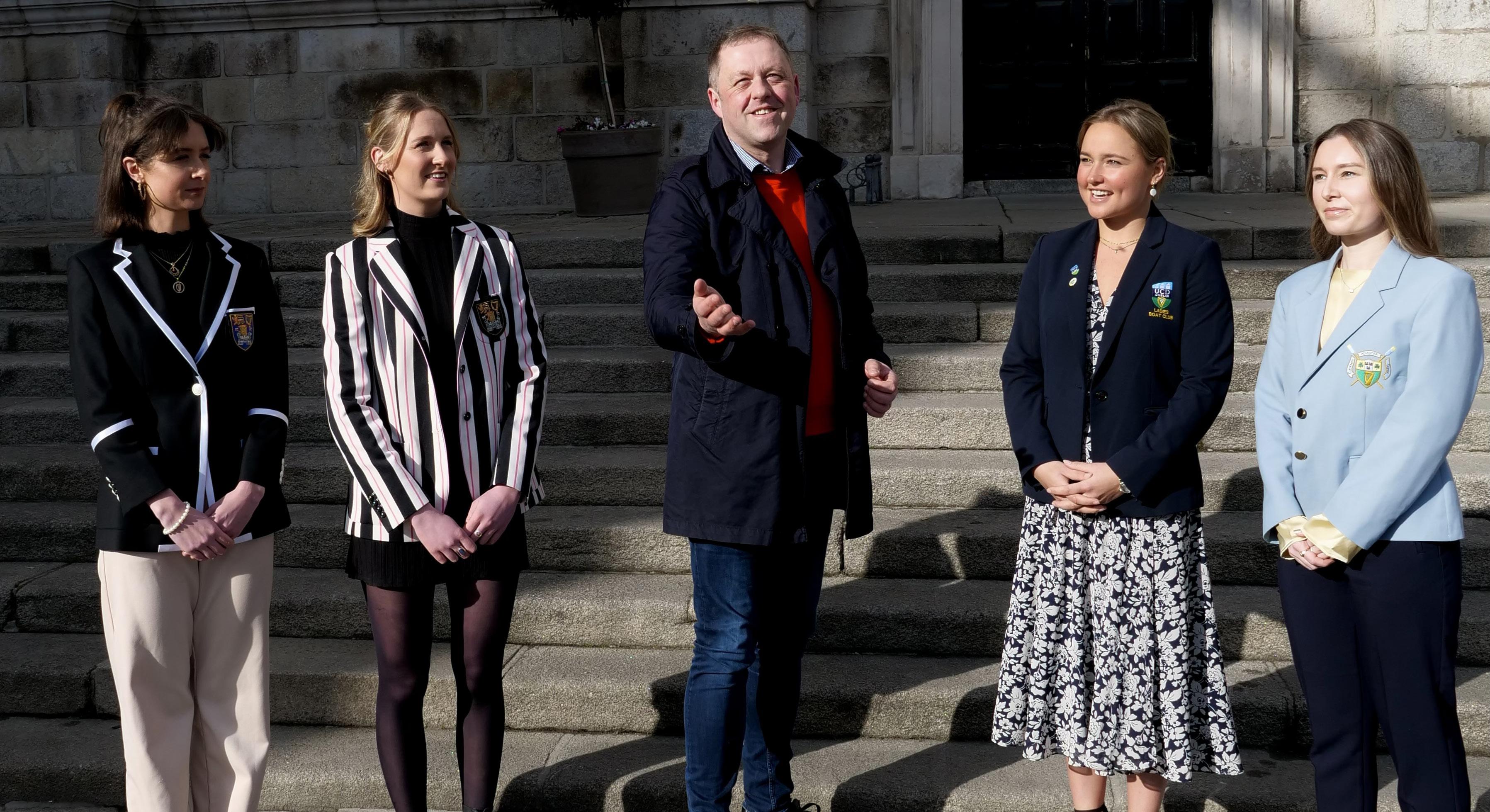
Following the cancellation of Colours 2020 and 2021, 2019 was the last time a Senior crew from College claimed Colours glory, with the Corcoran Cup draped in black, white and pink for the year, while DUBC last won the Gannon in 2018. A period of dominance for UCD has followed since, however, with the UCD women taking home the Bank of Ireland trophy for women’s VIII’s at the 2022 University Championships, as well as winning the Intermediate 8+ at the 2022 National Championships. The UCD men, meanwhile, have been undisputedly the top men’s club in the country for some time now, a recent highlight including a clean sweep of the Novice, Club, Intermediate and Senior VIII’s at the 2022 National Championships.
The classic rivalry between College and UCD means that Colours is always a hotly anticipated affair, however, and 2023 is shaping up to be no different. While the UCD Senior women and DUBC Senior men have not yet raced this season, the UCD Senior men and DULBC Senior women have shown promising form over the winter,
with positive results for both clubs at Lagan and Erne Heads of the River. With every crew failing to have gone head-to-head with their equivalents save the Novice men so far this year, the outcomes of the 2023 showdown are far from known.
Timetable
Sally Moorhead Trophy: 12:30
Dan Quinn Shield: 13:00
Corcoran Cup: 13:30
Gannon Cup: 14:00
The classic rivalry between College and UCD means that Colours is always a hotly anticipated affair
“
The Novice men and women will race for the Dan Quinn Shield and the Sally Moorhead Trophy respectively, while their Senior counterparts will fight it out for Gannontheand Corcoran Cups
How environmentally friendly is sport? That is a question which I feel doesn’t get asked enough, if even at all. Obviously, it isn’t an easy question to answer, as what can constitute sport varies from the Olympics to the Community Games 100m race. While everything someone does has an environmental impact, I won’t be doing an in depth report on how environmentally unfriendly sport is. However, the main cause of concern in international, high level sport is the same, travel by air. Air travel accounts for around 2.5% of global emissions each year, which is a lot considering that a vast, overwhelming majority of people in the world won’t ever set foot in a plane. The International Council on Clean Transportation, a US based NGO, estimates that only 3% of people fly regularly.
Even more worrying, passenger numbers are increasing by 6% each year.
The major source of sportrelated emissions is travel. Domestic competitions normally involve a bus for the away to and from the venue, but there has been times when flying between matches was seen as the more desirable option; normally done to reduce the cost of staying overnight as demonstrated by the Meath ladies footballers flying to Kerry Airport the morning before they played Kerry in a league match a few weeks ago. This hour long flight is roughly worth 80kg of carbon dioxide per person! Compare that to the 10kg of CO2 per person that the equivalent coach journey would have produced.
However, not all journeys are doable by coach, so New York’s annual Connacht championship match will still have to be fulfilled using an aeroplane. So will the numerous away matches of the Irish provinces in the URC and the Champion’s Cup.
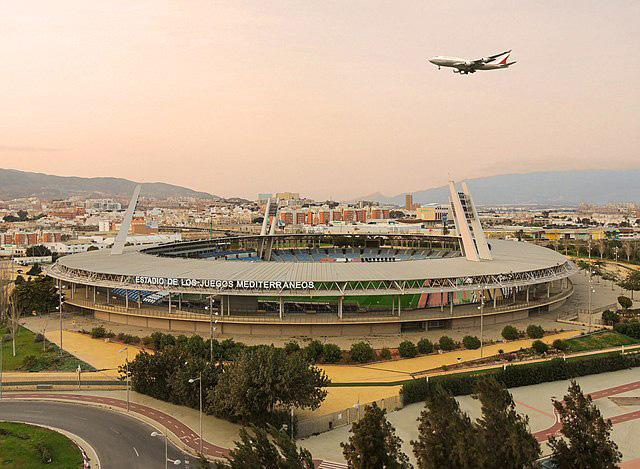
As well as various European destinations, European teams now travel to South Africa, due to the inclusion of two South African clubs in 2017, who were
then replaced by the current 4 team cohort in 2020. This, in environmental terms, has not been a good decision. For example, South Africa’s Vodacom Bulls will have made three trips from Pretoria to Europe by the end of the current season, with 8 other teams, including Ulster, Leinster and Munster, coming to visit them in South Africa. These trips, coming in just under 10,000 km, each will have added over 1.5 tons of Carbon Dioxide per person! Surely, the way forward should be a simple one: reduce distances between teams in each league. While I don’t have time here to discuss the ins and outs of the state of South African domestic rugby, an environmentally conscious decision wouldn’t have seen the addition of their teams in the European based URC. But, everything I have looked at doesn’t include journeys made by supporters and other attendants at events.
Bicycle Finals
Domestically, the rise in the cost of driving seems to be reducing emissions caused by supporters travelling to matches. Train tickets to Dublin for last year’s All Ireland Finals were as hard to get as All Ireland Final tickets themselves.
CIÉ officials announced that they had unprecedented demand for transport to and from Dublin, mainly due to the rise in the cost of petrol and diesel, which were hovering around the 190 mark last July. Anecdotally, as I saw from around my home county of Kerry, people were desperate for a spin to Croker for the football final against Galway.
This desperation made me think of the famous Munster hurling “bicycle final” of the 1944 in which, after 5 years of emergency rationing, all trains were powered by turf and there was tight restrictions on who could use private cars. The masses, in order to get to that years Munster hurling final in Thurles, relied on their high nelly bikes. According to some people, over 10,000 people arrived to Thurles by bike, with people coming from as far away as Dublin, 90 or so miles away.
While very few of us would consider such a journey by bicycle now, improved cycling infrastructure in our towns and cities would provide new options for match-day travel to fans living within 10 kilometres of a stadium. Improvements in rail infrastructure in conjunction would also help with travel further afield.
“ Air travel accounts for around 2.5% of global emissions each whichyear, is a lot considering that a vast, overwhelming majority of people in the world won’t ever set foot in a plane
“
While very few of us considerwouldsuch a journey by bicycle now, improved cycling infrastructure in our towns and cities would provide new options for match-day travel to fansIMAGE VIA WIKIMEDIA COMMONS
the realm of competitive sport, more recently NGOs have tried to plead directly with clubs and even individuals in a bid to curb the practice, with Amnesty International writing to five-time Ballon D’Or winner Cristiano Ronaldo to “not be used as a tool in Saudi Arabia’s sportswashing regime”. Unfortunately sportswashing still takes place, however recently greenwashing has emerged as a new practice at the highest level of sport.
Adam Balchin Online EditorSportwashing, widely regarded as one of the most pertinent underthe-board problems at the supranational level of sport, has gained traction and exposure in more recent years, despite many explaining that earliest examples included the 1936 Olympics hosted in Nazi Germany. Described as part of a country’s soft power and influence, the concept of sportswashing goes hand-in-hand with many despotic, authoritarian regimes today, be it Russia’s hosting of the 2018 World Cup, the beginning of the LIV Golf Invitational Series funded by the government of Saudi Arabia or Qatar Airways’ continued sponsorship of major European clubs like Barcelona, Bayern Munich, Paris-Saint-Germain and A.S. Roma.
An endemic problem across
Greenwashing is defined as the use of PR spin and marketing to promote the notion that products, services and events are sustainable and environmentally friendly. While distinct enough from Sportwashing to warrant its own research, there is a common perception that the two often go hand-in-hand. Truly a double whammy of distracting from multiple human rights violations and a lack of effort on protecting the environment.
FIFA’s most recent World Cup, held in Qatar was dubbed by the organisation as the “first carbon neutral World Cup” in the event’s long history. We truly have gone from one end in allowing dictatorships, namely Argentina in 1978 to host the event to the organisers rallying around dubious carbon accounting and questionable main sponsors including major pollutors such as Qatar Energy, Qatar Airways and Hyundai. Governments notable for participating in sportswashing have in a morbid sense of the phrase, woken up to the ‘buzz,’ or attention placed on the
‘marketability’ of climate change and have pounced on the chance to further manipulate the perception of the masses. Moreover, Carbon Net Watch have conducted postmortem-esque analysis of the event and concluded the building of 7 new stadiums, countless player and fan flights and the emission of roughly 3.6m tonnes of CO2 are a far cry from carbon neutral.
Furthermore, FIFA recently confirmed details for the forthcoming 2026 World Cup, with the hosts being the US, Mexico and Canada. More teams, more matches? No. More intracontinental flights. How else do you think the German national team is getting from Atlanta to Mexico City?

Greenwashing extends to the partners of major sports too, and these are not precluded from scrutiny for their willingness to warp the newfound corporate trend of focusing on ESG (Environmental, Social and Governance) internal policy. In 2021, Adidas was found to have breached advertising rules for claiming their Stan Smith branded trainers were found to not be proportionately 50% recycled, as their slogan entailed. More prominent examples focus on the use of sponsorship deals with heavy hitters in respective sports to cover questionable business practices. In competitive cycling, Team Sky INEOS derives its name from the 5th largest chemical producing company in the world, INEOS who are a regular contributor to pro-fracking debates in the UK. In an example of multi-layered
marketing manipulation, the company seems to have used the global reputation of Sky’s media brand and their success in competitions like the Tour de France to cover their appalling record of involvement with fossil fuels across the globe.
Back when I played sports in my childhood, we had one jersey that we kept for up to 2 or 3 seasons, if they fit. This is in stark contrast to the multitudes of disposable jerseys, boots, athleisure and equipment that regularly gets tossed once used up without any consideration for the unsustainable nature of the waste their presence in a landfill might cause. Formula 1 is the perfect example of this growing concern as up to 40,000 sets of tyres, for example, are used in any one 20plus race season. This is on top of the 28.89 tonnes of emissions that one F1 staffer emits as a result of transport to and from racing events.
The layered nature of problems arising from unsustainable sport only further add to the worrying trend competitive events perpetuate. Sure, Tottenham can ban single-use plastics in their stadiums, or LA Galaxy can wear a single-wear promotional jersey during Earth Day weekend made from plastic waste, but eventually we must raise the awareness of these problems not just in fans and supporters, but within the sporting community itself. Only from within can the systems of sustainability shift to place more of an emphasis on action, rather than lauding change to the masses.
Junior Rugby:
The J4’s had a great win over UCD on March 3 in College Park. DUFC conceded a try early on, but regrouped well and saw out the tight encounter on a scoreline of 10-5. Thanks to all the supporters who came down and gave the night a good atmosphere. The J4’s will play UCD again in the Metro Cup Quarter Final on April 1. This year’s Maughan Scally cup, the intervarsity competition was due to take place last Saturday, March 11. However, due to bad weather it was cancelled.
The Metro 6 league final will take place at 6pm on March 25 in College Park. We will be up against a good Clontarf FC team, so all support would very much be welcome.
4 days later, on Wednesday 29 the Junior Colours match will be on in College Park.
TCD Tennis Club:
Kicking off the second semester in the Tennis club sees training resume on the 23rd with advanced on Mondays, intermediates on Wednesdays and beginners on Fridays, all at their usual times. A new advanced mixed hour has been added from 9 to 10pm every Monday.
Multiple teams and their supporters travelled to Intervarsities in Belfast at the end of February. The three-day competition saw the ladies first battle it out against UCD in the finals, securing second place. The men’s first team also had a fantastic competition, making it to the semi-finals.
The Winter League campaign finished on March 12, which saw the ladies firsts just miss out on the final following their defeat in the semi-finals in Shankill.
On the social scene, a trip to Barcelona is coming up, with a team and many supporters flying over for a friendly competition against Esade University.
For more information, visit the DULTC instagram @trinity.tennis
News analyses the ‘greenwashing’ practice and the increasing nature of sports becoming disposable, rather than reusable

Are we really in love with local?

- page 4
The sustainable coffee guide

- page 6
The world is ending, so should I have kids?-page 7
Can sex be sustainable?
- page 10
Porn propels climate change
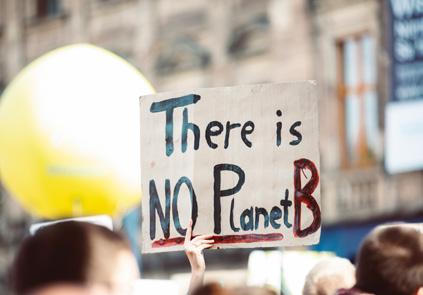
- page 13
Exploring the TorinoFilmLab’s Green Lab
- page 15
Editor-in-Chief
Life Editor
Life Deputy Editor
Arts & Culture Editors
Deputy Editor
Sex & Relationships
Editor
Deputy Editor
Societies Editor
Deputy Editor
Student Living Editor
Deputy Editor
Food & Drink Editor
Deputy Editors
Ciara Chan outlines the benefits of composting, offering some tips and tricks for how best to tackle this in your student flat

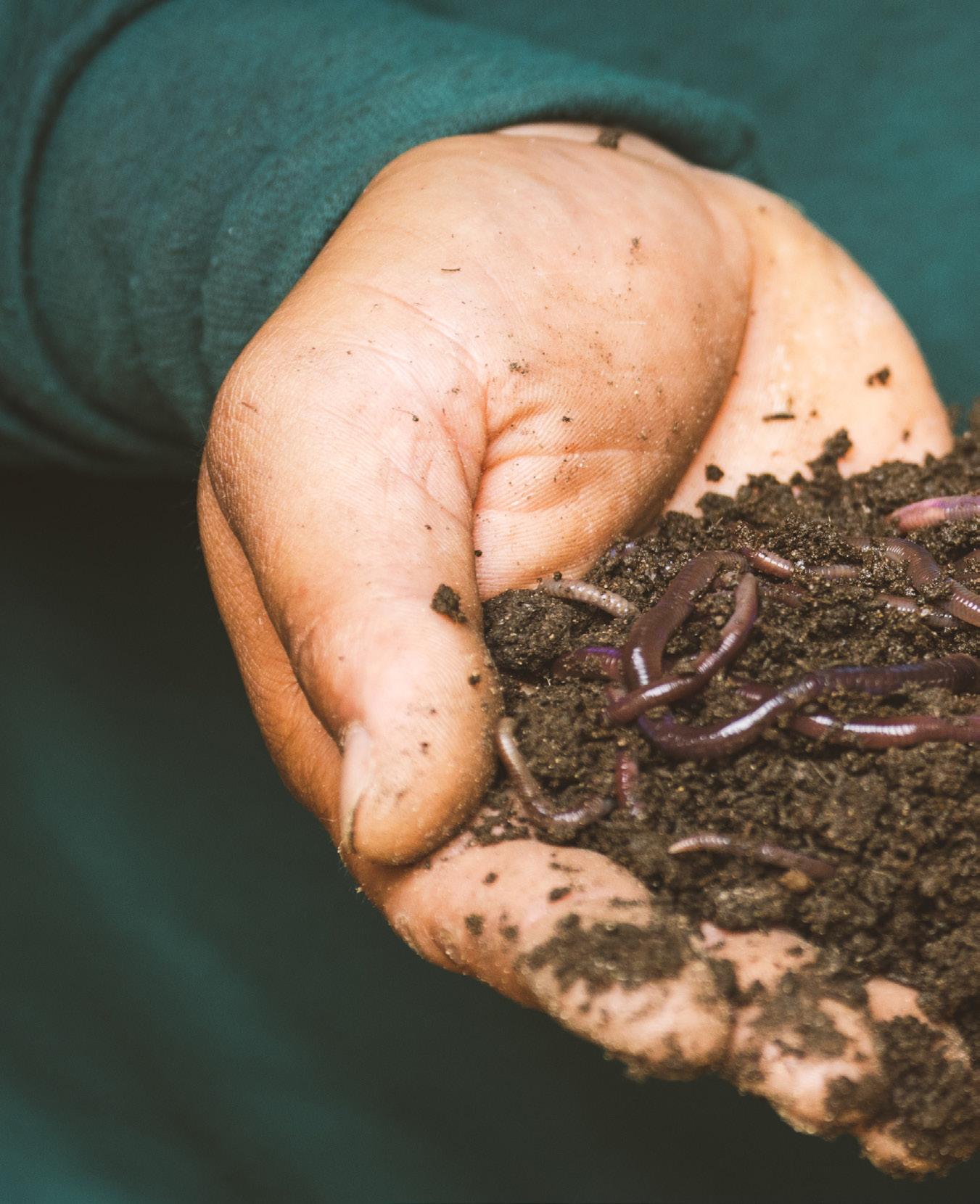
If you were in Trinity Hall at the end of last year, you will remember the large dumpsters that were dominating the courtyards on move-out day. By the end of the day, rubbish was floating like kites on the wind and condoms were scattered on the ground. No one knew whether it was better to look up or down to avoid the most waste. Delightful, right? Students with entire bins of moulding food, recyclable plastic covered in some new sort of fungi, and on top of that pots, pans and bed sheets — you name it, you would have found it in Halls. Scavengers probably had field days in those bins and scientists, had they gone digging, might have discovered the source of the elusive freshers’ flu.
Shannon Connolly
Ella Sloane
Ella-Bleu Kiely
Elena McCrory
Oona Kauppi
Emma Lueders
Ria Walls
Catherine Grogan
Elisa Eckstein
Ruby Topalian
Julie Frisch
Emma Rouine
Maile Monteiro
Eoghan Conway
Katelyn Davis
Considering the inevitable lack of sanitation that comes with putting a thousand freshers in the same accommodation, exiting residents rightfully wanted to get rid of their waste in the most efficient way possible. We all know that putting people with different lifestyles and routines in one flat can descend into chaos. Lists of chores and allotting different tasks to each flatmate could only ever do so much when, for most of us, one party resulted in a cleaning nightmare and the flat never recovered.
This experience isn’t limited to the residents of Trinity Hall. Almost everyone has at some point procrastinated dealing with whatever substance was at the bottom of that jar in the kitchen. Out of sight out of mind, right?
Wrong. Once that organic material ends up in a landfill, it releases methane gas into the atmosphere when it decomposes. Indeed, food loss contributes around 8%10% of all global greenhouse gas emissions.
It can seem difficult, in student accommodations especially, to implement changes that are beneficial for the environment. It can already be hard to keep recycling and general waste separate when there are so
many people passing through an apartment, so composting generally seems to be out of the question. However, the benefits to composting are numerous. It promotes plant growth by improving nutrient distribution to plants, increasing water retention in soil and balancing soil pH. Subsequently, proper pH and nutrient delivery protect plants from diseases and pests. Prosperous plants means greater carbon dioxide absorption from the atmosphere while composting
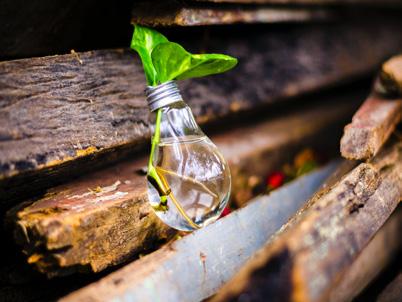
“
It can already be hard to keep recycling and general waste separate when there are so peoplemanypassing through an apartment, so composting generally seems to be out of the question.
“
Small (and sealable) composting receptacles are just as effective as big ones.
Alot of us romanticise the outdoors in our childhood memories. We recall the warm summer days, playing outside until it got dark and taking advantage of the playground nature offered.
I think a majority of children grow up with an intimate relationship with nature, and this is something brought with us into adult life. Sex, love and nature — all are intrinsically combined, whether we realise it or not. Now, I’m not suggesting that our sexual awakening stems from time spent pottering about the garden watering the plants in your little wellie boots, but it’s outside where we discovered forms of fascination
gossiping (so thankful that photos taken on Retrica have been lost). Outside was the backdrop of the first serious, or should I say, official, relationships. Sitting on the grass on a summer’s day along with ten others, one of them most likely being your wingman/woman, with a Mr Freeze ice pop. The first kiss: most common locations being discos, a wooded area, fields and GAA clubs. The Gaeltacht too, of course. Standardly awkward, but so innocent and exciting. Perhaps, on a walk, you’re handed a dandelion they’ve picked for you.
love language, which varies from culture to culture. Were flowers the original aphrodisiac? The ancient Greeks initially brought flowers to the temples as offerings to the gods, but this religious practice evolved into giving thanks for beautiful women or earthly goddesses. Centuries later, aristocrats of Victorian England — an era in which the expression of outward emotion was frowned upon — began to express themselves through flowers. Floriography, the language of flowers, flourished during this time of strict behaviours and the prohibition of flirtatious conservations. Today, a single rose or a huge bouquet can symbolise love, grievance or appreciation; just like in the confined passions of the Victorian era, flowers send a message without words, love and nature hand in hand.
Sometimes we put pressure on
reduces the organic material that ends up in landfills consequently reducing greenhouse gas emissions.
So, start small. Maybe suggest buying a flat composting bin with a lid, so that the smell of rotting food cannot become a counterargument. It doesn’t have to be big!

Small (and sealable) composting receptacles are just as effective as big ones. Reducing organic material going into general waste is key. Cleaning off dirty dishes right after usage is easier — it requires less water and dish soap. Even being more mindful in the way that you shop can help. Make sure everything is used up before you go to buy something else. Less in the fridge at any given time means less waste. Another way to limit waste is by packing things into the tiny freezer that student accommodation provides. You would be surprised by the amount of food that is freezable — anything from fruit and vegetables to bread and rice. It may not taste exactly the same upon defrosting (although bread holds up well after throwing it in the toaster) but, hey, how many of us are eating gourmet meals to start with?
To be radical, maybe start meal prepping. Easier said than done, I know. When you’re running
between the library, societies, socialising or maybe just existing as a college student, meal prep falls to the bottom of the priority list. Maybe Vegan-uary sounds like BS to you, but downloading the Too Good To Go app might not be. Oftentimes, being sustainable coincides with protecting the ever-so-limited bank account. It doesn’t require more money, just a little more thought. Too Good To Go offers really good deals and limits food waste, meal prepping saves money and packaging, and bringing in a (the appropriately sized) disposable coffee mug gets you a discount on campus.
Between those days when you’re on campus all day or times when you’re too lazy or too tired to cook, limiting waste can be hard. College life doesn’t exactly make environmentalism easy or clear cut but we can make a huge difference by taking it more seriously as a community and by being mindful of how we dispose of what we consume. Think about which bin you are throwing that cup into. Properly clean out your recyclables before throwing them away. Maybe bring home rubbish in order to sort it out if you can’t find the proper facilities in town. The inconvenience isn’t too big and it can make all the difference.
and excitement.
The outdoors provided us with a sense of freedom. This is especially true in our early teen years, with one of the most frequently asked questions being “You coming out?”. Growing up in Ireland saw hours of locally walking to and fro, kicking the ball about and
Of course, so many considered romantic settings are outside. Whether that be a cliff at sunset or the Phoenix Park at night (where you are urged to take used condoms with you. They are not biodegradable…). According to Trips to Discover, some of the world’s most popular proposal spots include beaches of Hawaii, Niagara Falls, Isle of Sky and the Cliffs of Moher. Nature’s palette is attractive. Green has always signified growth, rebirth, health and fertility — with this, what turned people on four hundred years ago? Good crops? Land as well as a handsome dowry?
Flowers. Why is giving blossoms to those we care about considered a thoughtful and beautiful gesture? Because they look pretty? Does consumerism say so? Certain pieces of nature possess their own
nature to be visually beautiful. I can’t help but wonder how the world must have differed in the eyes of creatives in a time without the imminent issues of pollution or climate change. When it comes to the literary sources used by the greats, would they have differed if they lived through the ecological state our planet suffers in today? Would Shakespeare have ambiguously referenced the melting of the ice caps in his tragedies? Would Macbeth’s inner turmoil have symbolised the crashing ice? Would Yeats have wished for his soul to be transcended back to Innisfree if empty cans of Orchard Thieves floated in the lake or sewage disposed of in it? As our earth deteriorates, along with it so does its beauty and our sentimental relationship with nature.
“
Today, a single rose or a huge bouquet can symbolise love, grievance or appreciation; just like in the confined passions of the Victorian era, flowers send a withoutmessage words...
According to Trips to Discover, some of the world’s most popular proposal spots include beaches of Hawaii, Niagara Falls, Isle of Skye and the Cliffs of Moher.
“
Green has always signified growth, rebirth, health and fertility

Go on, take a look at your cupboards. Depending on what day of the week it is and your individual budgeting skills you could be faced with one of two options. It could either be a sad sparse reflection of instant noodles and pesto that’s probably past its best or an eclectic mixture of erratic purchases. Mustard, mayonnaise and a Mars bar. Not quite enough to rustle up a dinner. Off to the supermarket, you go. Tote bag in hand, budget set and options aplenty. Do I go for a stir fry, burrito bowl or a curry? The paradox of choice is real. After some deliberation, you decide Italian it is. The postreading week blues have to be combated with a Mediterranean pick me up. Vodka alla pasta recipe obtained and a naggin of vodka in the tote bag, perfect you think, both dinner and pre’s sorted. Armed with your Spanish vine tomatoes, Italian Parmigiano Reggiano, bottom-shelf Latvian vodka, Greek olive oil and French garlic, you wander on home. How continental? Yes true, but also how environmentally costly. We’ve become accustomed to being able to access nearly any type of food all year-round. Climateintensive farming methods and international imports allow shops to carry products that are well outside of their typical seasons. Yet blackberries in the baltic cold of January probably aren’t going to be the best for you, your tastebuds and the planet. We often think of the effects that food has on us but rarely about the impact it has on the climate. A nourishing diet is going to work wonders for your health but will be to the detriment of the planet if you are consuming imported Moroccan watermelons and Mexican limes. A nice lean cut of red meat can only have so much of a net benefit when it’s coming from a ranching farm in Brazil. That said we should be slightly more considerate in how we shop and what we look for when we are shopping. Trying to choose the climate over convenience.
Recent images of bare supermarket shelves in the UK along with rationing show how susceptible we really are to supply chain shocks. Abnormally low temperatures in southern Spain
and Northern Africa have resulted in temporary fruit and veg shortages in supermarkets here at home as well. Warmer temperatures are forcing coffee production further up mountainous areas in search of respite from the harsh conditions. 50% of suitable growing areas for coffee will be eradicated as a result of rising temperatures over the next 20 or so years. According to Peter Gaynor, Fairtrade Ireland’s Executive Director, “by 2050 we could be looking at the end of the much-loved cup of coffee.” If the rationing of radishes didn’t get you worried enough maybe the possible elimination of your caffeine fix will. What startles me is how much produce we can actually grow ourselves in Ireland. 80% of onions, 89% of tomatoes, and 90% of lettuce are all imported, yet all of these foods can be grown here. Why aren’t we running to build more greenhouses to try reduce our import dependency? It beats me. Yet what pains me the most is that 20% of all potatoes in Ireland are imported. You must be having a laugh. The humble spud, the poster child of Irish cuisine — even it falls victim to the import of foreign products. If fresh is best, it is near that we should not fear. We must try to support and encourage the domestic production of fruit and veg that we import so heavily and at such a costly environmental toll. Well, what can you do as an individual? I’m not saying everyone
needs to set up a vegetable patch and go off-grid living, as appealing as that may seem at times, but the little changes make all the difference. Every little helps? Isn’t that right Tesco? Maybe you can start by supporting a few more Irish fruit and veg suppliers. For the consumer, it is all about choice. That lovely six-pack of Pink Lady apples flown in from New Zealand could be swapped for locally sourced Gala or Elstar apples. Pink Himalayan rock salt that is so coveted could be swapped for some domestic Achill Island sea salt. The humble Bord Bia quality mark is still as good an indicator as ever. A small change and a little more consideration of what we actually pick up in the shop is a good starting point. Of course, it’s nice to have exotic ingredients but we often disregard the environmentally detrimental supply chains that get those goods to us. Don’t get me wrong I love chasing down ingredients from far-flung places, this is coming from a man who has smuggled spices back from holidays trying to replicate dishes to no avail, but the pursuit of the exotic ingredients is at times damaging. It begs the question though, do we not care so much for our homegrown goods? Have we fallen out of love with local produce? The quality of produce in Ireland is known the world
over so why not put it to better use. Next time you want to make pasta why not just try swapping the imported veg for domestic. Try changing the parmesan to a native Irish hard cheese. Maybe we also need to change the way we look at Irish food in the home. I’m certainly not advocating for total alimentary autarky but when was the last time you decided to cook with true seasonal Irish produce? I’m not calling for a return to nettle soup and bacon and cabbage — but we can all certainly do our bit to try to buy and use domestic
seasonal produce. In the coming months, the likes of peppers and spinach are coming into season. Cauliflower, kale, cabbage and beetroot all are firmly in season as I write this. Looking on towards the summer we have the crowning glory of Irish produce, well in my humble opinion anyway, new season potatoes. Seasonal produce is going to be fresher, tastier, will support local producers and is oftentimes even cheaper. Some of my suggestions for producers/ suppliers would be McNally’s Farm and Lilliput Stores. They both can be found at the Temple Bar Food Market which takes place every Saturday from 9.30 to 4pm. You change your clothing style based on seasons and trends. Spring, summer, autumn, winter. What’s hot and what’s not. In or out. Yet why is it that we don’t go seasonal when it comes to the food that we eat. Any trendy restaurant in Dublin prides itself on its love of local and seasonal set menus. There is no reason why home cooks can’t do the same. Seasonal, nose to tail and foraged are just some buzzwords that float around as guiding forces to cooking and acquiring produce but any considered ethos is commendable. Think about what you are buying, where you are buying it from and just see if you can make a more environmentally friendly choice. Mother nature will probably thank you in the future.
If the rationing of radishes didn’t get you worried enough maybe the possible elimination of your caffeine fix will.
Sustainability is a buzzword — we’ve all heard of it, and have a rough idea of what it means. The concept became a highly debated issue after the 1987 Brundtland Report produced by the United Nations, which defined it as “meeting the needs of the present without compromising the ability of future generations to meet their own needs”. The report came with its share of controversy and criticisms, mainly due to its Western-centred ideas about pollution from developing countries, but the message of living sustainably is ever-important. To be fully sustainable is nearly impossible in the world that we live in today. However, this shouldn’t be used as an excuse for not trying - even the smallest of actions has an impact. That being said, here are some affordable and achievable ways to reduce your impact AND sustain your wallet as a student… because, who said sustainability needs to be expensive?
Food
What we eat has a huge impact on the environment. Food production, transportation, packaging, processing and what we do with the leftovers all requires land, water, fuel, fertilisers and many more elements with degrading effects. According to the Environmental Protection Agency, Ireland generates 1.1 million tonnes of food waste each year. On a global level, more than a quarter of food produced is wasted. This is neither sustainable nor efficient. While the common argument is to just “go vegan”, this isn’t a diet accessible to everyone for factors including health reasons and prep time (quick on-the-go options are often expensive and limited). Reducing your meat consumption does have a big impact, but here’s other ideas which everyone can try:
1. Eat locally and seasonally. Buying homegrown reduces transport pollution and helps local farmers. Eating what fruits and vegetables are “in season” (foods that are grown naturally at this time of year in the country you live in) are likely to be local and better for the environment. This practice isn’t new of course, but it has been forgotten by many people in the age of globalisation and importing products from abroad. It also doesn’t mean you need to pop down to a farmer’s market every weekend — supermarkets like Lidl
and Tesco offer a wide selection of affordable produce grown close to home.
2. Check your packaging. Take the time to review if what you’re buying can be recycled. Does it contain a lot of unnecessary extra packaging, and do I really need it? Reducing the amount of packaging we use is the most important step, followed by reusing it and then recycling it. Putting it in the bin should always be a last resort. Furthermore, always clean what you send off for recycling!
3. Too Good To Go. In 2015 the mobile app Too Good To Go was founded to help reduce food waste in cafes, shops, restaurants, takeaways… you name it! It works by offering customers a discounted price on items that are left over at the end of the day but are still good to eat, which you can book and pay for on the app and then collect in store at the designated time slot. Unfortunately you won’t know what you’re getting, but if you’re not picky, it’s a great way to save both food and money. For example, you can pick up a surprise bag of groceries from Aldi worth €12 for a third of the price at €3.99.
Clothing
We all want to look our best, especially in the Arts Block where it seems like everyone is ready to step onto a runway at any time. Sadly, the way we get most of our clothes today is incredibly unsustainable and unethical. Sustainability doesn’t just apply to fixing environmental problems, but also to sustaining livelihoods and protecting people. Many clothing companies profit from setting up factories in countries with poor labour rights, stealing designs from small businesses, and paying “influencers” to market to a huge audience. The exposure of the harm that the fast fashion industry causes has led to a growing market in sustainable and ethical so-called slow fashion, which is a great alternative to the likes of Shein, Adidas, Penneys, etc. Unfortunately for students, these alternatives are simply unaffordable, even though they’re worth the price. Luckily there are still plenty of other options if you’re willing to spend a little time, and in the process you’ll spend a whole lot less cash!
1. Take advantage of the charity shops near College. Around George’s Street and Temple Bar
you can find quite a few vintage stores if you’re looking for a specific style (they are, however, quite a bit pricier). All throughout the city you can find quality preloved items for a bargain, lessening how much goes to landfill and going easy on your wallet.
2. Re-wear outfits! Think carefully before you make a purchase and don’t be afraid to wear a good outfit again. If you do need to buy an item, make sure it’s one you’ll want to wear multiple times — donating to charity shops is great, but cycling through loads of clothes isn’t.
3. Good On You. Check out the website: Good On You, which rates hundreds of clothing brands on their impact on people, planet and animals. You can research brands you know and would buy from frequently or find new ones to invest in which are rated highly.
It can take a lot of work to start thinking about what we consume differently and seeing all of the hidden connections between everything we use, but this is a great step towards living more sustainably. It’s important to really think about where something
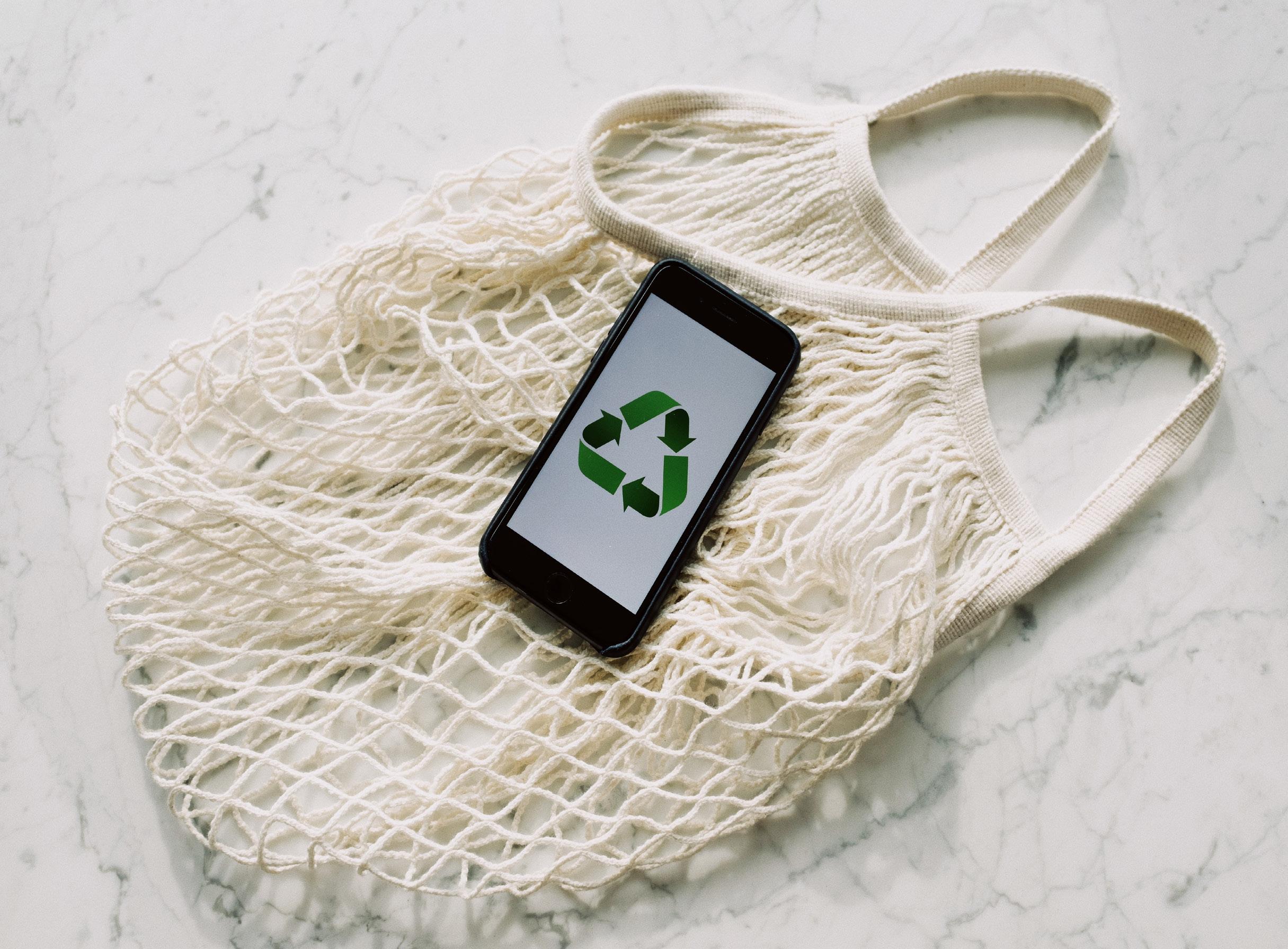
comes from, who made it, how did it get to you, how will you use it, and where will it go after it has been used. You’ll find there are ways to live more sustainably in every aspect of student life!
1. Joining an Eco-Friendly Society. There’s an array of options from College’s Environmental Society, the Botanical Society to the Young Greens
2. Switch to the browser Ecosia, which uses advertisement revenue to plant trees
3. Deleting old emails and unsubscribing from unwanted lists. This saves carbon by reducing the amount of energy that is used when sending, receiving and storing emails
4. Add plants to your bedroom!
5. Get a coffee mug and a refillable bottle
Finally, read and educate yourself! There’s plenty of new and unique ways to be sustainable out there (more than just buying yourself metal straws and bamboo toothbrushes). The essential step is a change to the whole system from a government level, and you can help further by joining environmental advocacy groups and putting pressure on your local representatives.
Wthe Sustainably sustaining a mild caffeine addiction as a student is no small feat. Premium coffee is a godlike vacation from the usual rocket fuel instant-coffee concoction in my reusable cup, but when the cost of that delightful drink is half an hour of my meagre wages, and also the future of the planet, the tasty light of joy is dimmed.
In this issue of Trinity News — we’re putting the planet first (where it probably should be, objectively). Micro-economists tell us that our day-to-day consumer choices have a massive impact on the function of businesses, and while I hate to admit it, the economists are completely right. TN is here to help you make an informed choice when indulging the coffee addiction. Read on for a comprehensive sustainability vs. price comparison on Starbucks, Costa, and of course, your SU Café! Price points of these cafés will be judged based on their smallest size of americano, because it is literally a shot of coffee and hot water and I
resent paying more than €1.80 for it.
Starbucks Coffee Co,
Location: College Green, 2 mins from Trinity’s Nassau Street entrance.
Sustainability Stars: 2/5
Price Point: Tall Americano €3.35
Review: One of the most recognisable brands in the world, Starbucks, has dominated everything caffeinated across the USA and has now infiltrated College Green. Certainly, it’s a tasty brew, but how sustainable is the Big Green Giant?

Pros: Over 99% of Starbucks coffee beans are sourced with Coffee and Farmer Equity (C.A.F.E.) practices in mind. These are a set of industry standards which promote farmers’ environmental education, water conservation, and biodiversity. Starbucks has committed to becoming a net-zero carbon company by 2050 and is also aware of the work it has yet to do in terms of plant-based menu options and waste management. The paper/ plastic combo in their disposable cups means they’re recyclable but with more energy expense than a purely paper cup.
Cons: Although they are clearly aware of the issues posed by Starbucks single-use plastics, the momentum behind the eradication of plastics from their stores is not as powerful as we’d like to see. Plastics are still the operational standard, and most coffee cups, despite being made with some recyclable materials, are not discarded by customers in a manner that allows for their reuse.
By no fault of their own, iced-coffee fiends are the worst contributors to Starbucks waste, as in their hunt for some chilled coffee goodness, it seems single-use plastic is the only vessel. In other bad news, Starbucks charges extra for plantbased milks and very few products are locally sourced.
Costa Coffee Location: Nassau Street (like you didn’t know already), across the road from College’s Nassau Street entrance
Sustainability Stars: 3/5
Price Point: Small Americano
€3.10
Review: The arts block has been stalked by Costa coffee cups since time immemorial. Haunting and tempting is the siren’s call to a gigantic cup of that good stuff while making moves towards a less-than-exhilarating lecture. However, I’m sorry to say that this sweet thing is not sustainable on the planet, nor on our empty wallets.
Pros: With a similar energy to Starbucks, Costa has focused on its supply chain, and can boast that an impressive 100% of its beans come from Rainforest Alliance farms. Rainforest Alliance claims that all coffee beans are sourced sustainably, with climate-smart growing methods, limitations on pesticides and improving biodiversity. Costa has one-upped Starbucks, aiming for net-zero carbon status by 2040. In other good news, the Costa takeaway cup is made of 100% plant-based, renewable materials, and the icedcoffee cup (more good news) is
50% recyclable. It’s not perfect, but it’s making a solid attempt!
Cons: Big bad news. I’m sorry to report this, as it was all looking so good, but Costa Coffee is owned by Coca-Cola, which plummets its rating in my eyes as Coca-Cola is a corporate consumption nightmare. This is because, as more layers of corporate hierarchy are added into a company, the harder it becomes to manage and track supply chains, and local value gets lost along the way. Costa still charges extra for plant-based milks, and very few products are locally sourced.
The SU Cafe Location: Goldsmith Hall
Sustainability Stars: 4/5
Price Point: Standard Americano €2.50
Review: You know them, you love them, the SU café is the student union-led coffee shop in Goldsmith Hall. Whipping out coffees and toasties like nobody’s business since their grand reopening in January this year, the SU cafe hails an impressive €5.50 deal for a toastie and crisps. The SU café also has a can-do attitude and its customer service was overwhelmingly positive. But how does the union’s stretched budget line up with sustainability goals from anarcho-environmentalist Trinity students?
Pros: The SU Café knocks Costa and Starbucks out of the park in terms of local produce, sourcing their beans from Warbler and Wren, which are roasted locally in Tallaght. Even though the budgeting grind has led to gentle pleas from the @trinitysucafe
instagram for students to donate ceramic cups, this is actually a brilliant sustainability move and we love to see the reuse. Also, plant milks are included in coffee prices! A win for the Oatly cult. Final point of praise: the SU Café has a compost bin!
Cons: Plant-based toastie options are not as on point as the corporate giants (shocker), but we hear of exciting new plant-based options for Green Week on the horizon. I dare to dream. Let’s talk about the disposable cups, which are elegantly embellished with Warbler and Wren’s logo. These cups are compostable, which is brilliant. Unfortunately, I find it hard to believe that students en masse are aware of this and are still disposing of their drained cups ineffectively. With a little more signposting from the SU Café, the compostable cups can be actually composted and could make for happy soil.
There we go. As could have been expected, the smaller, independent café is more able to be sustainable than the corporate coffee confederacies. However, another important factor I did not quantify here was The Heart. It wants what it wants. Perhaps for the dear reader, it’s the pretty green circle with a mermaid on the cup that brings the morning together. We don’t judge here at Trinity News — remaining absolutely objective is a passion. But for those who want to make the greener choice, my main advice from research gathered here is this: small local independent coffee shops are better for the planet.
This question may seem like the premise of a dystopian novel. Reproducing is often regarded as something ethically good — partially due to religious beliefs, but also because it seems like a natural process of all living things. However, very little research is required to see that the near future is potentially similar to said dystopian setting. Disappearing ice caps, rainforests, coral reefs, and Venice sinking are just a few stark images of what is being eradicated from the world. The increasing tempo and severity of natural disasters such as floods, drought, and famines are going to accelerate over the next 50 years, if not sooner. The grim question of whether or not reproducing is ethical no longer seems out of place. People are now asking themselves whether or not having kids is the better approach as it spares children from the bleak future ahead. Should we avoid procreating if that very act further increases the severity of our climate crisis? These questions are being asked more and more by potential parents. A 2020 poll by the New York Times found that for adults without children, 25% listed climate change as part of the reason. A recent debate by the Hist shows a more local increase in interest within College’s walls as students put forth arguments for either side of the topical matter. The discussion of what reproduction does to the environment was reignited in a paper by Murtaugh and Schlax, which ranked not having a kid as the most effective way to reduce your carbon footprint (24 times as effective per year as going carfree). However, some important details are left out of the research in this area. It generally overstates the difference that most people around the world would make by opting out of having children. Overpopulation is not currently the world’s problem — it’s overconsumption. We should be careful not to mistake having children as a cause of global warming; instead, the cause is our current way of life. As we continue to make improvements in our lifestyles and gain access to greener technology our average carbon footprint dramatically decreases. The average CO2 emission for our kids is likely to be much lower than ours as
the dangers of global warming and climate change become even greater and more sustained
attempts towards net zero are undertaken.
When discussing this question one cannot ignore the possible benefits of new generations. To some extent this is what reproduction has always been about: learning from past mistakes and striving to do better, evolving from those before us. Each new generation seems to be increasingly active in the fight against global warming. If Greta Thunberg’s mother had decided not to have children on moral grounds, we would have lost what many consider an influential presence in our progress over the last ten years.

I’m at risk here of mistakenly endorsing a position of no self-sacrifice to address climate change; a belief that eventually other people or technologies will save us from our own mistakes. However, the solution to climate change must and should involve some individual engagement and sacrifice. Not having children or choosing to reduce family size are just some of the possible individual sacrifices people can make to reduce the climate crisis. Ultimately, we’d prefer a world where we don’t have to face such a choice, but the best way to achieve that world is to make hard choices now.
If the future will be filled with
so much pain, would it be better to not bring children into the world? In some extremes maybe this would be the case, but I don’t believe that the current climate crisis makes all future life a net loss. It is past generations’ actions and realistically the actions of the current generation that will cause pain for future ones. They will be punished for our mistakes, but we would only go further astray if we denied them the opportunity to experience all the good things left in the world. I do not believe that the future is likely to be as bad as many of the periods of history that predate our current period of relative comfort. I for one am grateful my ancestors didn’t choose to save their kids from potential suffering. One could argue that a loss in comfort is much more challenging in the modern age as kids will be aware of what they have lost, which differs from the tough times of the past when modern luxuries were only imagined. However, the impact of this depends on us as potential parents. Will we choose to constantly remind our kids of the past? Or instead, will we focus on how we’ve improved, looking at the beautiful things in life that have survived? I don’t think it’s right to mourn what’s been lost if those losses were built on
immoral policies that lead to the deterioration of our planet. There is always some comfort in doing the right thing, even if we lose something in the process. Many of us may see ourselves as future parents, and as potential future parents, we should tackle these questions rather than be ignorant of the wider issues outside our immediate existence. However, we should certainly worry more about the impact we’ll have on the environment than the impact it will have on us. Those of us who live in the developed world have the unfair advantage of not having to face the consequences of our previous actions, but this means we have much more responsibility to change the current course of the planet. Deciding not to have kids or to adopt instead is one of the many morally good choices people can make to do their bit in tackling the current climate crisis. But this does not mean that choosing to have kids is necessarily morally wrong as there are many other steps people can take to live less carbon-omitting lives. The only wrong choice in this situation lies with those who choose to completely ignore the climate crisis when making decisions; burying one’s head in the sand can only be described as immoral.
Jack Cantillon explores the ethical dilemmas that arise when it comes to reproducing amid a climate crisis
“
Disappearing ice caps, rainforests, coral reefs, and Venice sinking are just a few stark images of what is eradicatedbeing from world...theIMAGE VIA PEXELS
Although Nicole Ní Dhubhshláine would speak of her musicianship as her passport, an invitation to hold not just her instruments but the world, she cherishes a vital homecoming. Speaking of her home on the Dingle Peninsula in County Kerry, Ní Dhubhshláine shared that “You really see the beauty of the place when immersed in the environment, whether it’s walking or driving along the roads, doing Slea Head drive, sitting at Cuas pier. I get such a feeling of freedom and grounding when I go for a walk, drive or swim around the peninsula.”
Ní Dhubhshláine is a multiinstrumentalist and radio presenter for RTÉ Raidió na Gaeltachta. She began learning music early on, before pursuing degrees at University College Cork in Music and Irish. She has performed internationally, and released her first album High Tide/ Barra Taoide with Kyle Macaulay in 2019. Although the mindset of performance relishes every second as if it’s the last, Ní Dhubhshláine was keen to note that, with regard to her work, it certainly will not be.
Ní Dhubhshláine feels there’s a strong connection between Irish music and the Irish landscape, finding the link to be especially strong in slow airs and the Seannós tradition. Speaking on the slow air Port na bPúcaí, she explained that there are various stories behind the origins of the air, “but what they all have in common is that the sounds were heard at night and resembled the wind and waves that crash against the island and weave through the houses.” She went on to say that other stories involve the sounds of whales or the calls of fairies.
The environment with its mystery and influence is embodied in this music, where science meets storytelling; a whale in conversation could have been the words of a fairy.
Speaking on her own music making, Ní Dhubhshláine shared that “when playing a slow air I really try to imagine the story behind the air and try to bring that out through the music with phrasing and ornamentation.” The creative process and territory are expanded with this way of thinking. What does it mean for
phrasing to resemble the ocean’s breathing? How do you ornament organically, but tastefully? How do the flowers do it?
Julie Fowlis, a Scottish singer and multi-instrumentalist from the Outer Hebrides, speaks to this as well: “I see people and place names, poetry and song, all embedded in the landscape.”
Fowlis sang the songs on Disney Pixar’s Brave, and collaborated with Norwegian composer Einar Selvik for the video game Assassin’s Creed Valhalla. She has presented on BBC and Ireland’s TG4, and is the United Nations Declaration of Human Rights Project representative for Scottish Gaelic. The Scottish musician believes deeply in the impact her surroundings have on her. She remarked on the concept of change, explaining that we’re all out of balance with our landscapes, making it all the more crucial that we engage our immediate communities and ones that are further afield: “I think the first thing to say would be that that relationship to landscape in folk music is always there. For me, it’s only as I’ve gotten older that I’ve become more acutely aware of that relationship and what it means and how it shows itself in traditional music and within my own composed music.”
At Glasgow’s Celtic Connections this year, Fowlis performed with students and musicians connected to the Scottish Gaelic college, Sabhal Mòr Ostaig. The cross generational celebration was presented live on BBC Alba, with the audience joining in on a selection of songs that were mountainous in sloping melody and emotion. On the Irish side of things, Ní Dhubhshláine emphasised the support her community as a whole has for musical initiatives, describing The West Kerry music style as “full of character and very lively which brings an amazing electric atmosphere anywhere it is being played or heard.”
One of Fowlis’ recent projects has
been Spell Songs, an ensemble featuring Senegal’s Seckou Keita. With instruments from the kora to the Indian harmonium, the ensemble reimagines and accompanies Cambridge University’s Robert Macfarlane’s publication, The Lost Words: A Spell Book. Macfarlane has published other books including The Old Ways and Underland, with a professional dedication to the exploration of environmental humanities. Illustrated by Wales’ Jackie Morris, the book has not only been integrated into curriculums across primary schools, but has ignited the profound relationships between literary, musical and linguistic traditions. Fowlis shared that through a project such as this, she is able to perceive her own music differently. Her global, artistic engagement has helped her reflect on her own work as an individual creator as well. As we grapple with experiences
When I signed up to go zero waste for a week, I was immediately struck by the enormity of the task that I had signed myself up for. However, going zero waste soon opened my eyes to the sheer amount of waste produced on a daily basis, and how simple it can be to produce less. This article comes with a disclaimer: it’s impossible to become truly zero waste in one week. A week is not a large commitment and I wasn’t starting from scratch — for example, there was already food in the fridge, and I only had to buy what I needed for the week. As well as this, I live at home and commute to college. My family are big recyclers and composters. This is a significant advantage over those staying in accommodation or living away from home, where recycling may be questionable at best and composting is a fantasy.
These factors meant that going zero waste was surprisingly accessible to me, and may not be for others. However, I think going zero waste is still a helpful exercise to understand the impact we have on the world around us. So, what does going zero waste mean? It means leading a life that doesn’t produce any waste at all. When that’s not possible, reducing, reusing and recycling work too. Reducing waste is preferential over recycling, which still produces waste but disposes of it more responsibly. The issue is that completely eliminating waste is hard enough as it is, let alone when you are a broke, disorganised college student. Because of this, I focused mainly on reducing waste when I could, and reusing and recycling when I couldn’t. Once I started thinking about it, the amount of waste I produced daily was unbelievable — sweet wrappers, food containers, receipts, plastic cutlery, paper straws. The list goes on. I noticed that sometimes I wasn’t recycling things because I was lazy and recycling required more effort than chucking things into the general waste bin. This had to change. Going into my zero waste week, I was excited yet apprehensive. I was looking forward to the challenge, and curious as to what
of displacement in today’s increasingly interconnected world — and the concept of home becomes a rambling, unfixed and often multilateral feeling — eternity is a challenged faith. The oceans are present but their level is rising, and wildfires have nations, who aren’t always neighbouring, ablaze. Ní Dhubhshláine believes music of the oral tradition is up for change too, saying “No two musicians would play a tune the same way. People add different ornamentation and variations. Even if I were to play a tune twice, I wouldn’t play it the same way both times and I probably wouldn’t be able to tell you exactly how I played it the first time!”
The spontaneity Ní Dhubhshláine speaks of bubbles from a strong, lasting backbone of melody that inspires electrifying experimentation. Fowlis spoke of musical traditions adapting to survive, but Ní Dhubhshláine assures us that music is safe back West. The oral tradition has always been about listening and sharing, and those fields of human goodness, settled on a while back, are still content. If we abandoned them now, we’d be losing so much of ourselves.
At this point in the term, with readings piling up and assessment deadlines looming, the Ryanair page has become a frequently visited tab on many of our homepages. For those of us fortunate enough to have the time and savings to spend on a week in the sun, the opportunities are endless. Ireland’s close proximity to mainland Europe means that everything is within our reach. Do you fancy a week of lazing along the French Riviera or perhaps soaking up the sun on some of the Greek islands nestled in the crystal-blue Ionian Sea? What if I told you to close that Ryanair tab, as you could do these trips, on a budget, while simultaneously sparing the environment? In this article, I will introduce you to the world of
interrailing as someone who spent one-month last summer living the European backpacker life.
Anneliese Kenny went wasteless for one week and this is what happened
Emma Rouine tells you all you need to know about interrailing
The Scottish musician believes deeply in the impact her surroundings have on her.
“I see people and place names, poetry and song, embeddedall in the landscape.”
“
Hostels will be your new best friend.
If you’re travelling with a small group or alone, this is your best option.
would happen. I was equally nervous about one thing in particular: food. Commuting to college means getting up early and getting home late, meaning it’s much more convenient to buy lunch in college, usually with the collateral of producing a lot of waste. Going zero waste would mean — shock horror — getting organised. I decided to commit to bringing lunch with me for the week, and made a small meal plan consisting of curry, bagels and snacks. Here was another advantage of going zero waste: it would force me to eat healthier. Zero waste meant zero takeaways, zero breakfast rolls, zero chocolate. But this wasn’t as easy as I expected. Going to the supermarket, I was disappointed to find that a lot of plastic packaging isn’t recyclable, and loose fruit and veg were not always available. It took some shopping around but eventually I found what I needed, and the grand total of my shop for the week came to a stunning €15. That’s around the equivalent of 1.5 Sprout salads — what a bargain. Most of the ingredients I bought from the supermarket did come in plastic packaging, but I made sure it was all recyclable before buying. However, it was difficult making sure all aspects
Since March 1972, hundreds of thousands of Interrail tickets have been sold each year, adding up to more than 10 million in total. Due to its affordability and accessibility, interrailing has become more popular than ever. It is an extremely sustainable way of travelling too. According to European Data and Journalism.eu, the journey from Paris to London on a plane emits a staggering 122kg of carbon dioxide compared to only 13.6kg via train. The most popular kind of interrail pass purchased on the official interrail.eu website is the 7-day global pass — as of writing this article, the 7 days within 1 month is €237. This means you can have 7 separate travel days in any European country included as part of this pass. Therefore, you’re not only saving money by travelling via trains but you are also helping the environment. According to the 2020 Transport and Environment report published by the European Environment Agency, shifting to trains will contribute to decreasing greenhouse gas emissions by 90% by 2050, a goal set by The European Green Deal.
By purchasing a global pass, you
of packaging were recyclable — I learned my lesson with that one. Preparing food in advance and bringing it to college was definitely the biggest change I made, but it felt good knowing I was helping the environment and saving money.
Going zero waste meant other changes, too. I started bringing a reusable coffee cup with me everywhere. I thought that it would be annoying to carry a reusable cup with me all the time, but eventually I would forget I had it — except for when it came to buying coffee, of course. As if it couldn’t get any better, in some places you get a discount for using a reusable cup, like the Perch for example. Having a reusable cup with me was a very easy change, and bringing it everywhere meant I never had the classic excuse: I left it at home. The only limitation of a reusable cup is that it requires cleaning, or at least emptying. But this is where the various kitchen areas around campus such as House 6 and the Hamilton JCR come in handy. Zero waste also meant no more vending machine snacks. The vending machines around campus provide convenient snacking for in-between lectures, and while this change was perhaps the hardest, it was also a blessing in disguise. However, the need for vending machines was eliminated when I made sure to eat enough throughout the day, as well as bringing various snacks of my own. By not using the vending machines, I was saving money, being healthier and producing less
waste. Nights out were another aspect of going zero waste. It really came down to no plastic cups, no postnight-out chipper and no paper straws — but this is where I ran into some external issues. Sure, paper straws mean less plastic, but it doesn’t matter if they are still ending up in general waste instead of the recycling bin. This sentiment goes for a surprising amount of things: compostable coffee cups and lids, recyclable napkins, allegedly eco-friendly takeaway food containers. It’s great to see a move away from singleuse plastic, but these items only reduce waste if they are disposed of correctly — which they usually aren’t. I ran into the same problem when it came to bringing fruit to college: there aren’t any compost bins anywhere, either on campus or out in the wild world of Dublin city. The obvious solution to these problems is to bring all this waste home where I can dispose of it properly, but this means having to keep and carry home all my fruit scraps and empty boxes of Carluccio’s pasta. It’s manageable, but not exactly ideal. Coming to the end of my zero waste week, it felt strange being allowed to use single-use plastics again. This week was a learning curve, but I’m grateful I did it.
However, I don’t think I will stay completely zero waste. I don’t think it’s reasonable as a student, and a person’s ability to be zero waste is heavily dependent on the context in which they live. However, this experiment showed me how easy it can be to reduce the amount of waste I produce and that, sometimes, setting yourself radical goals, like going completely zero waste for a set amount of time, are the push you need towards actions that will actually produce results. Is it hard being zero waste? Yes. But is it hard to reduce your waste? No! Being mindful of your waste brings about positive changes — it helps the environment, while potentially reducing costs and improving health. There truly are no disadvantages.
are able to travel to and within up to 30 European Countries in one trip. Interrailing gives you the opportunity to explore popular cities and tourist destinations with efficient rail links throughout the continent. It also gives you the opportunity to explore places off the beaten track. I highly encourage you to take this on board and travel to places that would otherwise be difficult to get to directly from Ireland. Slovenia is a firm favourite, consisting of backpacker-adored Lake Bled and the picturesque capital city of Ljubljana. Another option is to travel down the Adriatic coast to Kotor in Montenegro or further inland to Mostar in Bosnia and Herzegovina. This holiday isn’t your typical holiday so why stick to the typical destinations? On my own trip, I started in Naples and travelled up the Italian coast into Central and Eastern Europe, exploring Europe’s most vibrant cities from Berlin and Vienna to Prague and Budapest, before journeying down the adjacent coast to arrive in Split, Croatia. An important aspect that interrailing allows is the opportunity to mix
it up. You can combine the city break holiday with the coastal sun holiday in one trip. However, our means of travel is not the only factor here. How does one afford accommodation around Europe on a student-constrained budget? I have one word to answer that question: hostels. Hostels will be your new best friend. If you’re travelling with a small group or alone, this is your best option. Get yourself a bed in an 8-bed dorm, all you need is somewhere to put your head down at night after your long days of excursions and travelling. Hostels have become a safe and popular option for young people. One can opt for female-only dorms or if you prefer an extra bit of privacy, there are usually options for 4-bed dorms and private rooms. Hostel prices vary by month and the type of hostel you choose. For example, the Yellow Square Hostel in Florence consists of a rooftop pool (yes you did just read that right, a hostel that has a pool!), a nightclub and their own cooking classes. A bed in a dorm here starts from around €45 a night in August but if you opt for a more basic hostel,
it will save you around €20 a night during this peak season of travel. One of the most enjoyable aspects of the experience is meeting other people from different countries who are having the same experience as you. Conversing with someone who is either your age or twenty years older, from a different culture and community but who you can still find common ground with is extremely refreshing. Memories are made on trips out together but also from giving travel advice in the hostel
bar about where to see and avoid, and sharing cooking tips in the hostel kitchen (when budgeting hits an all-time low). It shows that no matter the frontal barriers, we are all connected underneath it all. That makes interrailing an invaluable experience. This form of travel becomes addictive. It might be a culture shock in the first few days but after that it will become second nature. Sleeping in dorms with five other strangers turned friends, hopping around European train stations, getting confused over which country you are in because you were in two different countries earlier that day; there is a new level of excitement and thrill that comes with interrailing that you don’t receive on an overpriced week in the sun in Kavos or Magaluf. I guarantee that you will return home with countless memories, having had truly enriching experiences. The only word of warning I will give you though is to proceed with caution, as you may not be able to ever shut up about the experience, just like me seven months later writing this article.
“Once I started thinking about it, the amount of waste I produced daily was unbelievable — sweet wrappers, food containers, receipts, plastic cutlery, paper straws.
“ Going into my zero waste week, I was excited yet apprehensive.
“ This holiday isn’t your typical holiday so why stick to the typical destinations?
With the advent of sustainability, many of us have tried to make small changes in our daily routines and consumption habits. Whether it be swapping disposable coffee cups for reusable ones, trying to thrift before checking retail shops or opting for more environmentally conscious forms of transport, it seems that many aspects of our daily lives have sustainable alternatives. There is one activity, however, that many tend to overlook. Unlike shopping, travel, and general consumption, sustainability is never really at the forefront of our minds when we think about sex. The environmental impact of contraception or sex toys is not something that we’re likely to dwell on when we’re in the bedroom.
However, it is something that must be acknowledged. Most sex toys are made of plastic and contain single-use batteries, which are highly polluting materials. Most toys also cannot

be reused or fixed for further use once they eventually deteriorate. Effective condoms are made out of unrecyclable materials such as synthetic latex and cannot be reused (for obvious reasons) in any other context. As with any other product that we use and consume, these sexual objects often end up
in landfills. The environmental impact of this is huge, with the UN reporting that the majority of the 10 billion male latex condoms produced every year end up discarded in dumps and landfills.
For those looking to make a sustainable swap, there is the option of using other forms of contraception, such as birth control and so-called green condoms (protection made with natural latex) instead of using regular synthetic protection. However, these options are often more expensive and harder to come by, and often neglect the protective aspect of protection. So while such alternatives may be attractive in a sustainable sense, they beget the question of whether we should be thinking more about our safety and comfort during sex or about the environmental consequences of our bedroom activities. Given the importance of effective protection in sex, it comes as a shock that there seems to be no sustainable alternative.
While protection remains tricky to tackle in a sustainable way, sex toys are another story. Noticing the lack of sustainable toys on the market, Love Not War founder Will Ranscombe took matters into his own hands and created “sustainable vibrators that don’t cost the earth”. This sustainable sex toy company was launched in the UK on Earth Day 2021. After
working extensively in the sex toy industry with his co-founder, the two noticed the detrimental impact that the production of the toys has on the environment. They then decided to create their own company — one that would reimagine the entire production process to create sustainable and long-lasting toys.
Instead of making sustainable adjustments to sex toys, such as making them from recycled plastic, Ranscombe and his partner “took a holistic approach”. They identified the main features of the toys and their production process that made them so unsustainable, and worked from there to redesign a new product. The Love Not War toys are made with an aluminium base, which is then covered in the plastic used in regular sex toys; this gives the toys a recyclable and more easily fixable foundation. Ranscombe explains that the problem with so many sex toys is that once they are damaged or ruined, they can no longer be reused. To challenge this, the company offers a service by which users can return their damaged toys to be reused and recycled. The toy is assessed to find the working parts, which are kept and reused, while the damaged parts are discarded and, when possible, recycled. The toys also feature a rechargeable battery, which can be inserted into any Love Not
War toys — once a customer has bought one battery, they no longer need any more, halving the cost of any future toy purchase. While many aspects of the production remain inevitably unsustainable, Love Not War provides a far more environmentally friendly alternative for sex toy users. Aside from protection and toys, there are a myriad of other ways in which sex can impact the environment; maybe you leave the water running too long during steamy shower sex, or you’re into a lot of latex-based role play. There are endless examples of how sex and related activities can play a role in damaging the environment. However, just like travelling by bus instead of car, or using a plastic reusable coffee cup instead of the throwaway kind, there is no way to completely eradicate your carbon footprint. Every little role does help, but the guilt of pollution and waste should not rest on the individual consumer — especially when it means deciding between personal protection and the environment. It is unsustainable to expect individual people to make expensive and sometimes unfeasible lifestyle changes.
There is a place for sustainability in sex that comes in the form of choosing more environmentally friendly sex toys, or changing the type of protection used. Ultimately, however, the overall impact of sex and the industry that produces these synthetic toys and contraceptives can only be tackled by policy and collective action. Or we can go back to using lamb intestines as protection, but I doubt anyone wants that.
“
After working extensively in the sex toy industry... the two noticed the detrimental impact that the production of the toys has on the environment
“
Every little role does help, but the guilt of pollution and waste should not rest on the individual consumer — whenespecially it means deciding between personal protection and the environment
connoisseurs on social media bemoan the death of authenticity in just about every medium… the list goes on.
Afew days ago, I opened Instagram for the nth time to do some mindless scrolling. And mindlessly scroll I did, until I came across a post from an antiart account, @jackcarden.art, that I follow. The post? A beautiful oldfashioned painting with the lower half brutally removed to make place for a screen with Subway Surfers gameplay on it. The caption? High audience retention painting.
I love Subway Surfers, so I was far too distracted at first to realise that there was a message behind the piece. My mind kept coming back to it, though, every time I saw someone complain about modern art. The idea of artists having to destroy or modify their art to appeal to an audience is heartbreaking, especially when portrayed in this violent way. Moreover, the condemnation of this sentiment is everywhere: fandoms are up in arms over their artists pandering to larger audiences, self-proclaimed art
It’s not controversial to say that some artists have felt pressure to sell out — and often we have capitalistic incentives to blame for this. Nowadays, art in all forms is commodified to the point of absurdity. Paintings have become prints for purchase in museum gift shops, songs are now seen as quick cash grabs for mass consumption on social media, and films have transformed into simplified storylines blown up for the big screen and even bigger audiences. More views on TikTok or streams on Spotify will usually boost a piece’s revenue. It’s that simple. So does this mean that we’re living in a world without meaning? A world where art has shifted meaning because of social media platforms like YouTube and TikTok?
The answer: no. Of course, the internet has changed the ways in which art is marketed, and yes, it has forced some artists to change their production mentality. However, the capitalist instinct to sell out, the inseparable bond between capitalism and art, and the idea of creative production as a profitable enterprise all have long been central to the world of art — just in other forms than they are today.
Composers like Mozart were frequently commissioned to write pieces for the wealthy and extravagant, a process common to countless other kinds of artists. Unless they already possessed considerable personal wealth, they could not simply create what and when they wanted to; many were forced to change their subject matter and working mentality for profit. According to Medium. com, author Annaliese AshGrimm recounts how “Art like the Sistine Chapel and the Last Supper is admired now purely for
its beauty, but at the time it was commissioned by the [Catholic] Church to inspire awe and wonder in Christian worshipers and nonworshipers alike; essentially selling Catholicism.” Indeed, capitalism has always had its claws in the art scene. The Catholic Church financed grand paintings in hopes of inspiring audiences not only to believe in Jesus but to submit to ecclesiastical authority. Meanwhile, modern-day financing occurs through highly different mediums, like record labels that finance contrived songs for the sole purpose of accruing millions of streams on TikTok or Spotify. Not only has art itself often been the product of capitalist exploitation, but, throughout
history, the ability to become an artist in the first place is also tied to one’s status within a capitalist society. Many potential artists never had the chance to create due to their socio-economic and political position — lack of access to time, education, and resources are just three of many factors determining whether one can become an artist in the first place. This, of course, still exists: think of the famous nepo-babies trend, through which celebrities — many of them artists — are exposed for benefitting from their nepotistic connections. If anything, the number of people who can create and share art has increased exponentially with greater accessibility to tools, tutorials, and media platforms under the digital era.
Social media platforms only aid in the continuation of this nepo baby myth — that the world’s most famous and successful people are only well-known due to their parents. Indeed, countless celebrities can be added to this category and it is no wonder why. As these privileged individuals begin their careers already enjoying financial success, it is no surprise that they are viewed as talented artists from the start due to their wealth. This wealth can finance the production of paintings or films, book lavish studios to record auto-tuned radio hits, and buy instant adoration from fans via social media platforms. Some of the most talented artists of the present-day are ‘nepo babies’, but they are supported by a wellconnected network from birth, while other artists must make a name for themselves on their own. Therefore, in order to be financially successful, some of these nonnepo baby artists must turn to desperate measures to launch or even continue their careers — selling out to the capitalist culture industry.
So if capitalism — in the form of nepotism, selling out, or otherwise — has always been this prevalent in art, why do so many people feel that the situation has worsened? We can only hypothesise. Is it because the exploitation of artists is more acutely visible in the art industry, for example via the publicity of revenue, net worth, and streams? Is it because we are more willing to criticise the impact of elitist and capitalist processes on art? Or is it just the nostalgia effect, people yearning for a romanticised version of the alleged good old days?

It has to be said that it is always unfortunate when artists are forced to make short-form or mainstream content for revenue or when they take brand deals that damage the authenticity of their content. The historical presence of capitalism in art does not justify its dominance, even though the conditions of life under capitalism have doubtlessly inspired many influential pieces of art. The art industry clearly isn’t perfect, not then and not now. We can end on a hopeful note, however; the increasing diversity and number of viewers is allowing artists to find their own niche — to create, perhaps, more authentic, diverse art with better representation.
What of the painting combined with Subway Surfers gameplay, then? It’s undoubtedly a poignant comment on the commodification of art in the current era; at the same time, it represents countless pieces of art throughout history that have been sensationalised, altered, censored, or never made due to the fickle demands of capitalist production. Subway Surfers’ gameplay is not just reflective of 2023. It’s timeless.
And yes, you guessed it: we’re sellouts too… Our melodramatic title grabbed your attention and we’re not mad about it. That’s all for now, thank you!
More views on TikTok or streams on Spotify will usually boost a revenue.piece’s It’s that simple. So does this mean that we’re living in a world without meaning?
“
Lara Bhakdi, Talia Cole, and Virginia Ferri discuss why the relationship between capitalism and art seems more strained than ever in the age of Instagram and Tiktok
“
Social media platforms only aid in the continuation of this nepobaby myth — that the world’s most famous and successful people are only knownwell-due to their parents
I’m sure you have grown tired of seeing and hearing the phrase, “there’s no ethical consumption under capitalism,” thrown around on social media as an attempted justification for five hundred euro Shein hauls. It diminishes in meaning every time it flashes across our screens as an excuse for the overconsumption of goods that are unethically produced and cause damage to the environment. However, this statement is, of course, true. Inherent to capitalism’s nature is the creation of a social hierarchy that exploits workers and places profit over the environment. But buzzwords and phrases do little to promote change and instead continuously encourage the same unethical habits.
It is frustrating that, as consumers, we constantly receive the blame for climate change. The responsibility is always placed in our hands to tackle an issue caused for generations by the most wealthy people in the world. We are encouraged to shop secondhand, use reusable cups, and take public transport. But what if I told you that another demand is being placed on our climate action todo list? The request is this: Stop watching porn.
You may be surprised to hear that online pornographic videos generate a significant amount of greenhouse gas emissions, according to a study published by the Shift Project. In fact, the power used by devices and the energy consumed by the servers and networks that distribute the content account for 80 million tons of carbon dioxide every year. This vast quantity is as much as emitted by all the households in France.
The energy emitted is not limited to pornography itself. Videos on Youtube, Netflix and social media also contribute to the production of greenhouse gases. But, with pornography accounting for 27% of online videos — not including the pornographic content that permeates social media platforms — it sparks a large debate about the consumption of porn. Firstly, we must question why porn makes up such a large percentage of online videos. And secondly, we must ask ourselves this: is the pleasure that porn can
perpetuated patriarchal standards but has also been proven to lead to depression, sexual dysfunction, and relationship issues.
However, we are constantly bombarded with counterarguments, such as suggestions that porn allegedly empowers those who partake in it, that it benefits sexual health, and that it is a stress reliever. And maybe it is. But to many, porn is not a healthy habit but a serious addiction.
In 2022, the Cork Sexual Health Centre saw a 360% increase in attendance at its porn addiction therapy over two years and now has a waiting list of over seven months for those seeking help. While some may be aware of their own overconsumption of porn, others may not see the problem yet.
the fact that climate change is occurring rapidly.
Reviewing their findings from the study, The Shift Project authors recommend “digital sobriety” to address the emissions that videos release. This mindfulness entails only watching what you must watch rather than an all-out ban on pornography. Many of us already practise this in our dayto-day life, such as not buying that dress we know we’ll only wear once or waiting until the dishwasher is full to turn it on. But when it comes to porn, some of us may not be ready to make that sacrifice. However, if the climate crisis is to be meaningfully tackled, perhaps it is a sacrifice we should be willing to make.
provide worth the toll that viewing it takes on the planet?
When we mix the moral panic surrounding the consumption of pornography with the impending doom of climate change, it sparks an explosion of debates. The fact that porn makes up a significant percentage of online videos should already raise alarm bells, regardless of its environmental effects. The ease of accessibility to porn has not only promoted and

After all, according to statistics released last year by Pornhub, Irish viewers visit the site much more per capita than many other countries and watch for longer, ranking 42nd worldwide for traffic on the website. Survey results from the Men’s Development Network found that more than 70% of men under 45 in Ireland have reported using porn at least once a week. The lack of ethical pornography available on the internet allows us to assume that most of this porn is exploitative. And if people watch porn at least once a week, there is clearly a society-wide dependence on it.
The issue is that while we might be aware of our overconsumption,
we are unwilling to address it. Personal consumption is a difficult topic, given that most of us are quick to jump on the “no ethical consumption” train instead of meaningfully engaging in the discussion. But the truth is that lifestyles are shaped by context, and nobody lives in a vacuum. If others around us are doing it, then we’re more likely to do it too. Watching unethically produced videos normalises and excuses its unethical production and damaging consequences. Merely blaming the pornography industry for producing such a high volume of videos or utilising unethical practices does little to address
And yes, it still is true that there is no ethical consumption under capitalism, and porn certainly proves this. But there can and should be conscious consumption under capitalism, even when the thing that we are restraining ourselves from is a source of pleasure. Of course, we can’t expect people to stop watching porn completely, just as we can’t expect people to go vegan, exclusively buy second-hand, or stop using single-use plastics altogether. But we can ask people to indulge in moderation. So the next time you want to watch porn, ask yourself: how often am I doing this? Is it impacting my relationship with myself or my relationship with others? And, of course, is my personal pleasure worth the planet’s pain?
“ The power used devicesby and the energy consumed by the servers and networks that distribute the content account for 80 million tons of carbon dioxide every year
“
If the climate crisis is to be meaningfully tackled, perhaps it is a wesacrifice should be willing to make

When Kate Ruddock started at Trinity, she knew one thing: she loved science. In secondary school, she fell in love with exploring new phenomena and figuring out “how stuff worked” and so it was a nobrainer that she would pursue a degree in the natural sciences as an undergraduate.
But 18 years later, this passion continues. Today, Ruddock is a scientific researcher for Green Party TD’s and Senator in the Houses of the Oireachtas. On any given day, she can be found delving into the science behind the policy proposals of party members, and providing her evidence-based knowledge to politicians to create more practical, truly feasible pieces of legislation. Not only is Ruddock a researcher but she is also a politician herself. In October of last year, she saw an opportunity to become a Green Party Counselor on Dún Laoghaire-Rathdown County Council and simply could not pass it up.
This great passion for the
environment really took form for Ruddock while at Trinity. In her later years of university, Ruddock narrowed her degree’s focus to a specialisation in Geography. Though she admits that she “didn’t really have a professional goal in mind” when she picked geography, Ruddock explained that she admires the beauty of the natural world and having the opportunity to figure it out was really appealing to her.
Outside of class, Ruddock got involved with a number of societies. “... I was in the geography society. No surprises there, I think everybody was [...] we did a lot of field trips around Ireland, which were loads of fun. [...] We went on one [trip to] Burren and the Cliffs of Moher, which was great… I still have friends from there today.”
Though Geography became the focus of Ruddock’s college experience, she pursued other interests as well. For all four years of her degree she was involved with the Athletics club and would eventually become one of the club’s captains. Running was a great outlet for her both socially and physically and the habits she picked up while on the club still remain in her life today.
“We trained together, we went to competitions. It was a really supportive atmosphere. [...] I still run today [...] I feel it’s the easiest, cheapest way of getting exercise and also feeling good. And you can do it really with nothing.”
When she wasn’t studying in the library, exploring the landscape of
Ireland with Geogsoc, or running around the College cricket pitch, Ruddock adored Phil and Hist debates: “I used to go and listen to their debates as well. I never took part in any of them but [...] it was just a lot of learning and listening and being interested in what other people had to say and the different
perspectives that I really enjoyed.”
By the time that Ruddock reached her fourth year at College, it was time for her to complete a dissertation. Of all the experiences that she had at University, Ruddock believes this was probably the most formative as it not only required her to conduct research — which would help her professionally — but it also meant leaving Ireland and travelling to a completely unknown place. “I did mine with David Taylor and we did it on climate change, based on pollen and these things called phytolith, small parts of grass records. And we actually did it as part of a bigger research project that he was working on in Africa. So we went to Zambia and did the research there, field research, collecting all the samples, came back and analysed it under the microscopes in the labs there in the museum building. The trip [...] was really formative, and gave me a view into a different type of world that I hadn’t experienced before.”
While Ruddock’s College experience was filled with incredible experiences like this, there were also hardships along the way. “There were loads of times in College that I struggled with various things, from relationships to college work to finance to, you know, just having any money, which is difficult. I worked all the way through so that I could support myself through college. I was lucky enough to live at home for the first while. And then I lived on campus for a while. But it was always a, like, delicate balance of trying to keep going. And I guess they’re life lessons that you take with you, aren’t they?”
These very life lessons were instrumental in Ruddock’s success after graduation. In 2007, she began her master’s degree in Environmental Sustainability at the University of Edinburgh and during this time, she watched the importance of climate change as an issue to the general public rise significantly. Ruddock felt like society was turning a corner. But then the 2008 recession happened. “It [climate change] was a really big topic at the time, and countries were starting to pass laws on climate…and then the recession started. And that issue just fell off the political agenda, I suppose. [...] It was really scary that that could happen.”
The fact that environmental sustainability was starting to fade into the background of public discourse did not stop Ruddock from making it her life’s mission to address environmental issues. Soon after completing her masters, Ruddock stayed in Scotland and started work with an environmental consultancy firm. After this, she moved back
to Ireland and joined an NGO called Friends of the Earth, where she made significant progress in making solar panels more accessible to schools: “there were so many barriers, with planning permission, and no grants and it was totally economically unviable. And I’m really proud that now all of those barriers have been lifted [...] and there are grants (for solar panels) if you want them [...] they’ve promised since last year that all schools will be able to get solar panels for free. So like the change in that space has been massive”.
After working at Friends of the Earth, Ruddock started doing research with the Green Party, and this led her to her current second job as Green Party Counselor on Dún Laoghaire-Rathdown County Council. With every new issue that Ruddock takes on in this role, she always tries to inject sustainability into its solution. Currently, the Council is working on the reallocation of road space “to make it better and easier for people to walk and cycle around the community”. Ruddock also notes that the Council is doing “a huge amount of work on housing [...] trying to get new and refurbished housing onto the market for social housing, affordable housing, cost rental housing, there’s a few very large projects happening in Dún Laoghaire on that.”
When asked more generally about the future of our climate and what she thinks is truly possible in terms of sustainability, Ruddock said: “We can do anything [...] the pandemic showed us that we can literally change the way we live overnight. And we could do that, to eliminate fossil fuels from our economies, to change how we eat, to change how we move around, types of transport that we use. [...] We could do all of those things. And I really hope we do.”
Looking back on her College experience and how it set her up to take on such exciting jobs today, Ruddock said: “Everything that you do in college is a learning experience. Life learning and academic learning, they mix into one. [...] to be educated in a place where there were lots and lots of other people from lots of different places, with lots of different ideas, and having the opportunity to be able to debate and negotiate and learn and have your eyes wide open to the world is a really valuable experience in addition to what you learn in the lecture halls [...] the clubs and societies really help to facilitate students to have those experiences.”
Ruddock’s advice to current College students is as follows: “Don’t be afraid to get involved, do what you like, and talk to loads of people.”
“ The showedpandemic us that we can literally change the way we live overnight. And we could do that... change how we eat, to howchange we move around, types of thattransport we use.PHOTO VIA THE GREEN PARTY
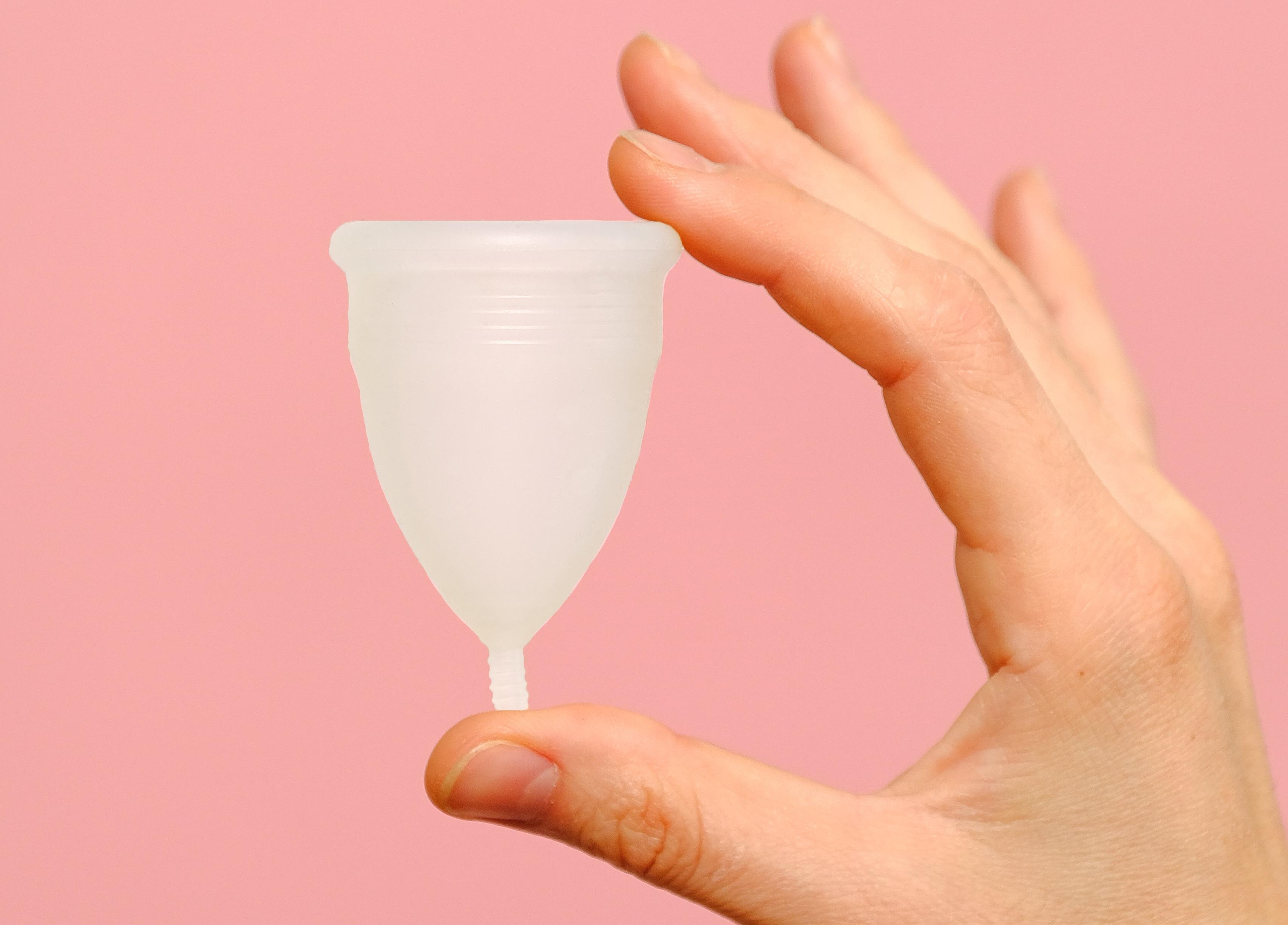
Have you ever wondered whether it’s worth it to invest in a menstrual cup? Well, let me tell you this: menstrual cups are not only the cheapest period product, but are also the safest, most hygienic, most comfortable and the most environmentally friendly. I’m not only talking from experience — I have statistics backing me up. So, whether you’ve been debating getting one or not, hear me out as there are very few reasons not to. Sustainable periods have been a hot topic for quite a while, and not without good reason. Are we unrightfully politicising periods
by pushing women to make their periods sustainable, or do each of us have a responsibility to do so considering the destructibility of the system that we all are partaking in? Well, let me start by saying that freedom of speech and freedom of choice are both fundamental to this piece. What you do with and to your body is yours to decide,
and I want you to read this with your own boundaries in mind. My intention is to deconstruct some of the myths that you might have been hearing about sustainable periods — specifically menstrual cups — because not only are they spreading misinformation, but they are also harming the good incentive that the cups embody.
One of those myths is that menstrual cups are a luxury product, an item for those that are well-off. About one year ago, in one of the toilets in the Arts Building, I came across an advertisement over which someone had scribbled: “a shame to advertise products that so many cannot afford.” The price for menstrual cups ranges between €20–€40, which at first sight might seem like a lot, but, if cleaned properly (I outline below how to), cups have proven to last 10 years. Per decade, the average person who menstruates is known to use up to 2400 tampons alone. With a box of 20 regular tampons from Tampax costing €2.95 and 12 normal pads from Always costing €3.49 — we can conclude that cups are considerably more affordable than non-sustainable period products. A couple of months into using one and you will be saving money on buying single-use items.
I bought my cup in the shop Down to Earth on George’s street for €22, and what stunned me was the comfort that I experienced
upon using it. Tampons frequently cause dryness and irritation, which can make it painful to remove and insert them after a while. This is not surprising since both tampons and pads contain dioxins, toxic chemicals that are the by-product of chlorine bleaching which makes the sanitary products look white. Indeed, pads and tampons contain reproductive toxins such as xylene, phthalates, and toluene to make them more absorbent, adhesive, bleach-white, and odour free. Menstrual cups, however, are made out of medical-grade silicone and contain no toxic chemicals or additives. The insertion is thus pain-free and you cannot feel the cup once it is in place. On top of that, there is very minimal risk of leakage — significantly less than with single-use period products — because the cup sits inside of your vagina and adapts to your movement with its scope being big enough to capture all the blood that you are losing. The cup can be left in place for up to 12 hours. This is because the cup collects blood rather than absorbing it. A cup holds three times as much blood as a tampon, and you are not at risk of getting toxic shock syndrome, a rare infection associated with the usage of the latter. Considering the amount of blood that accumulates in the cup throughout the day means you need to know how to remove it so that you don’t cause a bloody mess.
It is important to highlight that removing a menstrual cup can be tricky the first few times you use one. You need to be comfortable enough with touching your body to insert your thumb and index finger into your vagina, pull at the stem of the cup to get a better grip and slowly squeeze the base of the cup to then carefully remove it. Do not simply pull at the stem of the cup with force, trying to remove it simply by tugging at it (which is what I did the very first time). You need to release the pressure that builds up in the cup in order to remove it correctly. Once emptied and rinsed, you can fold the cup in half and reinsert it. To properly clean the menstrual cup, you boil it for three minutes before you start your period and after it has ended, but in between insertions it suffices to simply rinse it with water before re-inserting it. Removing and reinserting the cup in a public place is uncomfortable when you do not have immediate and private access to a sink. However, since you can leave the cup in place for 12 hours, this has not yet been an issue for me. I always simply empty it in the mornings before leaving the house and in the evenings before bed.
The impact of period-related products on our environment is enormous and underestimated by many. Sustainability expert Leigh Matthews claims that the average person who menstruates throws away 200 kilograms
worth of period-related products in a lifetime. 90% of one single pad is made out of plastic, and consequently it takes about 500 years to break down. In fact, period products are the fifth-most common item found on Europe’s beaches because people dispose of them incorrectly, such as flushing them down the toilet.
If the menstrual cup or the reusable tampons and pads or underwear that are on the market are not your thing, you can buy the organic tampons that are made of only cotton — your body and the planet will thank you for it.
The plastic that can be found in the period products makes periods more uncomfortable than they need to be. I truly noticed that discomfort upon switching back to tampons for a week when I forgot my cup at home. The smell, the feeling and the waste that comes with tampons and pads all make me appreciate menstrual cups so much. Besides being better for our health due to the reduction in toxins and plastic that come in contact with our insides, they are considerably more comfortable and handy than single-use period products. Less of your time will be consumed by tending to the needs of your bleeding uterus. As periods are inevitable for so many of us, limiting the amount of singleuse period products we are using really makes a difference — to the environment as well as your body.
This is not surprising since both tampons and pads contain dioxins, toxic chemicals that are the by-product of chlorine bleaching which makes the sanitary products look whitePHOTO VIA PEXELS BY ANNA SHVETS
The Otolith Group is an artist collective founded in London in 2002 by Anjalika Sagar and Kodwo Eshun, which focuses on the planet and human experience, explored through filmatic practices. Their first large-scale museum exhibition, Xenogenesis, developed in Eindhoven and currently on a world tour, was on show at the Irish Museum of Modern Art (IMMA) from 7 July 2022–12 February 2023.
I attended the exhibition on its closing day and from the minute I walked in, its atmosphere drew me in. Indeed, there is a looming presence in this show; the viewer
senses a pervading force. Although the theme and premise are not obvious at first sight, my overall impression is that the exhibition explores the complexities of technology as it relates to human life and its omnipresent grip over our lives.
The digital footprints left on earth by humankind are primarily approached through the medium of videography. Upon entering the exhibition — a dark room with blue undertones — I was surrounded by ethereal and slightly discordant sounds on the speaker, echoing throughout the room. It took a little while for my senses to adjust to this first work, Anathema (2011) — a 37-minute long HD video compilation of images, patterns, and video samples that aims to exemplify the concept of anthropic inversion. A 37-minute video installation may seem too long and tedious (my initial thought). However, on reclining back on the black dentist-like chairs, the film had myself and my fellow viewers’ undivided attention. Its ethereal and sonic images made us fall into a sort of trance; its topic was the material substrate of liquid crystal technology as an entity that possesses our consumerist society.
With a subject matter that resembled science-fiction, the works on show almost made it seem like technology was invading the earth. I was particularly interested in a shot from Anathema of a reoccurring giant black square, like a screen is out of place in the middle of New York City, similar to films where
Sarah Browne examines the TorinoFilmLab’s Green Lab, in Dublin this March, a sustainability initiative aimed at reducing the industry’s carbon footprint
When we think of film and television, we don’t imagine the screen industry’s output beyond that of its movies, documentaries or series. The industry is one that prides itself on progressive content, especially in relation to environmental activism and climate change. Climate activists are receiving more and more exposure by way of television interviews and advertisements, encouraging viewers to reduce their food waste and energy-
consumption and to stop buying single-use plastic or clothes from the fast-fashion market. Yet, we forget that these screen productions themselves often cause significant environmental damage.
Sustainability is a relatively new conversation in the screen industry, particularly in Ireland. Rising Irish talent has been burgeoning off the back of unparalleled investment in recent years. However, with this wave of expansion and growth comes a responsibility to adopt sustainable practices. Following their most recent report completed in 2018, Screen Ireland revealed that their activities, combined with those of the projects they funded or partly funded, were responsible for a total carbon footprint amounting to 2,127 tonnes — a long way from the net-zero figure industries are being encouraged to work towards.
With the aim of tackling this mounting problem, Screen Ireland welcomed the TorinoFilmLab’s Green Film Lab to Dublin on March 10. The three-day workshop invites selected film professionals and executives from across Ireland to learn how to apply a green protocol in their productions from sustainability experts. The selected professionals will consider their upcoming projects and curate a
an alien spaceship appears on Earth much to the astonishment of humankind. It is an enigma to humanity; this could possibly be a consequence of our digital footprint and the impact it has on our world. In the shot, different shots of hands are constantly reaching out to grasp something inexplicable, connecting us to our everyday technologies and the effects they have on us. The enigmatic black square mobile phone or television screen is a recurring image in the show. It presides in a liminal space and is reminiscent of The Backrooms found footage; an uneasiness of an alien invasion interrupting human life. Xenogenesis demonstrates how technology can be compared to an invasive otherworldly species.
Moving into the second room, the next works are a continuation and adaptation of the first. They, too, are immersive and captivating. In the darkened room, my eyes were drawn to the floor, where a video of a constant stream of rippling patterns was shown, flowing across the screen — an almost magical dimension that looked cosmic and simultaneously technological and cerebral. What
heightened the impact of this installation were the mirrors that were placed at an angle above it, reflecting the patterns above the viewer.
The Otolith Group’s concern to formulate a science fiction narrative of the present, using historical and contemporary images and sounds, is visible in these works. By treating the technologies of “images, voices, sonic images, sounds, and performance” (IMMA) as narratives, the artists of Xenogenesis seek to reimagine the contemporary global and technological crises and explore ways in which humans have shaped the planet and how we respond to new technologies. Although I was initially overwhelmed by the exhibition, after spending a while immersed in the show the premise revealed itself to me, through a multitude of digital images in the first room and the powerful simplicity of the flowing patterns in the adjoining rooms. The concept behind the exhibition is impactful. It is undeniably relevant to our generation, with the rise of artificial intelligence, as we begin to realise and exploit the power of technology.
sustainability plan that aims to implement the best practices in terms of energy-saving, transport, accommodation, catering, set
decoration, waste management, recycling and communication. The experts will advise them in their choice of production methods and technologies and they will be invited to analyse the real or perceived factors that currently stand in the way of implementing sustainable practices. The aim is to reduce the impact of their work on the environment while still safeguarding economical sustainability. If successful, each project will receive certification commending their efforts upon completion.
Established in Italy, the Green Lab is an international initiative with workshops held in various European countries. Their aim is to teach concrete skills that combine sustainability with financial and organisational efficiency. By providing networking opportunities, the Green Lab incentivises participation and furthermore, with its certification, it encourages completion.
Currently, the Green Lab is working towards having its certification recognised as a commonly acknowledged standard across all participating European countries. This would not only allow domestic productions to be credited for their efforts but also promote sustainability in coproductions involving filming in different countries. For smaller countries, whose emissions are dwarfed when considered in comparison to their larger counterparts, this collaborative
effort to reduce carbon emissions across borders is vital. By promoting more than just a single project, the Green Lab supports Screen Ireland’s ambitious mission of encouraging an awareness of sustainable practices in the wider industry.
Beyond its workshops, the Green Lab also works to make environmental protection entities aware of “the audiovisual production sustainability theme”, so that going forward they make targeted and conscious choices when developing measures and regulations.
However, the change that the Green Lab promotes needs to happen quickly and at scale. Training in a practical environment is all well and good in theory, but its immediate implementation is key. Providing opportunities for professionals and executives to deepen their knowledge of their environmental impact enables the industry to work towards a circular screen supply chain that reduces waste and consumption, but it ignores up-and-coming filmmakers. Catering for young professionals emerging in the industry helps to establish good practices so that there is prevention instead of the mere treatment of environmental issues which are continually growing in number. The sustainable choice, both environmentally and financially, is to educate the future of filmmaking and make it green from the word go.
“
The digital footprints left on earth by humankind are primarily approached through the medium of videography
“ Screen Ireland revealed that their activities combined with those of the projects they funded or partly funded were responsible for a total carbon footprint amounting to 2,127 tonnes
9. Anglo-Irish novelist and playwright, graduated TCD 1749, Best known for The Vicar of Wakefield. A TCD hall of residence is named after him (6,9)
10. An Irish county and a street close to TCD (7)
11. A square and a street close to TCD (7)
12. One filled with excessive and single-minded zeal, especially for a religious or political cause (7)
15. A pub, typically a country one, often providing overnight accommodation (3)
16. A foot digit (3)
18. Irish-British statesman and economist; graduated TCD 1748. A lecture theatre is named after him (6,5)
20. ‘You’ to a Cork man! (2)
21. Dublin’s tallest office block (7,4)
25. River and famous Canadian/ American falls (7)
28. In short, those students who have already obtained their primary degrees (9)
30. Abbreviation for ‘exempli gratia’ (2)
31. A marten with short tail anddark brown fur for which it is valued (5)
32. Munster university city (8)
33. Sodium chloride (4)
34. What a solid does when placed in a liquid of lower density (5)
Down
1. It’s an illuminated manuscript book containing the four Gospels in Latin, and it is in the Old Library (4,2,5)
2. Musical instrument; Einstein played it (6)
3. Leave, especially to start a journey (6)
4. A man-eating giant in pantomimes (4)
5. Former students of a university (6)
6. Cause one to no longer be on friendly terms with another (8)
7. What the D stands for in the degree of BD (8)
8. Nationality in the East (7)
13. Ornaments or pieces of jewellery thought to give protection against evil or danger (7)
14. A colloquial taxi driver (5)
17. The body of work of a painter, composer or author; contains UV (6)
19. East African country, bordered by Uganda, Tanzania and Burundi (6)
22. The great river of SW Asia which is a tributary of the Euphrates (6)
23. The capital of Portugal (6)
24. A French definite article (2)
26. Estimate something without sufficient information to be sure of being correct (5)
27. Semi-precious stone consisting of a hard variety of quartz (5)
28. In short, one of the societies based in the GMB (4)
29. Requests (4)

